Australia vs. Chile: Competing for the Same Shelf Space in Europe?
As European wine retailers navigate rising inflation, tighter margins, and shifting consumer preferences, two major Southern Hemisphere producers—Australia and Chile—are increasingly vying for dominance on the same battleground: European retail shelves. Once operating in largely distinct markets, these countries are now colliding in key segments and territories, offering similar products to the same buyers.
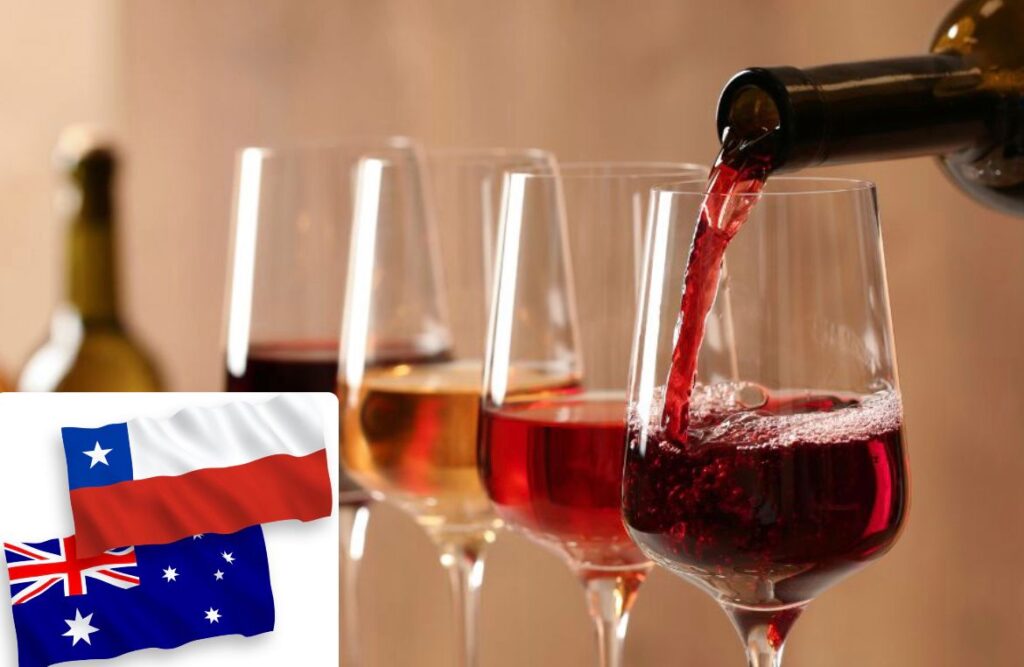
The Rise of Overlapping Export Strategies
Both Australia and Chile have built reputations as reliable sources of high-quality, value-for-money wines. Their portfolios are broad, their exports heavily supported by national marketing bodies, and both have matured into consistent players in the €6–€12 price bracket that dominates European supermarket sales. Traditionally, Australia has maintained a strong foothold in the UK and Ireland, while Chile’s exports have flourished in Germany, the Netherlands, and Scandinavian countries. But in 2025, the dividing lines are fading. Export data shows Chile’s wine shipments to Europe grew 6.1% year-on-year in the second quarter, with notable gains in Northern and Western European markets. At the same time, Australia recorded a 4.8% rebound in its UK and Irish exports, reversing a years-long downward trend post-Brexit and amid changing trade conditions.
Similar Wines, Same Shelf
This overlap is no longer theoretical. Buyers at leading retail chains across Europe report increasingly being pitched near-identical varietals—Sauvignon Blanc from Chile’s Casablanca Valley versus Australia’s Adelaide Hills, Cabernet Sauvignon from Maipo Valley competing with Coonawarra, and Chardonnay from Limarí going up against Margaret River. The wines are similarly styled, similarly priced, and equally well supported by promotional programs. In other words, they’re now fighting for the same shelf slots.
Brand Recognition and Consumer Perception
In terms of brand recognition, Australia retains an advantage in the UK, where names like Yellow Tail and Jacob’s Creek still hold sway among mainstream consumers. However, Chile is making inroads with a newer wave of organic and sustainably positioned wines. Brands like Emiliana and Cono Sur are carving out space in the hearts of eco-conscious shoppers, particularly among millennials and Gen Z.
The Sustainability Factor
The sustainability narrative is playing a larger role in European purchasing decisions, and Chile currently leads in certified sustainable vineyard acreage. That said, Australia is moving quickly to catch up, with its “Sustainable Winegrowing Australia” initiative gaining ground in both domestic operations and global messaging.
Trade Policy and Logistics
Logistics and geopolitics are also shaping the playing field. Chile benefits from an established free trade agreement with the European Union, giving its exporters a modest pricing advantage. Australia, while still negotiating final terms of a post-Brexit trade deal with the EU, has shown positive momentum in 2025, particularly through enhanced cooperation with individual markets like the Netherlands and Ireland.
Retailer Realities and Strategic Choices
From the perspective of European retailers, both countries are becoming increasingly interchangeable, especially at entry and mid-tier price points. Decisions on which wines to list often come down to strategic factors like differentiation, storytelling, and promotional support. A buyer at a mid-sized German supermarket chain recently commented that Chilean whites feel fresher and more vibrant to their consumers, while Australian reds offer more structure and body—traits that resonate well with meat-focused meal occasions.
A Shrinking Shelf and Rising Stakes
The bigger picture is clear: shelf space is limited, and the competition is intensifying. As more private-label programs and local European wines reclaim space post-COVID, both Australia and Chile must work harder to justify their presence. Simply offering good wine at a fair price is no longer enough. Success will depend on targeted branding, consistent quality, flexible logistics, and the ability to help retailers tell a story that connects with their specific market.
Conclusion: A Battle That’s Only Just Begun
Whether this is a long-term collision or a case of parallel coexistence remains to be seen. But one thing is certain—Europe is no longer big enough for both countries to grow without friction. The question is: who will adapt faster?
The Global Wine Market: Trends, Challenges, and Opportunities in 2025
The world of wine, long defined by tradition and heritage, is undergoing profound change. In 2025, the global wine market is experiencing a delicate balance between honoring the old and embracing the new. While the romanticism of vineyards and cellars persists, the business of wine is becoming increasingly dynamic, diverse, and digitally integrated.
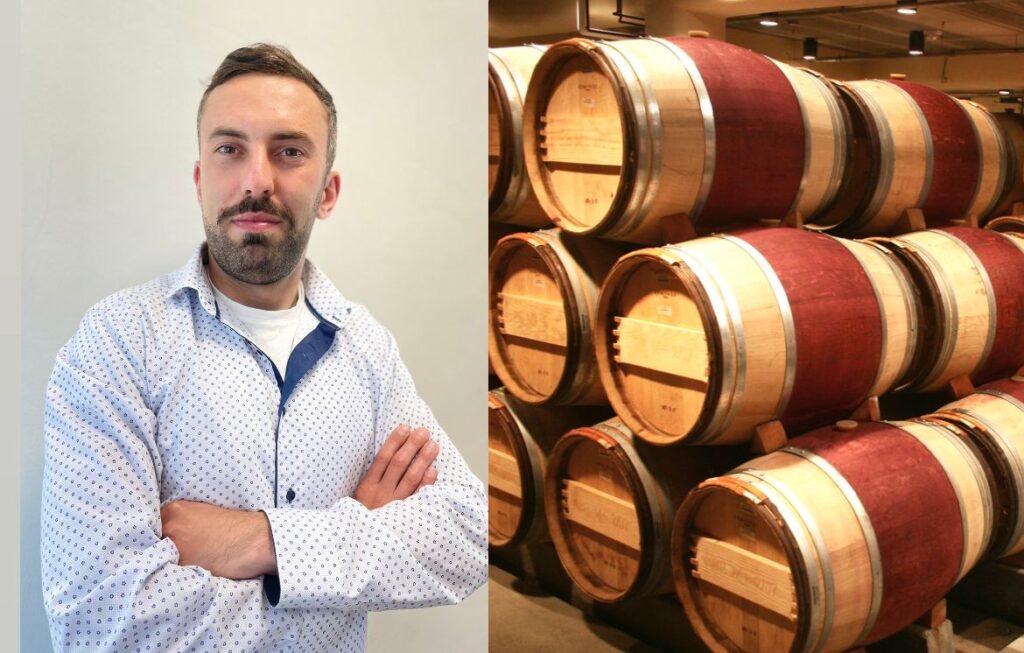
A Global Snapshot
The global wine market is currently valued at over $340 billion, maintaining stable growth despite economic uncertainty and shifting consumption patterns. Europe continues to dominate production, with France, Italy, and Spain leading the charge. However, countries like the United States, Chile, Australia, and South Africa are rapidly expanding their influence, particularly in exports and innovation.
Meanwhile, the Asia-Pacific region has emerged as a major consumption hub. China’s growing middle class, Japan’s premium wine culture, and South Korea’s rising interest in Western lifestyle products are contributing to a surge in demand for both domestic and imported wines.
The Rise of Premium and Purposeful Wine
Consumer tastes are moving upmarket. More people are seeking wines that tell a story—crafted with care, rooted in place, and made with integrity. Small producers, organic vineyards, and biodynamic farms are gaining attention, while mass-market labels face increasing scrutiny.
Natural and low-intervention wines, once on the fringes, are now firmly part of the mainstream conversation. Among younger consumers especially, transparency and sustainability are as important as flavor and price.
Technology in the Vineyard and Beyond
Technology is reshaping nearly every aspect of the wine business. Vineyards are using AI and drones to monitor crops, manage irrigation, and predict harvest quality. In the retail and marketing space, e-commerce continues to boom, fueled by mobile apps, subscription services, and direct-to-consumer platforms.
Digital engagement, from virtual tastings to AR-enhanced wine labels, is bringing the tasting room experience into consumers’ homes. Blockchain is even being used by some producers to verify provenance and combat counterfeiting in the fine wine sector.
Changing Lifestyles, Changing Preferences
Health-conscious consumers are drinking more mindfully, giving rise to a growing market for low-alcohol and alcohol-free wines. These alternatives—once relegated to novelty status—are now enjoying serious investment and innovation. Wines infused with botanicals, adaptogens, or functional ingredients are also carving out a niche.
This shift reflects broader lifestyle changes: wellness culture, moderation, and ethical consumption are increasingly driving decisions at the point of purchase.
Climate Pressure and Environmental Risk
Few industries are as climate-sensitive as wine. In 2025, vineyards around the world are grappling with the impact of extreme weather, from droughts in Spain to unseasonal frosts in France. As a result, traditional wine regions are having to adapt their grape varietals and farming methods, while new players—from Scandinavia to Canada—are entering the viticultural map.
This volatility is accelerating the push toward sustainable and regenerative practices. Consumers now expect eco-conscious production methods, and many wineries are responding with certifications, reduced packaging, and carbon-neutral goals.
The Regulatory Landscape
The wine trade is increasingly complex. Geopolitical tensions, tariffs, and changing import-export rules continue to disrupt global supply chains. Post-Brexit adjustments and evolving EU regulations have reshaped access to key markets, while in the U.S., state-by-state distribution laws remain a major barrier for producers.
Producers and distributors must now navigate a web of compliance challenges to remain competitive internationally.
Connecting with a New Generation
Younger consumers—particularly Millennials and Gen Z—represent both a challenge and an opportunity for the wine industry. While this demographic is less likely to drink wine regularly compared to previous generations, their preferences are shaping product development, branding, and marketing strategies.
Storytelling, sustainability, and social values are essential to earning their loyalty. Wineries that can connect emotionally and digitally with this audience are more likely to succeed.
Markets on the Rise
Opportunities abound in emerging markets. India’s growing urban class, Brazil’s expanding middle-income population, and Southeast Asia’s interest in Western dining habits present strong potential for future growth. These markets, while requiring education and cultural sensitivity, are rapidly maturing in terms of both awareness and accessibility.
A New Era of Wine Tourism
Wine tourism is enjoying a renaissance. With international travel back in full swing, wineries are offering immersive experiences that go far beyond tastings. From vineyard yoga and cooking classes to sustainability tours and luxury retreats, the wine experience has become a lifestyle offering—blending culture, wellness, and gastronomy.
Looking Ahead
The global wine market in 2025 is more complex, creative, and connected than ever before. Innovation and tradition now move side by side, shaping a future that respects the past while embracing the possibilities of change.
For winemakers, investors, and consumers alike, the next few years will offer both challenges and remarkable opportunities—as long as they’re ready to adapt, engage, and evolve.
How Climate Change is Reshaping the Global Wine Industry
Wine has always been more than just a drink—it’s a product of the land, the weather, and the delicate relationship between nature and tradition. For centuries, grape growers have depended on stable seasons and predictable temperatures to create the world’s favorite wines. But today, climate change is disrupting that balance. Rising temperatures, extreme weather, and shifting climates are reshaping the global wine industry in ways that were once unthinkable.
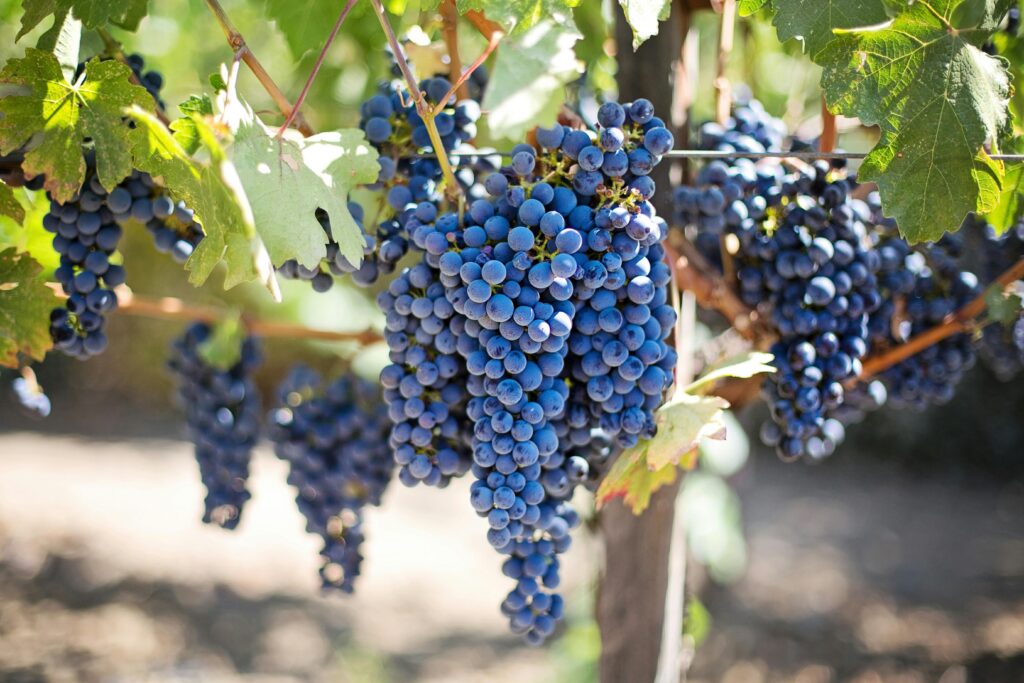
In many classic wine-producing regions such as France, Italy, and Spain, temperatures have been rising steadily. Warmer weather is causing grapes to ripen more quickly than they used to. This might sound good at first, but it often leads to higher sugar levels in the grapes, which creates wines with more alcohol and different flavor profiles. Wines from regions like Bordeaux or Chianti are beginning to taste noticeably different than they did even just 20 years ago. The balance of acidity, sweetness, and aroma is changing—sometimes too quickly for winemakers to adjust.
At the same time, areas that were once considered too cold for vineyards are now becoming new wine-growing regions. Countries like England, Belgium, and even parts of Scandinavia are now producing high-quality wines, particularly sparkling ones. In fact, English sparkling wines have won several international awards in recent years, something that would have been rare in the past. Climate change, while damaging to some traditional regions, is opening doors in unexpected places.
However, climate change is not just about warmer weather. It also brings more extreme and unpredictable conditions. Grape growers are now dealing with spring frosts that arrive after early budding, heavy rains during harvest time, long droughts, and even wildfires. In France in 2021, a sudden frost destroyed nearly one-third of the country’s grape production. In California, wildfires have burned vineyards and left a smoky taste in the grapes that survived. These events are not only costly but also deeply emotional for winemakers who spend years caring for their vines.
To survive, many winemakers are starting to adapt. Some are planting new grape varieties that are more resistant to heat and drought. Others are moving their vineyards to higher altitudes, where it’s cooler, or adjusting the timing of their harvest to match the new climate conditions. These changes aren’t easy, especially for regions with long-standing traditions and strict wine laws. In Bordeaux, for example, it took centuries for the rules to allow even the smallest change in grape types. But now, due to climate pressure, the region has officially approved six new varieties that can handle warmer temperatures and shorter growing seasons.
There is also a growing focus on sustainability within the wine industry. Wineries around the world are beginning to adopt eco-friendly practices such as using solar energy, reducing water waste, and avoiding synthetic chemicals. Some are aiming to become carbon neutral, meaning they take steps to reduce or offset the carbon dioxide they release into the environment. These efforts are not only good for the planet, but they also attract younger consumers who care about where and how their wine is made.
Still, the path forward is not simple. Smaller vineyards, especially those in poorer regions, may not have the money or resources to make big changes. Wine is a business, but it’s also a tradition, a lifestyle, and a cultural symbol. As the climate continues to shift, winemakers will need to balance innovation with tradition, staying true to their heritage while finding new ways to protect their crops and adapt to the future.
In the end, the story of wine and climate change is still being written. What is certain is that winemakers, scientists, and nature itself are all playing a part in shaping what the wine world will look—and taste—like in the years to come. Whether you’re a winemaker, a wine lover, or simply someone who enjoys a glass with dinner, climate change is already in the bottle.
Southeast Asia Becoming a Priority for Premium European Wineries
Southeast Asia is fast becoming the new frontier for premium European wineries. Once a niche market, the region has evolved into a dynamic wine-consuming landscape, driven by a booming middle class, increasing wine literacy, and a strong appetite for luxury experiences. For many top-tier wineries from France, Italy, Spain, and Germany, Southeast Asia is no longer just an emerging market—it’s a strategic priority.

Rising Wealth, Rising Taste
With robust economic growth across nations such as Vietnam, Thailand, Indonesia, and the Philippines, Southeast Asia is witnessing a surge in affluent and aspirational consumers. According to the OECD, the region’s middle class is expected to double in size by 2030, bringing with it an increase in disposable income and an evolving taste for international cuisine and fine wine.
“Ten years ago, we were only exporting to Singapore and Hong Kong,” says Claire Moreau, Export Director at Château Léonore, a Bordeaux-based winery. “Now, we’re seeing significant growth in Vietnam, Thailand, and Malaysia. These consumers are incredibly curious and increasingly sophisticated in their wine preferences.”
Wine Culture on the Rise
Wine education has played a significant role in this transformation. Wine appreciation clubs, sommelier training programs, and social media influencers have introduced Southeast Asian consumers to the nuances of terroir, vintage, and varietal. Major cities like Bangkok, Jakarta, and Ho Chi Minh City now host wine festivals, masterclasses, and tasting events that rival those in more established markets.
Furthermore, fine dining and hospitality have flourished in tandem. Luxury hotels and Michelin-starred restaurants in the region now prioritize curated wine lists, often featuring rare and exclusive labels from Europe.
Logistics and Accessibility Improving
A decade ago, stringent import regulations, high tariffs, and inconsistent logistics posed challenges for European winemakers entering Southeast Asia. Today, these barriers are gradually diminishing. Free trade agreements such as the EU-Vietnam Free Trade Agreement (EVFTA) and better regional distribution networks have improved access and affordability.
“The infrastructure is catching up,” says Marco Bellini, Export Manager for a renowned Barolo producer in Piedmont, Italy. “We now have reliable cold chain logistics, experienced local partners, and more efficient customs procedures. It’s much easier to ensure our wines arrive in perfect condition.”
Singapore and Beyond
While Singapore remains the hub for fine wine in Southeast Asia due to its mature market and strong collector base, other countries are catching up fast. Vietnam’s young professionals, Thailand’s hospitality sector, and Indonesia’s affluent elite are all fueling demand.
E-commerce platforms and digital marketing have also enabled wineries to engage directly with consumers, bypassing traditional distributors and reaching younger demographics through Instagram, TikTok, and online tasting sessions.
Strategic Partnerships and Long-Term Vision
Premium European wineries are not just exporting—they’re investing. Joint ventures with local importers, exclusive distribution agreements, and even vineyard tourism partnerships are becoming more common. The long-term vision is clear: establish a strong brand presence now to capture loyalty as the market matures.
“Southeast Asia is not a trend—it’s a long-term growth engine,” says Moreau. “It represents the future of global wine consumption.”
Conclusion
As wine culture deepens and purchasing power rises across Southeast Asia, premium European wineries are seizing the opportunity to position themselves at the forefront of this vibrant market. With strategic investment, cultural sensitivity, and a focus on education, the region is quickly transforming from a promising prospect to a priority market.
Benelux in the Wine Trade: A Small Region with Big Import Power
When wine professionals think about the major players in global wine trade, the spotlight often falls on large markets like the United States, the United Kingdom, Germany, or China. Yet nestled in the northwest corner of Europe, the Benelux region—Belgium, the Netherlands, and Luxembourg—quietly plays an outsized role in the import, distribution, and re-export of wine across the continent.
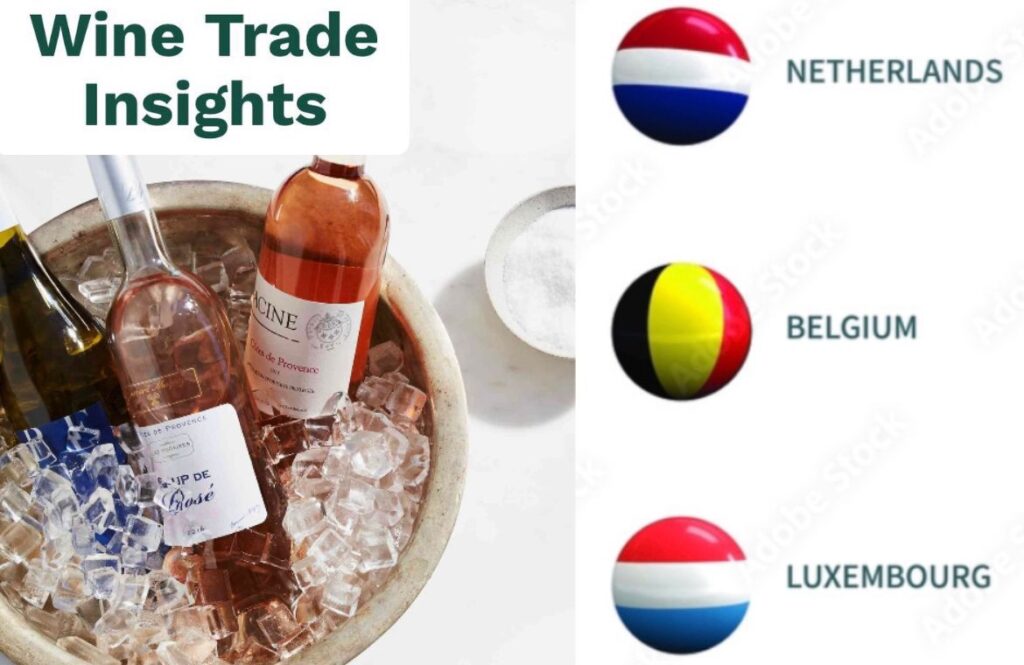
Despite their small size, the Benelux countries act as a vital commercial gateway to Northern and Western Europe. With world-class port infrastructure, sophisticated logistics networks, and evolving consumer markets, they serve both as a landing pad for international producers and as a springboard for broader European access. For exporters looking to scale into Europe strategically, understanding the dynamics of Benelux isn’t optional—it’s essential.
A Strategic Entry Point for Global Wine
The Netherlands and Belgium import more than a billion liters of wine annually, with much of that volume redistributed to other EU countries. The Port of Rotterdam, Europe’s largest and one of the busiest in the world, plays a critical role in facilitating bulk and bottled wine shipments from France, Italy, Spain, Chile, South Africa, and Australia. Antwerp is also a key hub, especially for French and German wine traffic.
For producers outside the European Union, particularly those in the Southern Hemisphere, the logistics efficiency and centrality of Benelux make it an attractive entry point. Wines can be cleared, warehoused, repackaged, and distributed with relative ease to key European retail and horeca (hotel/restaurant/catering) markets from a single location. In effect, Benelux functions as Europe’s wine roundabout.
Evolving Consumer Markets
Consumer behavior in the region is also shifting—becoming more diverse, digital, and sustainability-conscious. In Belgium, traditional preferences for French wine remain strong, but there is rising interest in organic and biodynamic wines, particularly among younger urban consumers. Italian whites and Spanish reds have gained notable traction, driven by competitive pricing and modern branding.
The Netherlands, meanwhile, has emerged as one of Europe’s most progressive wine markets. Dutch consumers are increasingly drawn to low- and no-alcohol options, natural and vegan wines, and sustainable packaging formats such as cans and lightweight bottles. E-commerce continues to gain ground, fueled by digital-savvy consumers who often discover wine via social platforms or digital subscriptions.
Luxembourg, though much smaller, remains a high-value niche market. Its affluent consumers favor premium French and German wines and show a strong interest in terroir-driven offerings.
Price Sensitivity Meets Premiumization
One of the paradoxes of the Benelux region is the balance between price sensitivity and the demand for premium, niche wines. While many consumers seek value—especially in supermarket channels—there is also clear momentum toward wines with a compelling story, sustainable practices, and regional authenticity.
Importers in the region are increasingly looking for unique offerings that combine quality, transparency, and logistical flexibility. Producers who can offer smaller lots, tailored labeling, or storytelling assets such as QR codes or digital traceability tools are finding receptive partners.
The Re-Export Effect
Perhaps one of the most underappreciated aspects of the Benelux wine trade is its re-export function. A significant percentage of the wine imported into the Netherlands and Belgium does not stay there. Instead, it is redistributed to neighboring countries, including Germany, Denmark, Poland, and the Scandinavian markets.
Dutch importers often work with regional supermarket chains or distributors across borders, while Belgian brokers and wholesalers serve as key intermediaries for both traditional and emerging markets. This makes Benelux not just a consumption zone, but a powerful hub within the European wine trade network.
Looking Ahead
Several key opportunities are emerging across the Benelux landscape. The low- and no-alcohol wine category is expanding rapidly, outpacing supply in some cities. Sustainable and certified organic portfolios are no longer niche—they are becoming the expectation in many retail channels. Ecommerce-ready SKUs and wines with compelling digital storytelling are also gaining traction, particularly among millennial and Gen Z consumers.
In the logistics arena, premium bulk wine and private-label solutions are on the rise, especially in the Netherlands. For producers with flexible production models, this represents a growing path to volume and visibility.
Conclusion
The Benelux region may be modest in geographic size and population, but its impact on the global wine trade is anything but small. As both a consumer market and a logistical gateway, Belgium, the Netherlands, and Luxembourg offer a unique combination of access, efficiency, and sophistication.
For producers, brokers, and trade professionals looking to expand into or across Europe, engaging with Benelux isn’t merely an option—it’s a strategic advantage. In a wine market increasingly shaped by agility, sustainability, and storytelling, the region stands as a model of modern wine commerce: compact, connected, and quietly powerful.
New Zealand Sauvignon Blanc Dominating German Supermarkets
In recent years, a new trend has become clear in German supermarkets: New Zealand Sauvignon Blanc is becoming one of the most popular white wines on the shelves. This fresh and fruity wine is winning over both casual wine drinkers and experts across the country.

What Makes It So Popular?
Sauvignon Blanc from New Zealand, especially from the Marlborough region, is known for its bright flavors. It often has notes of citrus fruits like lime and grapefruit, along with tropical hints of passion fruit or pineapple. Many people describe it as crisp, refreshing, and easy to drink. These qualities make it a perfect choice for warm summer days, picnics, or light meals.
German consumers enjoy wines that are full of flavor but not too heavy, and New Zealand Sauvignon Blanc fits this description perfectly. It also pairs well with many types of food, such as fish, chicken, salads, and even spicy dishes like Thai or Indian cuisine.
Strong Presence in Supermarkets
Supermarket chains like Edeka, Rewe, Aldi, and Lidl have noticed this trend. They are offering more choices from New Zealand than ever before. Some stores even have special wine sections featuring bottles from Marlborough and other well-known wine regions in New Zealand.
The prices of these wines are also very competitive. A good-quality Sauvignon Blanc from New Zealand can often be found for under €10, making it an affordable luxury. Beautiful packaging and clear labels also help attract shoppers who may not know much about wine but want something reliable and tasty.
Beating Local and European Wines
Germany is known for its own white wines, like Riesling, and many stores also sell wines from France, Italy, and Spain. However, more and more German customers are reaching for New Zealand bottles instead. Wine experts say that the clean, fresh taste and consistent quality of New Zealand Sauvignon Blanc make it stand out from the crowd.
Some German wine producers see this as healthy competition. Others are trying to learn from the success of New Zealand by improving their marketing or experimenting with new wine styles.
Not Just a Trend
This is not just a passing fashion. Sales numbers show that demand for New Zealand Sauvignon Blanc continues to rise each year in Germany. Younger wine drinkers, especially people in their 20s and 30s, are leading the way. They enjoy the wine’s modern style, and many share their favorites on social media, helping the trend grow even more.
As long as New Zealand keeps producing high-quality wine, and German supermarkets continue to make it easy to buy, it looks like Sauvignon Blanc from the other side of the world will remain a big hit in German homes.
How EU Wineries Can Extend Their Presence in the Asian Market
As global demand for wine continues to shift, Asia has become one of the most attractive and dynamic regions for growth. For wineries across the European Union (EU), this represents both a major opportunity and a complex challenge. While the continent’s heritage and quality position EU producers favorably, succeeding in Asian markets requires cultural fluency, digital agility, and long-term strategic planning.
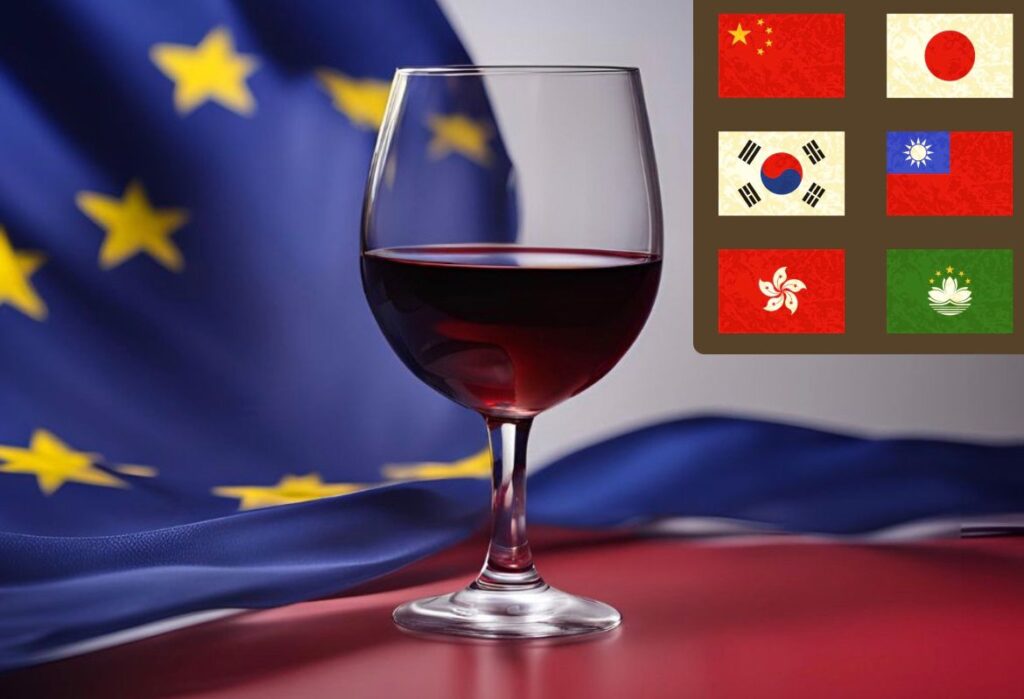
A region of rising demand
Wine consumption in Asia is on a steady upward trajectory. With expanding middle classes, increasing urbanization, and a rising interest in Western lifestyle products, countries such as China, Japan, South Korea, Vietnam, and Thailand are becoming key importers of wine—particularly from Europe. EU exports to Asia have grown significantly in recent years, with China and Japan consistently ranking among the top destinations.
Although traditional wine-drinking cultures are still developing in parts of Asia, the appetite for premium and high-quality products is growing rapidly. EU wineries, renowned for appellation systems and craftsmanship, are well-positioned to meet this demand—provided they approach the market with nuance and care.
Telling the right story
For many Asian consumers, wine is still associated with sophistication, celebration, and Western prestige. This creates a unique opening for EU producers to market their wines not just as beverages, but as cultural experiences. Storytelling is crucial—emphasizing the heritage of a winery, its terroir, and artisanal traditions can help brands stand out.
In markets like China, red wine enjoys particular popularity due to cultural associations with good fortune and vitality. In Japan, wine is often appreciated in the context of food pairing. Producers should communicate how their wines complement Asian cuisines, whether it’s a crisp white with sushi or a bold red with grilled meats.
Educating the market
Wine knowledge in Asia varies greatly between countries and consumer segments. In many cases, potential buyers—both retail and trade—may not be familiar with European classifications or grape varieties. To overcome this barrier, EU wineries need to invest in education.
Hosting tasting events, masterclasses, and training sessions for local sommeliers, hospitality staff, and consumers can foster appreciation and brand loyalty. Collaborations with influencers and wine educators who understand both European wines and local markets can be especially effective.
Digital sales and e-commerce growth
Asia leads the world in digital commerce, and this includes wine. E-commerce platforms such as Tmall, JD.com, Rakuten, and Coupang offer powerful distribution channels. These platforms are more than just online stores—they serve as branding ecosystems, with opportunities for livestream events, influencer partnerships, and curated product storytelling.
EU wineries looking to grow their presence in Asia must prioritize digital visibility. That includes developing localized content, engaging with regional social media platforms, and providing digital tasting experiences that help bridge the physical distance between vineyard and consumer.
Local partnerships and distribution
Strong partnerships with local distributors and importers are key to navigating Asia’s fragmented and regulation-heavy markets. These partners offer valuable insights into consumer behavior, pricing strategy, and route-to-market logistics. A well-connected distributor can also help secure premium placement in retail stores, restaurants, and hotels.
Some EU wineries may consider forming exclusive arrangements or joint ventures to maintain greater control over brand representation and marketing.
Sustainability as a selling point
Environmental awareness is increasing among Asia’s younger wine consumers. Labels that emphasize organic farming, sustainability, and low-intervention winemaking are gaining appeal—especially in markets like Japan, South Korea, and Singapore. EU producers who have invested in green practices should make these values visible and part of their branding strategy.
Certifications, eco-friendly packaging, and transparency in sourcing and production methods are now seen as markers of quality and integrity, not just ethical extras.
Face-to-face exposure still matters
Despite digital advances, physical presence at trade fairs and expos remains essential. Events like ProWine Shanghai, Vinexpo Asia, and Wine & Gourmet Japan offer EU producers direct access to distributors, media, and consumers. They also signal commitment to the region and allow wineries to gather valuable market intelligence.
Navigating challenges
While opportunities abound, EU wineries must prepare for certain challenges. Regulatory complexity, fluctuating tariffs, and logistical hurdles—such as maintaining proper storage temperatures across long shipping routes—require careful planning. Brand protection is also crucial, particularly in China, where counterfeiting has been an issue. Registering trademarks and monitoring distribution channels are necessary steps.
Conclusion: a market worth the investment
Asia offers vast potential for EU wineries, but it rewards patience, adaptability, and cultural understanding. Success goes beyond exporting—it involves becoming part of the local wine culture. By investing in education, embracing digital commerce, forming strong partnerships, and telling compelling brand stories, EU producers can build a strong and lasting presence across Asia.
In a region where wine is still evolving into a mainstream luxury, European producers have the rare opportunity to shape tastes and preferences. For those who get it right, the rewards are not only measurable in sales, but in legacy.
Exploring Croatian Wines: Where History Meets Opportunity
Croatia, known for its Adriatic coast and Mediterranean charm, is increasingly gaining attention for something less expected: its wine. With a winemaking history dating back over 2,500 years and a wealth of native grape varieties, the country is carving out a unique place in the global wine scene.
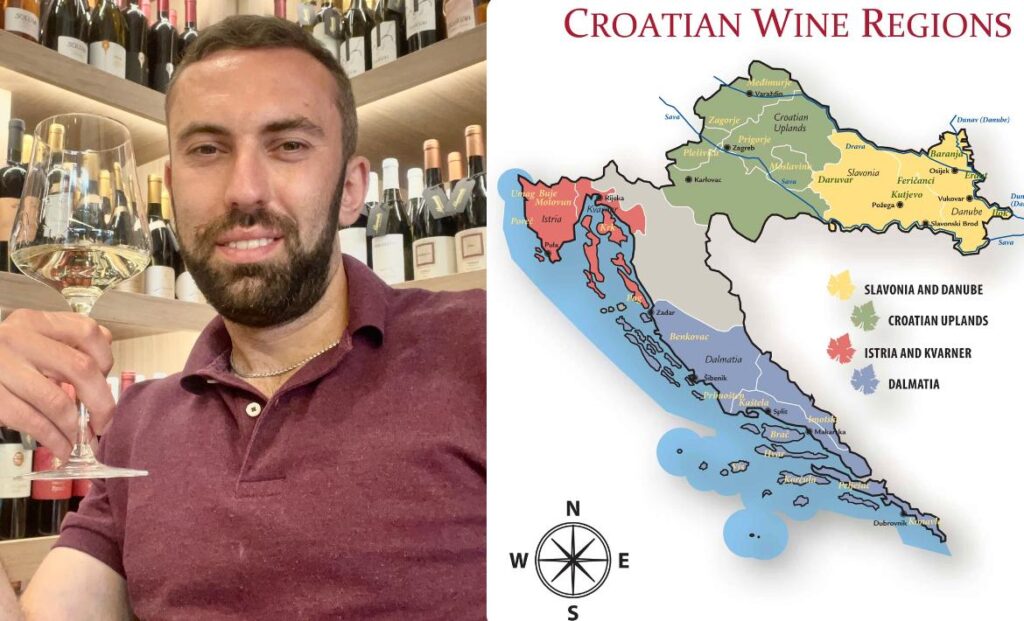
A wine country defined by diversity
What makes Croatia stand out is not just its ancient winemaking tradition, but the remarkable diversity found within its borders. From the sun-drenched islands of Dalmatia to the lush hills of Istria and the cooler inland slopes of Slavonia, the country’s varied climates and soils give rise to a rich spectrum of wine styles.
At the heart of this diversity are Croatia’s indigenous grape varieties—more than 130 of them—many of which are found nowhere else. Malvazija Istarska, known for its crisp, mineral-driven whites, dominates the Istrian Peninsula. Along the Dalmatian coast, Plavac Mali, a bold red grape genetically linked to Zinfandel, produces rich, sun-drenched wines. Pošip, native to the island of Korčula, is increasingly valued for its structure and aromatic lift, while Graševina remains the most widely planted grape in continental Croatia, producing fresh, versatile whites.
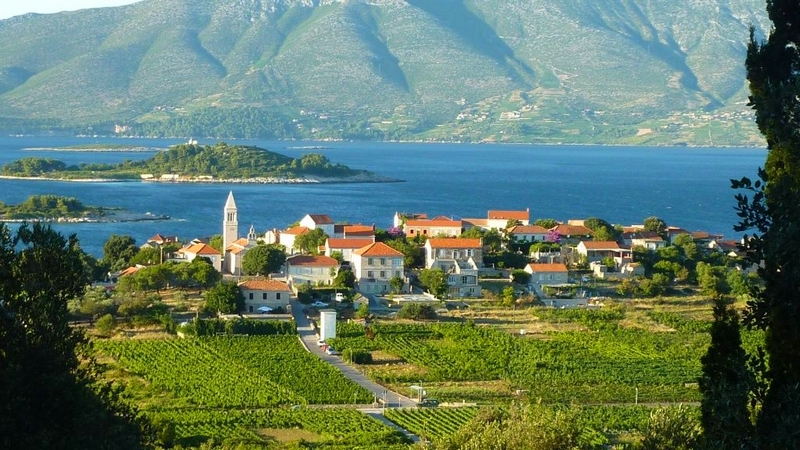
Global markets begin to notice
For decades, Croatian wine remained largely a domestic treasure, but this is changing. Global consumers are increasingly drawn to boutique, terroir-driven wines that offer authenticity and a sense of place—qualities Croatian wines have in abundance.
Tourism has played a significant role in this growth. Visitors who discover Croatian wines on vacation often continue to seek them out back home. Markets such as the United States, United Kingdom, Scandinavia, and Japan are showing growing interest.
Challenges
Despite the promising growth, Croatian wineries face several challenges in expanding their presence internationally. Limited production volumes make large-scale export difficult, and many Croatian grape varieties remain unfamiliar to global consumers, creating marketing hurdles. Brand recognition outside of Europe is still low, and logistical constraints can complicate distribution.
Moreover, many producers are small family-run operations that prioritize quality and tradition over mass production, which while an asset in terms of authenticity, limits economies of scale. Overcoming these challenges requires strategic marketing, investment in export infrastructure, and education to introduce and familiarize consumers with Croatia’s unique wine heritage.

Kozlović Winery: modern tradition in Istria
Among the leaders of Croatia’s wine renaissance is Kozlović Winery, nestled in the Momjan Valley in Istria. The Kozlović family has been producing wine since 1904, and today the estate is a model of how tradition can meet innovation. Their gravity-fed winery, surrounded by terraced vineyards, is as modern as it is respectful of local winemaking heritage.
Kozlović is best known for its Malvazija wines, especially the acclaimed Santa Lucia label, which shows the aging potential and complexity of this native variety. The winery also produces refined Teran reds and aromatic Muscat Momjanski. Kozlović’s commitment to sustainable viticulture and wine tourism has helped position it as one of the most recognized Croatian labels in international markets.
Saint Hills Winery: Dalmatian elegance with global vision
In southern Dalmatia, Saint Hills Winery brings together local grapes and global expertise. The winery cultivates vineyards in three distinct locations: Pelješac, Komarna, and Slavonia. Each site offers a different microclimate, allowing Saint Hills to produce a wide range of wines, from powerful Plavac Mali to elegant white blends.
The winery works closely with renowned French oenologists to craft wines that balance regional character with international style. The result is wines like Sv. Roko (Plavac Mali) and Nevina (a white blend), which have won praise both domestically and abroad. Their beautifully restored estate also offers one of the most immersive wine tourism experiences in Croatia.
Fakin Winery: a young star in the heart of Istria
Located in the hills near Motovun, Fakin Winery has quickly earned a reputation for producing some of Croatia’s most awarded wines, thanks to precise winemaking and a strong commitment to showcasing Istria’s terroir.
Fakin’s Malvazija is known for its freshness and aromatic clarity, while its Teran shows depth and finesse, defying the grape’s rustic reputation. Despite being a small operation, Fakin’s wines are already gaining traction in markets like Germany and Austria, with plans to expand further abroad.
Vina Laguna: gateway to Croatian wine
While boutique wineries lead in innovation, Vina Laguna plays a vital role in bringing Croatian wine to the masses. As part of the Agrolaguna group, Vina Laguna operates on a large commercial scale, producing millions of bottles annually from vineyards across Istria.
The winery focuses on quality at accessible prices, offering a wide portfolio from everyday labels like Vina Laguna Select Malvazija to premium offerings under the Festigia line. Their wines are clean, fruit-forward, and widely distributed—ideal for introducing new audiences to Croatia’s native varietals.
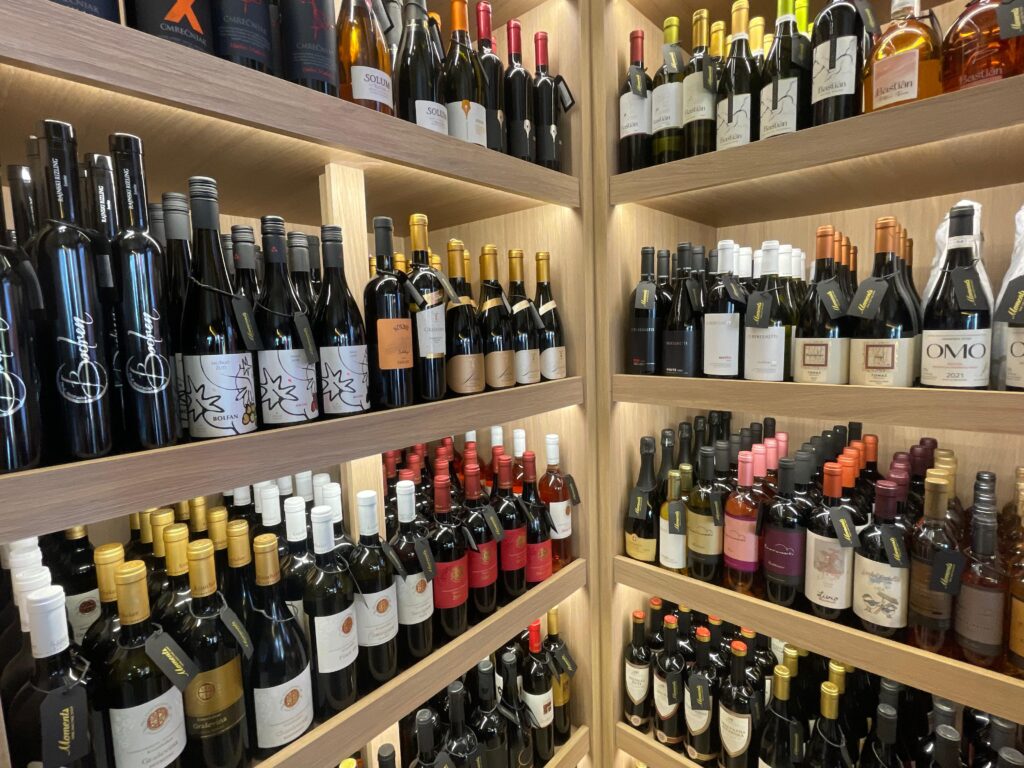
A future full of promise
Croatia may not yet be a household name in global wine, but the momentum is undeniable. With a compelling mix of native grapes, diverse terroirs, and winemakers blending tradition with innovation, the country is poised for greater recognition. Producers like Kozlović, Saint Hills, Fakin, and Vina Laguna are leading the charge—each with their own story, style, and vision.
As the global wine market continues to embrace authenticity and origin, Croatian wine stands ready—not just to participate—but to shine. For curious wine lovers and trade professionals alike, now is the time to explore what Croatia has to offer: distinctive, dynamic, and deeply rooted in place.
How Nordic Countries Are Driving Sustainability in Wine Exports
The Nordic countries—Sweden, Norway, Denmark, Finland, and Iceland—are not known for growing wine, since their climates are too cold for large-scale grape production. However, these countries are having a strong influence on the global wine industry by encouraging more sustainable practices in how wine is made, packaged, and shipped. Even though they don’t produce much wine themselves, they are helping to shape a greener future for wine exports.

Understanding Sustainability in Wine
Sustainability in wine means protecting the environment, saving natural resources, and treating people fairly throughout the production process. This includes using fewer chemicals in vineyards, reducing water usage, switching to renewable energy, and ensuring good working conditions and fair pay for farm workers. It also involves reducing carbon emissions during production and transport, as well as using eco-friendly packaging to cut down on waste and pollution.
Why Sustainability Matters in the Nordic Region
In the Nordic countries, environmental awareness is a big part of everyday life. People are deeply concerned about climate change and want to make choices that are better for the planet. Recycling is common, clean energy is widely used, and public support for eco-friendly policies is strong. This concern extends to the wine they buy. Many consumers want to enjoy wine without supporting harmful practices, so they look for wines that are organic, fair, and responsibly made.
Governments in these countries also support sustainable choices through rules and regulations. Alcohol is sold mainly through government-run retail chains, especially in Sweden, Norway, and Finland. These stores have a lot of influence and use their buying power to promote sustainability.
The Role of Government-Owned Wine Retailers
Sweden’s Systembolaget, Norway’s Vinmonopolet, and Finland’s Alko are state-controlled alcohol stores that play a major role in encouraging sustainable wine production. These stores only purchase wine from producers who follow strict environmental and social standards. For example, Systembolaget has its own sustainability goals and often asks wine producers to show that they are reducing carbon emissions, treating workers fairly, and avoiding harmful chemicals.
Because these Nordic stores buy large amounts of wine, producers from around the world—such as France, Italy, Chile, and South Africa—work hard to meet these high standards so they can keep selling their wine in Nordic markets.
Growing Interest in Organic and Ethical Wines
In addition to government policies, regular wine buyers in the Nordic countries are choosing more organic and ethically certified wines. Organic wines are made without synthetic pesticides or fertilizers, and biodynamic wines follow a natural, farm-based approach. Wines with Fairtrade certification show that workers are treated fairly and receive decent pay. These labels are increasingly important for Nordic consumers who want to know their wine is made in a responsible way.
Packaging and Climate-Friendly Solutions
Glass wine bottles are heavy and require a lot of energy to produce and ship. That means more carbon dioxide is released into the atmosphere during transport. To reduce this impact, the Nordic countries are leading the way in supporting lighter and more sustainable wine packaging. Wine in boxes, recycled bottles, and even cans or paper bottles is becoming more common. These options use less energy, create less waste, and are easier to recycle.
Measuring Carbon Footprints
Another way Nordic countries are promoting sustainability is by asking producers to measure and report their carbon footprints. This means tracking how much carbon dioxide is created during the entire wine-making process, including growing the grapes, producing the wine, and transporting it. If a wine has a high carbon footprint, it may not be accepted by the Nordic alcohol stores. As a result, many producers are making changes, such as using solar panels or choosing more efficient shipping methods, just to meet these expectations.
A Small Region with Big Influence
Even though the Nordic countries have relatively small populations, their demand for sustainable wine is creating real change. Sweden, for example, is one of the top wine importers per person in the world. Because these countries buy so much wine and set high standards, wine producers are improving their practices—not just to help the planet, but also to stay competitive in the market.
Conclusion
The Nordic countries may not be famous for their vineyards, but they are playing an important role in shaping the future of wine around the world. By choosing sustainable, ethical, and environmentally friendly wines, both consumers and governments in the Nordic region are encouraging wine producers to be more responsible. This shows how smart decisions in one part of the world can lead to big, positive changes in global industries.
Direct-to-Consumer (DTC) Wine Sales: Strategies for Success
Direct-to-Consumer (DTC) wine sales have become a popular way for wineries to reach customers directly, without going through distributors or retail stores. This method gives wineries more control over their brand, helps them earn more money per bottle, and creates a closer relationship with wine lovers. In today’s digital world, DTC sales are more important than ever. To succeed, wineries need to use the right tools, share their story, and focus on customer experience.

What DTC Wine Sales Really Mean
Selling wine directly to customers means the winery handles everything—from marketing and taking orders to packaging and delivery. This method allows wineries to avoid sharing profits with middlemen, and it gives them the chance to talk directly with their customers. It’s not just about selling bottles—it’s about creating a long-term connection that brings people back again and again.
Having a Great Website Matters
A good website is one of the most important parts of DTC sales. It’s often the first place where customers learn about a winery and explore its products. The site should be easy to navigate, with clear wine descriptions, attractive photos, and a smooth checkout process. It should also work well on mobile phones, since many people shop on their phones these days. A fast, modern, and user-friendly website helps turn curious visitors into paying customers.
Social Media Builds Relationships
Wineries can use social media to tell their stories and stay in touch with fans. Sharing behind-the-scenes videos, vineyard updates, or even fun facts about wine can create a strong emotional connection. Instagram, Facebook, and TikTok are powerful tools for showing the human side of the winery. By posting regularly and responding to comments, wineries can build trust and keep their audience engaged.
Wine Clubs Keep Customers Coming Back
A wine club is a great way to turn one-time buyers into loyal customers. Members receive shipments of wine on a regular schedule and often enjoy special benefits, such as discounts or early access to new wines. This system provides the winery with steady income and helps build a stronger brand community. When customers feel like they are part of something special, they are more likely to stay loyal and tell their friends.
Events Create Memorable Experiences
Even though DTC is mostly about online sales, real-life experiences still matter. Hosting wine tastings, vineyard tours, and wine dinners helps people connect with the brand in a more personal way. Virtual events, like online tastings or live Q&A sessions, also work well—especially for customers who live far away. These moments create memories and deepen the relationship between the winery and the customer.
Email Is Still Powerful
Email might seem old-fashioned, but it’s still one of the best tools for DTC sales. Through email, wineries can send updates about new releases, special offers, and upcoming events. The key is to keep messages friendly and personal. A well-written email feels like a note from a friend, not just another ad. When customers enjoy reading your emails, they are more likely to click and buy.
Make Shipping Simple and Clear
Shipping wine can be tricky due to laws and regulations in different regions. That’s why it’s important to clearly explain where you can ship, how long it takes, and what the shipping fees are. Offering flat-rate or free shipping on larger orders can help boost sales. Customers also appreciate tracking information and updates on their order status, so they know exactly when their wine will arrive.
Listen to What Customers Say
Feedback from customers is valuable. It can show what’s working and what needs improvement. Wineries should encourage reviews, send follow-up emails after a purchase, or even ask short survey questions. Listening to customers and making small changes based on their input shows that you care—and it can turn a satisfied buyer into a lifelong fan.
A Growing Opportunity
Direct-to-Consumer wine sales offer a powerful way for wineries to grow their business, especially in a digital world. By creating a great online experience, staying in touch through email and social media, and treating customers like part of the family, wineries can stand out from the crowd. DTC isn’t just about selling wine—it’s about building relationships, telling your story, and creating something that lasts.
How Vinmonopolet in Norway Chooses Wine: A System of Tender, Taste, and Transparency
In Norway, you cannot buy wine at a regular supermarket. If you want a bottle of wine or spirits stronger than 4.7% alcohol, you have to go to Vinmonopolet. This is the state-owned alcohol shop, and it is the only legal place to buy these kinds of drinks. While this system may seem strict or old-fashioned to some, many Norwegians support it because of how fairly and carefully it works.
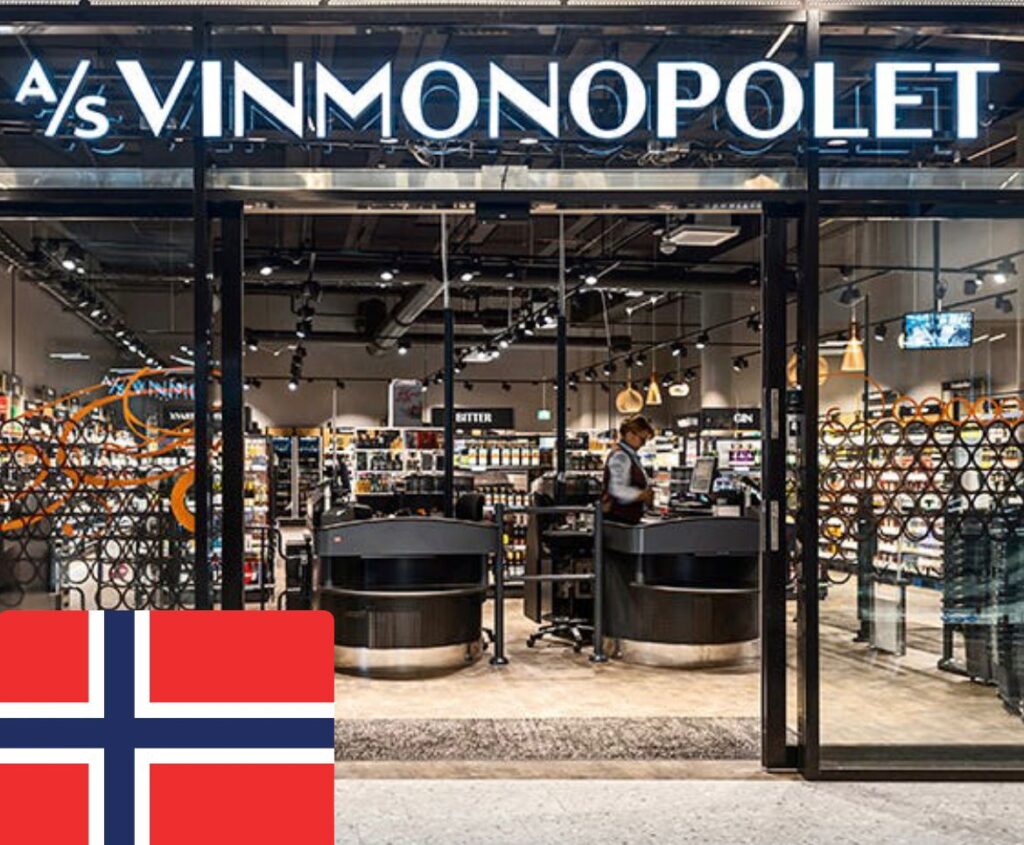
The tender system
The first step in choosing wine is the tender. This means Vinmonopolet publishes a public request for a specific type of wine. For example, they might say they are looking for an organic red wine from southern France, or a dry Riesling from Germany, or a budget-friendly sparkling wine for the holiday season.
These tenders are published several months ahead of time, so importers and wine producers have time to prepare. The rules are very specific. They might include details like the grape variety, price level, type of farming (such as organic), packaging, and even what kind of closure the bottle must have (like cork or screw cap). Anyone who can meet the requirements can send in a wine sample to compete.
This open process gives small producers and new wine regions a fair chance to enter the Norwegian market. It’s not just about big global brands—it’s about meeting the standards set in the tender. This way, Vinmonopolet avoids favoritism or behind-the-scenes deals.
The tasting process
After all the wines are submitted, a group of trained wine professionals at Vinmonopolet taste them blind. Blind tasting means the tasters do not know which producer made the wine. They don’t see the label, bottle shape, or brand. All they know is the wine inside the glass.
These tasters judge the wine based on its smell, taste, balance, and how well it fits the tender’s requirements. Only the wines that score highest are selected. This part of the process is strict and detailed, but it helps ensure that the final selection is based on quality and fit—not marketing or name recognition.
This also means that consumers can trust that the wines on the shelf have been professionally judged and chosen for a reason.
Transparency and fairness
One of the things that makes Vinmonopolet different from private alcohol stores in other countries is how transparent it is. All the tenders and results are made public. If a wine wins a tender and is chosen, the importer and product details are published. If a wine does not win, the importer can ask for feedback.
Vinmonopolet also does not take money from wine producers for advertising or promotions. There are no special deals to get better shelf placement. All products are treated equally, and staff are trained to give neutral, honest advice to customers.
There is also a strong focus on ethics and sustainability. Vinmonopolet asks importers to check that the producers they work with follow human rights laws, treat workers fairly, and protect the environment. Some tenders even require organic or fair trade certification.
Why this matters for consumers
Because of this system, customers in Norway can enjoy a wide range of wines from all over the world—many of which are not easy to find in regular stores elsewhere. You’ll find everything from well-known French and Italian labels to lesser-known producers in Georgia, South Africa, Uruguay, and beyond. Vinmonopolet also makes an effort to include alcohol-free wines, organic wines, and eco-friendly packaging.
People living in small towns and rural areas still have access to the same products as those in Oslo. There are over 300 stores across the country, and online ordering with home delivery or pickup makes it even easier to access the full selection.
A different kind of wine market
Vinmonopolet is not trying to sell as much wine as possible. Its goal is to offer good service, educate people about alcohol, and reduce harm. In fact, the company often shares information about responsible drinking and supports campaigns to prevent alcohol abuse.
This careful and balanced approach has made Vinmonopolet one of the most respected alcohol retailers in the world. It’s a rare example of how a state-owned monopoly can work well—protecting public health while still giving people high-quality choices.
Although the system is not perfect, and some people wish for more freedom or lower prices, many Norwegians are proud of Vinmonopolet’s role. It shows that fairness, expertise, and clear rules can create a better way to enjoy wine—one that values quality, not just quantity.
The Role of Wine Brokers: How They Influence Global Trade
Wine is one of the oldest and most traded products in the world. But behind the beauty of a perfectly aged red or a crisp white is a complex business that spans countries, languages, and cultures. One of the key players in this business is the wine broker. Though they often work behind the scenes, wine brokers are a major force in moving wine from vineyards to consumers around the globe.
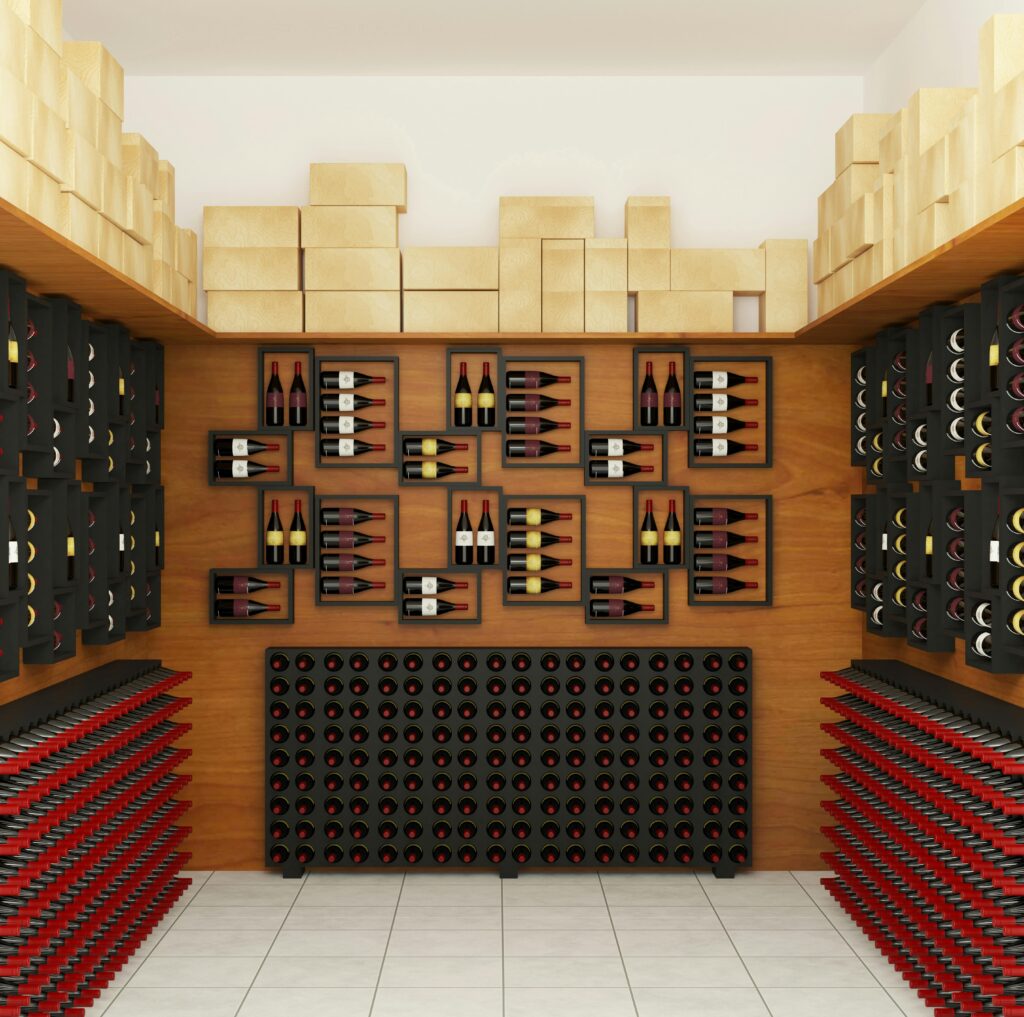
At its core, a wine broker acts as a link between wine producers—such as vineyards and wineries—and buyers, which include importers, wholesalers, distributors, retailers, restaurants, and even private collectors. Unlike agents or distributors, brokers typically don’t buy the wine themselves. Instead, they arrange deals, offer expert advice, and help both sides get the best value. In return, they earn a commission for each successful sale.
Brokers are experts in both wine and the market. They stay informed about global trends, consumer preferences, and price fluctuations. For example, they might know that there’s rising interest in organic wines in Scandinavia or that rosé sales are booming in the U.S. Armed with this knowledge, they guide producers on where to sell their wine and what styles or price points are most attractive in each region.
For wineries—especially small and mid-sized ones—wine brokers are often the first step toward going international. Many producers focus most of their energy on making great wine, but they may not have the resources or experience to deal with international markets. A wine broker can open those doors, making introductions and offering valuable advice on how to label, price, and position wines for success in foreign markets.
Brokers also play a key role in pricing negotiations. They understand the financial needs of producers and the budget limits of buyers. Because they are neutral parties with a foot in both worlds, they can often find a middle ground that satisfies everyone. Their role helps to speed up the decision-making process and reduce costly miscommunication.
Another major responsibility of wine brokers is quality assurance. Many brokers taste every wine they represent. They need to be confident in what they’re promoting, not only to protect their reputation, but also to build trust with buyers. Some even visit wineries to see how the wine is made, ensuring it meets certain standards or certifications.
In the background, wine brokers also manage a lot of technical details. International wine trade involves complicated logistics—customs forms, taxes, shipping rules, storage conditions, and more. A skilled broker helps manage this paperwork and ensures that shipments comply with both the producer’s and buyer’s country regulations. This part of the job is crucial, especially as trade rules continue to evolve in many countries.
Wine brokers also bring benefits to buyers. For importers and retailers, brokers help save time by presenting carefully selected wines that match their needs. They might suggest wines that are exclusive, limited-edition, or a great value—products that set a business apart from the competition. Because of their industry contacts and knowledge, brokers can often introduce buyers to hidden gems they wouldn’t find on their own.
The influence of wine brokers on global trade is growing every year. As wine markets in Asia, Africa, and Latin America expand, the need for trusted intermediaries is more important than ever. E-commerce and digital wine sales have also added complexity, creating opportunities for brokers to assist with online partnerships, virtual tastings, and direct-to-consumer logistics.
In short, wine brokers are connectors, problem-solvers, and business strategists. They help wines move from rural vineyards in places like France, Chile, or South Africa to wine bars in Tokyo, supermarkets in New York, or boutique hotels in Sydney. They support economic growth by giving producers access to wider markets and giving buyers more options and better value.
Although they rarely get the spotlight, wine brokers are the quiet champions of the wine industry. Their knowledge, relationships, and behind-the-scenes work help drive the global wine trade forward—bottle by bottle, glass by glass.
Boutique Wine Importers in Denmark: A Growing Opportunity for Winemakers
The Danish wine market is growing quietly but steadily, with more consumers reaching for quality wines over mass-produced bottles. Denmark may be a small country, but its people are curious, open-minded, and increasingly passionate about artisanal products. For small wine producers, this creates an interesting opportunity—especially through boutique wine importers.
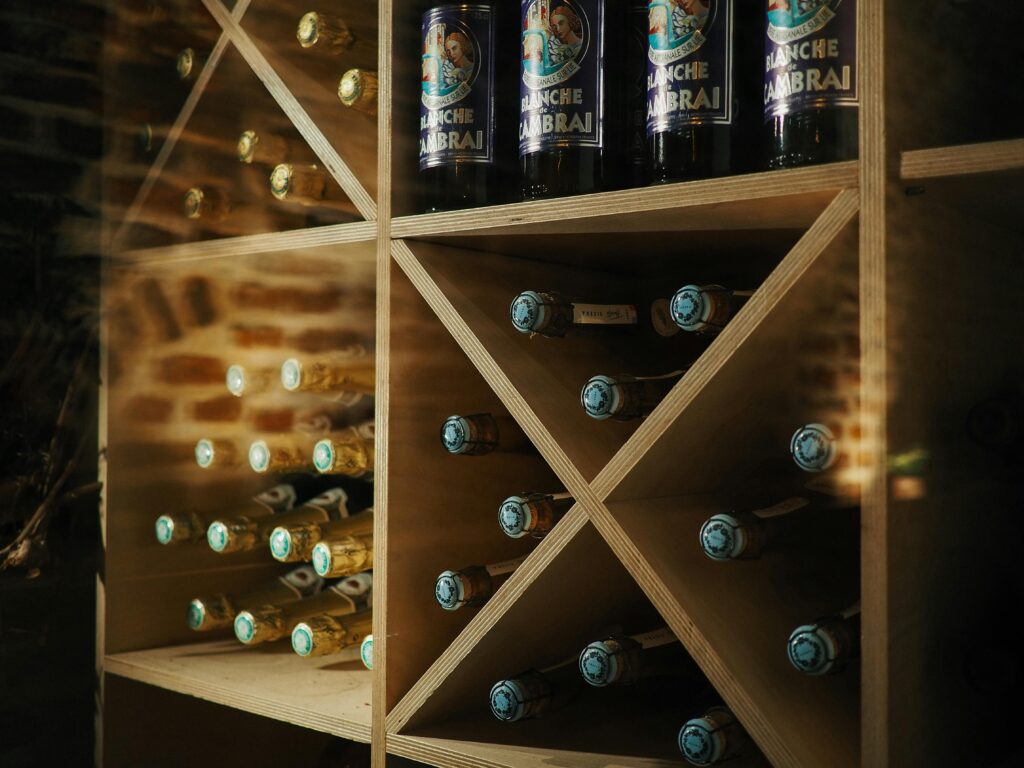
What is a boutique wine importer?
A boutique wine importer is a small company that specializes in carefully selected wines, often from independent or family-run producers. These importers don’t look for quantity; they look for quality, uniqueness, and a connection to the people behind the wine. They often avoid supermarket chains and instead work with restaurants, wine bars, private buyers, and high-end wine shops. They take pride in representing wines with soul, whether that means organic, biodynamic, natural, or simply expressive of their origin.
Why Denmark is interesting for small producers
Wine consumption in Denmark has been rising, particularly among younger adults who want something more than just the usual red or white. They are seeking out wines with a story—wines made with care, by real people, in special places. Copenhagen has become known for its creative food and wine culture, with sommeliers and wine lovers always searching for something new and exciting. Danish consumers are also more environmentally conscious, which makes wines with organic or sustainable certification even more appealing.
What Danish importers are looking for
Most boutique importers in Denmark are not interested in mass-produced wines or large-scale operations. Instead, they look for authenticity. That could mean a natural wine from a small vineyard in Georgia, a classic Burgundy made in small quantities, or an orange wine from a family farm in Slovenia. Importers appreciate direct relationships, honest communication, and a clear identity behind the wine. They often want to taste the wine themselves, learn the story, and perhaps even visit the winery if the partnership develops.
How to connect with importers
If you’re a wine producer looking to enter the Danish market, it’s important to be ready with a good introduction to your winery and your wines. Danish importers are often happy to receive samples if they are interested. They may discover you at international wine fairs, through social media, or via wine-focused platforms. Having a good online presence can be very helpful. Be honest, be clear about your production style, and show what makes your wine special—not just in taste, but in the way it is made.
A few names to know
Denmark has several well-known boutique importers that focus on unique wines. Rosforth & Rosforth is a pioneer in natural wine and works with many producers from France, Italy, and beyond. Vinova specializes in organic and biodynamic wines from Europe, with a strong focus on quality and sustainability. Domaine Brandis supplies top restaurants in Denmark with high-end wines, often from well-known small estates. There are many others, each with their own taste and philosophy. The key is to find an importer whose values align with yours.
The opportunity ahead
For winemakers who care deeply about what they do and want to find thoughtful partners, Denmark can be a rewarding market. Danish boutique importers are not just looking for products to sell—they are looking for long-term relationships with producers who share their passion for honest, expressive wine. If that sounds like you, Denmark might just be the next step in your wine’s journey.
How Wine Brands Can Build Loyalty in an Increasingly Competitive Market
In today’s crowded wine industry, standing out is no longer just about having a great product. With more brands entering the market and consumers having endless options at their fingertips, loyalty has become the true prize. Building strong relationships with customers isn’t just smart—it’s essential. Here’s how wine brands can create lasting loyalty in a world full of choices.
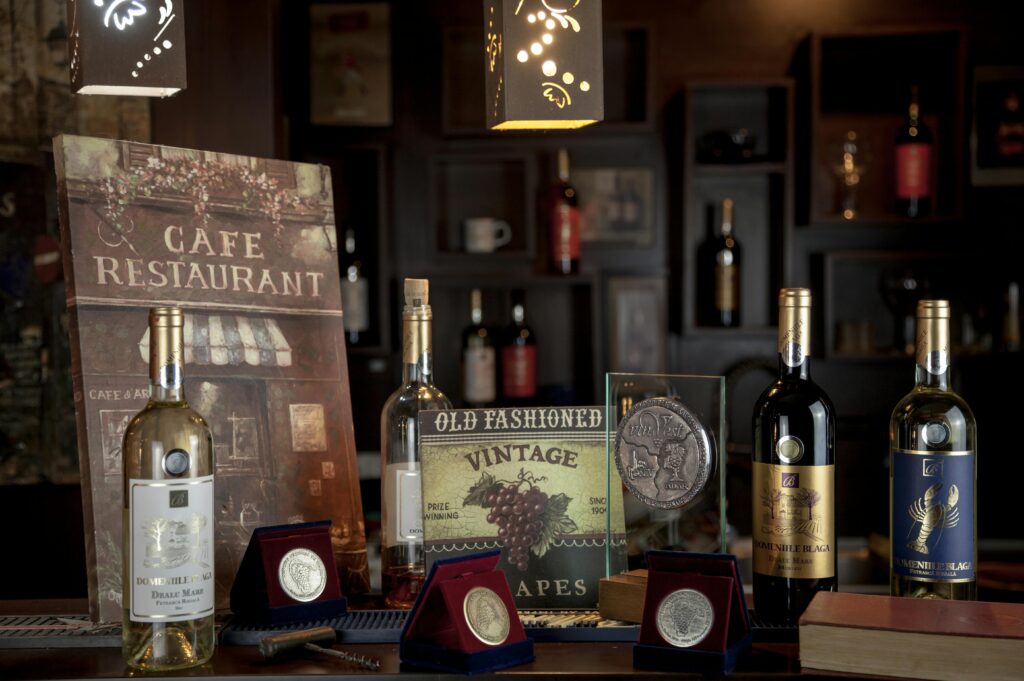
1.Tell a compelling brand story
People don’t just buy wine—they buy the story behind it. Whether it’s a family-owned vineyard with generations of tradition or a bold new label experimenting with sustainable methods, your story matters. Be authentic. Share what makes your wine unique on your website, social media, and packaging. When customers feel connected to your journey, they’re more likely to stick around.
2.Focus on quality and consistency
This might sound obvious, but it’s worth repeating: make excellent wine, and keep it consistent. Loyal customers come back because they trust they’ll enjoy the same quality each time. Invest in high standards, listen to customer feedback, and continuously refine your craft. Trust builds loyalty—and quality builds trust.
3.Create memorable experiences
Wine is about more than taste—it’s about experience. Hosting tastings, vineyard tours, or virtual events gives customers a deeper connection to your brand. Consider wine clubs that offer exclusive access to new releases or behind-the-scenes content. Experiences create emotions, and emotions create memories. That’s what keeps people coming back.
4.Leverage digital channels smartly
In today’s market, digital presence is crucial. Use social media to show the human side of your brand—share harvest photos, meet-the-winemaker stories, or food pairing tips. Engage with your followers, respond to comments, and build an online community. A well-designed email newsletter can also keep your brand top of mind and promote loyalty programs or special offers.
5.Offer a great loyalty program
Reward repeat customers with something more than just a “thank you.” A well-designed loyalty program—whether it’s points-based, tiered, or subscription-based—can keep customers coming back. Offer discounts, early access to limited releases, or members-only events. Make them feel valued and appreciated.
6.Embrace sustainability and transparency
Modern wine consumers care about how their wine is made. Are your grapes organically grown? Do you use sustainable packaging? Are your workers treated fairly? Being open about your practices—and showing that you care—can earn long-term trust. People want to support brands that align with their values.
7.Collaborate and innovate
Partnering with chefs, local businesses, or influencers can introduce your brand to new audiences. Try limited-edition collaborations or seasonal releases that create buzz. Innovation—whether in the wine itself or in how it’s marketed—shows that your brand is forward-thinking and engaged with the world around it.
8.In conclusion
Loyalty isn’t built in a day—it’s earned through consistent quality, honest storytelling, meaningful engagement, and genuine care for your customers. In an increasingly competitive wine market, brands that take the time to connect with their audience on a deeper level will not only survive—but thrive.
Familia Torres’ Commitment to Sustainable Wine Exports
Familia Torres is one of the most famous and respected wine families in Spain, with a history that goes back to 1870. For five generations, they have been making high-quality wines, not just for Spain, but for people all over the world. From the beginning, the Torres family understood that nature is a very important part of winemaking. Without healthy vineyards, clean water, and fresh air, it is impossible to create great wines.
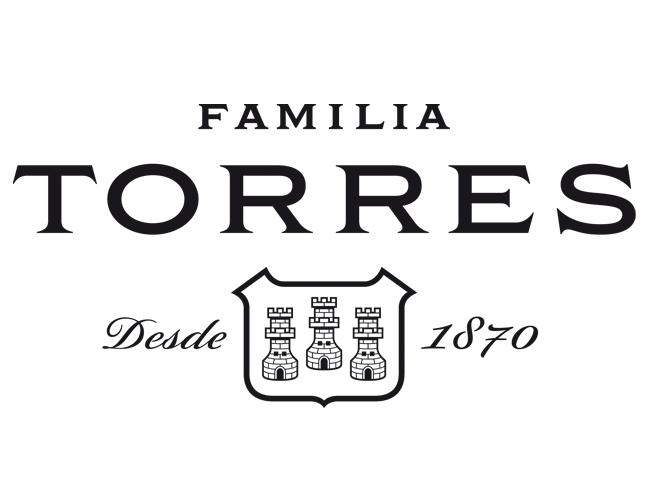
Because of this, they have always taken care of their land. They believe that protecting the environment is not only good for the planet, but it also helps them to produce better grapes and better wine. Over the years, they have introduced many eco-friendly practices in their vineyards and wineries. Their strong connection to nature has now become one of the main parts of their business. As they export their wines to more and more countries, they continue to make sure their work respects the Earth.
Reducing Carbon Emissions
One of the biggest threats to the environment today is climate change, which is caused by too much carbon dioxide and other harmful gases in the air. Familia Torres decided many years ago that they wanted to lead the wine industry in fighting climate change. In 2008, they launched a special project to reduce their carbon footprint, and since then, they have made amazing progress.
First, they switched to using clean, renewable energy sources like solar panels and wind power at their wineries. This helps them avoid using energy that comes from burning fossil fuels, which cause pollution. They also designed new systems to save water and energy during the winemaking process.
When it comes to exporting their wine, they choose the most eco-friendly ways to transport their products. Instead of using planes, which create a lot of pollution, they prefer slower but greener options like sea transport. Even the trucks they use are selected carefully to make sure they produce as little pollution as possible.
Another way they fight climate change is by planting trees and protecting forests. Trees naturally remove carbon dioxide from the air, making the atmosphere cleaner. In fact, Familia Torres is part of several international projects that focus on reforestation and protecting natural ecosystems.
Their goal is clear and ambitious: they want to reduce their carbon emissions by 90% by the year 2050. They know it is a big challenge, but they are fully committed to making it happen.
Working Together for a Better Future
Familia Torres believes that real change can only happen when people work together. They know that they cannot save the environment alone. That’s why they actively cooperate with other wine producers, farmers, researchers, and environmental groups. They are founding members of “International Wineries for Climate Action” (IWCA), an organization that brings wineries together to share solutions and take serious action against climate change.
They also organize educational programs for farmers to teach them about sustainable farming methods, such as reducing pesticide use, saving water, and encouraging biodiversity by planting different types of plants around the vineyards. Biodiversity helps create healthier and stronger vineyards.
In their own vineyards, they practice organic and regenerative farming. These methods focus on improving the health of the soil, increasing the natural strength of the vines, and helping local wildlife.
For Familia Torres, protecting the environment is not just a trend — it is a duty. They believe that wine is a gift from nature, and it must be made with respect and responsibility. Their vision is to leave a legacy, not just of great wines, but of a cleaner, greener world for future generations to enjoy.
Luxembourg Wine 2024: A Small Country with a Global Reach
In 2024, Luxembourg’s wine sector faced a tough growing season, but still delivered with resilience and craftsmanship. Winemakers across the Moselle region brought in an estimated 7.7 million liters of wine—a noticeable drop compared to past years. This lower yield was largely caused by spring frosts and bouts of fungal disease that impacted vines early on. Even so, producers remain optimistic about the vintage’s potential, suggesting that what’s lost in quantity might be made up for in quality.

Despite its compact size, Luxembourg holds a firm spot on the international wine map. In 2023, the country exported nearly $22 million worth of wine, proving that demand for its bottles stretches far beyond its borders. The biggest fans of Luxembourgish wine include Belgium, Canada, Germany, Hong Kong, and Finland. Belgium alone accounted for more than $6.6 million of that export figure. A large part of this success can be credited to Crémant de Luxembourg—an elegant sparkling wine made in the traditional method. Interestingly, Luxembourg is officially allowed to use the label “crémant,” which speaks to its reputation and compliance with high standards.
The variety of grapes grown in the country is surprisingly broad, given its small vineyard area. Winegrowers cultivate grapes such as Rivaner, Auxerrois, Riesling, Pinot Blanc, Pinot Gris, and Pinot Noir, creating everything from crisp whites to more complex aromatic wines. There are even rare offerings like ice wine and straw wine produced when the weather conditions are just right.
Luxembourg places a strong emphasis on quality control. Before wines hit the shelves, they’re assessed for clarity, aroma, and flavor. Only those that pass strict evaluation are awarded the “Marque Nationale” seal—a symbol of trust and excellence. More recently, sustainability has become a core focus in vineyards. Many producers are embracing eco-conscious practices, such as reducing chemical use and turning to natural pest deterrents.
Wine isn’t just a business in Luxembourg—it’s also a cultural cornerstone. Throughout the year, the country hosts lively celebrations of its wine heritage. Each September, the Grevenmacher Grape and Wine Festival lights up the Moselle valley with parades, tastings, and the ceremonial crowning of the Wine Queen. In winter, “Wine Lights Enjoy” transforms the landscape into a glowing path of light installations and cozy tastings, inviting visitors to experience the vineyards in a whole new way.
Even with a challenging harvest, 2024 reaffirmed that Luxembourg’s wine industry is built on more than just favorable weather—it’s about dedication, tradition, and constant evolution. This quiet corner of Europe continues to win hearts around the world, one bottle at a time.
Wine Investment Trends: Which Regions and Varieties Are Gaining Value?
Wine is no longer just a drink to enjoy with a good meal. For many, it has become a smart and exciting form of investment. Fine wines can grow in value over time, especially when they are rare, high-quality, and in demand. As global interest in wine continues to expand, both traditional wine regions and emerging producers are catching the eyes of investors. So, which regions and grape varieties are gaining value? The answer is a mix of the expected and the surprising.
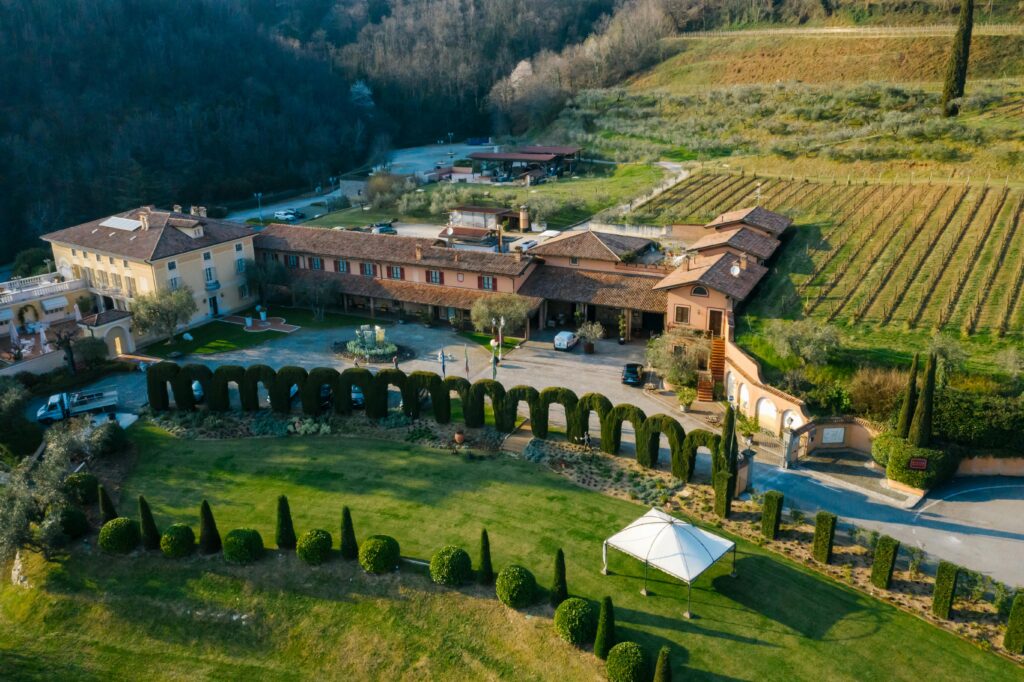
When people think of wine investment, they often start with France—and for good reason. Bordeaux is a classic region known for its powerful red blends made mainly from Cabernet Sauvignon and Merlot. Top names like Château Margaux, Château Lafite Rothschild, and Château Latour have a long history of increasing in value. These wines are often made in large but limited batches, and their ability to age beautifully makes them highly desirable.
Burgundy, another French region, is also a major player, but with a different approach. Here, the focus is on single-variety wines, mainly Pinot Noir and Chardonnay. Due to small vineyard sizes and low production, Burgundy wines are very rare, especially from famous producers like Domaine de la Romanée-Conti. This scarcity has led to rapid price increases in recent years.
Moving south, Italy has proven to be a strong and growing force in wine investment. Tuscany is known for elegant reds like Brunello di Montalcino and bold blends known as Super Tuscans, which often include Cabernet Sauvignon, Merlot, and Sangiovese. Meanwhile, Piedmont is home to Barolo and Barbaresco, made from the Nebbiolo grape. These wines are complex, age-worthy, and increasingly valuable as Italian wines gain more global recognition.
Across the Atlantic, Napa Valley in California is the most famous U.S. wine region. Napa wines, especially premium Cabernet Sauvignon from producers like Screaming Eagle and Harlan Estate, have fetched high prices at auctions. Although still relatively new to the world of wine investment compared to Europe, Napa wines offer a strong brand identity, high quality, and limited production—three key ingredients for long-term value.
But investment-worthy wine isn’t just coming from France, Italy, and the U.S. The global wine map is expanding, and smart investors are starting to look at lesser-known regions that are making serious progress in quality and reputation.
Take Eastern Europe, for example. Hungary has a long tradition of winemaking and is famous for its sweet Tokaji Aszú, once known as “the wine of kings.” Today, Tokaji is making a comeback among collectors. Hungarian dry wines made from the Furmint grape are also gaining attention for their freshness and aging ability.
Romania is another Eastern European country with growing promise. It has large vineyard areas, improving wine quality, and native grapes like Fetească Neagră that are starting to stand out. These wines are still very affordable, offering potential for investors looking for hidden gems.
Georgia has perhaps the most unique story. Widely considered the birthplace of wine, Georgia has over 8,000 years of winemaking history and uses ancient methods involving clay vessels called qvevris. The Saperavi grape, used to make bold and structured reds, is gaining global attention. Georgian wines combine deep tradition with growing international interest, which is promising for future investment.
Right next to Georgia is Armenia, another country with one of the oldest winemaking traditions in the world. In fact, the oldest known winery—over 6,000 years old—was discovered in a cave in Armenia’s Areni region. Armenian wine is now experiencing a revival, with a new generation of producers focusing on quality and export. Indigenous grapes like Areni Noir, which grows at high elevations in volcanic soil, are producing elegant, age-worthy reds that are gaining respect internationally. As Armenian wines continue to earn medals in competitions and appear on wine lists around the world, they are becoming an exciting prospect for forward-thinking investors.
Turning to Africa, South Africa leads the way. With famous regions like Stellenbosch, the country produces world-class wines from Syrah, Cabernet Sauvignon, and its signature grape, Pinotage. South African wines have improved dramatically in quality, and a few top producers are starting to enter the fine wine market. Their prices are still relatively low, which leaves room for growth.
Even Morocco is entering the wine conversation. Though less known globally, Morocco has a long wine history and is now producing exciting wines in cooler, higher-altitude regions. Grapes like Grenache, Syrah, and Cabernet thrive there. Some boutique producers are beginning to attract attention for their high-quality and uniquely spiced wines.
Further afield Lebanon is making notable contribution. Lebanon’s Château Musar, in particular, has gained a cult following. Its rich, earthy reds from the Bekaa Valley are known for aging well and offering something different.
Even the types of grapes investors are focusing on are expanding. While Cabernet Sauvignon, Pinot Noir, and Chardonnay remain strong, grapes like Nebbiolo, Sangiovese, Riesling, Furmint, Saperavi, Areni Noir, and others are catching up. These offer unique characteristics, ageability, and often come from regions where prices are still modest—making them attractive for long-term value.
Technology is also changing the wine investment world. Online platforms now allow investors to buy, sell, and store wine more easily. Digital tools like blockchain are helping prove the origin and history of each bottle, adding trust and transparency to the market. As wine becomes more accessible and more global, new investors from Asia, the Middle East, and South America are joining in, pushing demand even higher.
In the end, wine investment is about more than just money. It’s about culture, discovery, and the pleasure of owning something rare and beautiful. While the old favorites like Bordeaux and Burgundy will likely always have a place in fine wine cellars, the real excitement today lies in looking beyond the obvious—toward the mountains of Georgia and Armenia, the valleys of South Africa, and the ancient hillsides of Lebanon. That’s where the next generation of wine treasures may be waiting.
Retail vs. Restaurant Wine Sales
When it comes to buying wine, people usually have two main choices: they can either go to a store (retail) or order wine at a restaurant. Even though the wine itself might be the same, the way it is sold and enjoyed can be very different. Retail wine sales and restaurant wine sales each have their own special features, and both offer unique experiences.
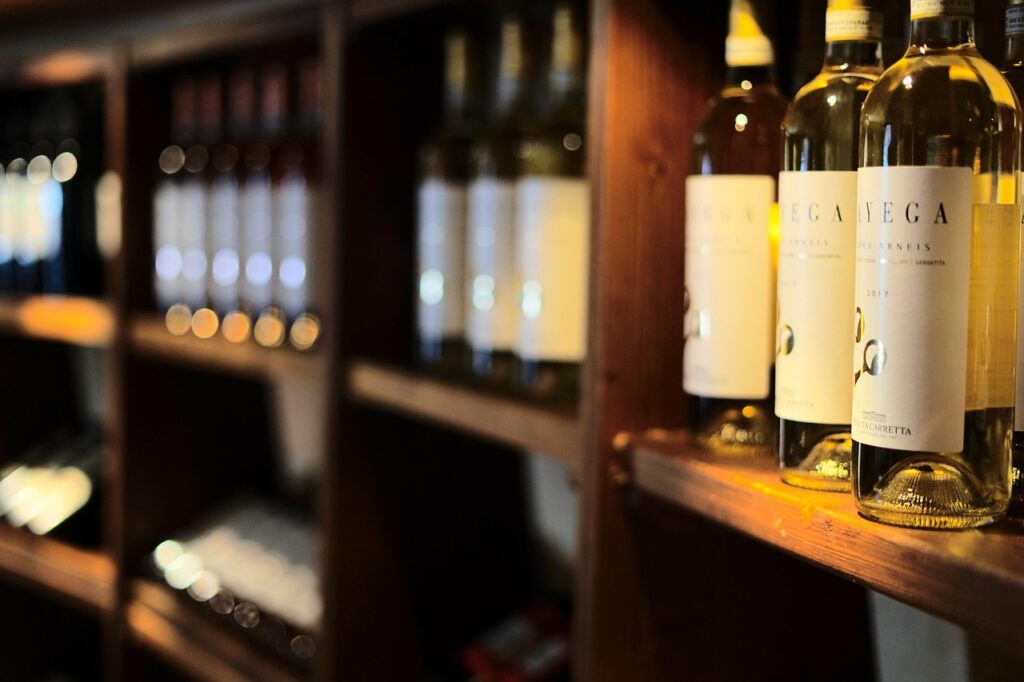
In retail stores, wine is sold for people to take home. This could be a big supermarket, a small wine shop, or even an online store. The prices are usually lower than in restaurants because the store only adds a small profit to the original cost of the wine. People can often find a wide selection of wines from different countries and regions. They have the chance to read the labels, ask for advice from the staff, and even look up information on their phones before buying. It is a more relaxed experience because there is no rush. People can take their time to choose a bottle that fits their taste and budget. Also, buying wine at a store means you can enjoy it in your own way — whether that’s at a family dinner, a party, or just a quiet evening at home.
On the other hand, wine sales in restaurants are very different. When people order wine with their meal, they are not just paying for the wine itself. They are also paying for the service, the atmosphere, and the experience. That is why the price of a bottle in a restaurant is often much higher than in a store. Restaurants usually mark up their wine prices two to three times or even more. However, many people do not mind because they are enjoying a full experience: the food, the service, the company, and the special feeling that comes with eating out.
In restaurants, wine lists are often carefully selected by a sommelier, who is a wine expert. They choose wines that go well with the food the restaurant serves. The choices might be smaller compared to a retail store, but they are often more focused. If you are unsure what wine to order, the sommelier or waiter can help you pick something that matches your meal perfectly. This is a service you do not usually get when buying wine at a store.
Another big difference is how people think about wine when they are buying it. In retail, people usually look for value. They want good quality for a good price. In restaurants, people often want the wine to make their meal feel more special. They are willing to spend more because the wine is part of a bigger experience. Also, when you buy wine at a store, you are usually thinking ahead — for a dinner next weekend, for a gift, or for your personal collection. In a restaurant, you are living in the moment, enjoying the wine right there and then.
Both retail and restaurant wine sales are important for the wine business. Retail stores help people discover new wines and build habits of drinking wine at home. Restaurants, on the other hand, help introduce people to wines they might not usually try. Sometimes a person might love a wine they had at dinner and later go to a store to find it. This shows how retail and restaurant wine sales can work together.
In the end, whether you are buying wine at a store or ordering it at a restaurant, it is all about the experience you want. Some days you might enjoy the slow, thoughtful process of picking out a bottle at the store. Other days, you might want the easy pleasure of having a good wine served with a delicious meal. Both ways have their beauty, and both help people enjoy the wonderful world of wine.
Inside the Rise of Sustainable and Organic Wineries
Wine has been a part of human life for thousands of years. People have enjoyed it at meals, celebrations, and special events. Today, a new way of making wine is becoming more popular: sustainable and organic wineries. Many people now care about where their wine comes from and how it is made. They want to know that it is good for the planet, for their health, and for the people who produce it.
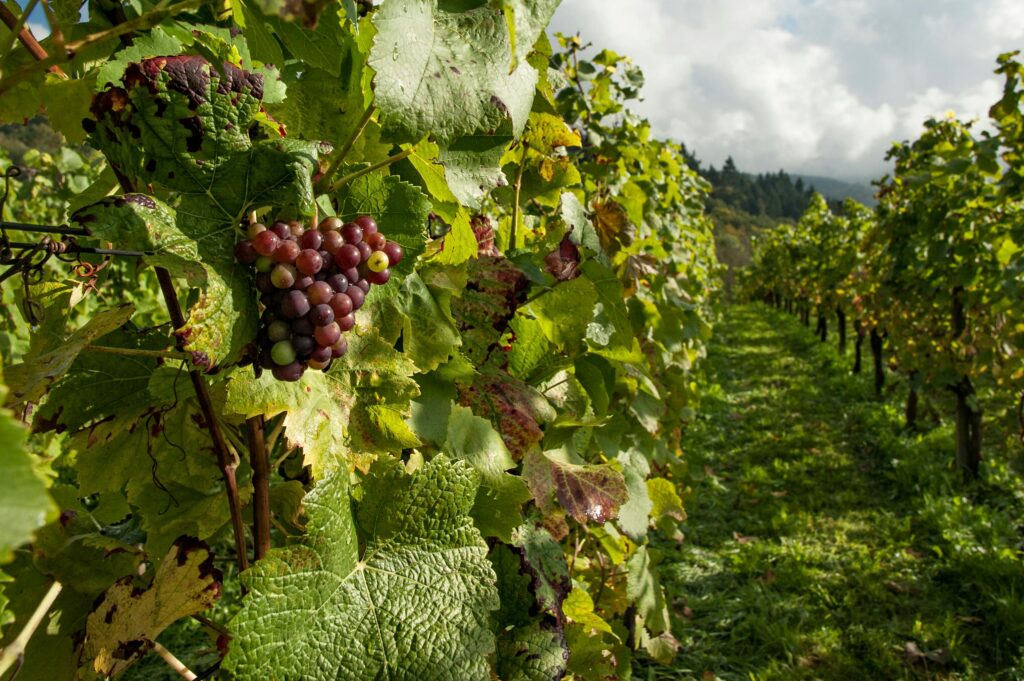
Sustainable wineries try to make wine without hurting the environment. They use methods that save water, energy, and land. Instead of using strong chemicals, they find natural ways to protect the grapes from pests and diseases. For example, they might plant flowers and other plants near the vineyards to attract helpful insects that eat harmful bugs. They also use compost and natural fertilizers to keep the soil healthy. Many sustainable wineries try to use less machinery, which helps to lower pollution in the air and the ground.
Organic wineries take it a step further. They do not use any artificial chemicals, like pesticides or fertilizers. Everything they use must come from nature. They believe that healthy soil makes better grapes, and better grapes make better wine. Some organic winemakers even use animals like sheep, chickens, or ducks to help manage weeds and pests. These animals live freely between the rows of vines, helping to keep the land clean and balanced.
This way of making wine is not always easy. It takes a lot of time, care, and hard work. Farmers must watch their vineyards closely and respond quickly to any problems. Sometimes, growing grapes organically or sustainably is more expensive because natural methods can take longer and need more effort. However, many winemakers believe it is worth it. They say that organic and sustainable methods create wines with stronger, purer, and more natural flavors that truly show the taste of the land.
Customers are starting to agree. Around the world, more people are asking for organic and sustainable wines. They want products that are better for their health and better for the planet. Supermarkets, restaurants, and wine shops are offering more of these wines every year.
Governments and wine groups are also supporting this change. They offer special certificates or labels to wineries that follow organic or sustainable rules. These labels help customers easily find wines that are made with care for nature. In some countries, there are even laws that guide how organic wine must be made.
The rise of sustainable and organic wineries is changing the wine world. It shows that people can make great wine while also protecting the earth. It brings back old traditions of working closely with nature, while also using new knowledge about the environment. As more wineries join this movement, the future of wine looks greener, healthier, and brighter.
The Biggest Wine Industry Deals of the Year
The wine industry saw some major shake-ups over the past year, with big-name companies making moves that could shape the future of how we drink, buy, and think about wine. From billion-dollar takeovers to luxury brand expansions, 2024 and early 2025 were filled with high-stakes deals that showed just how quickly the wine world is changing.
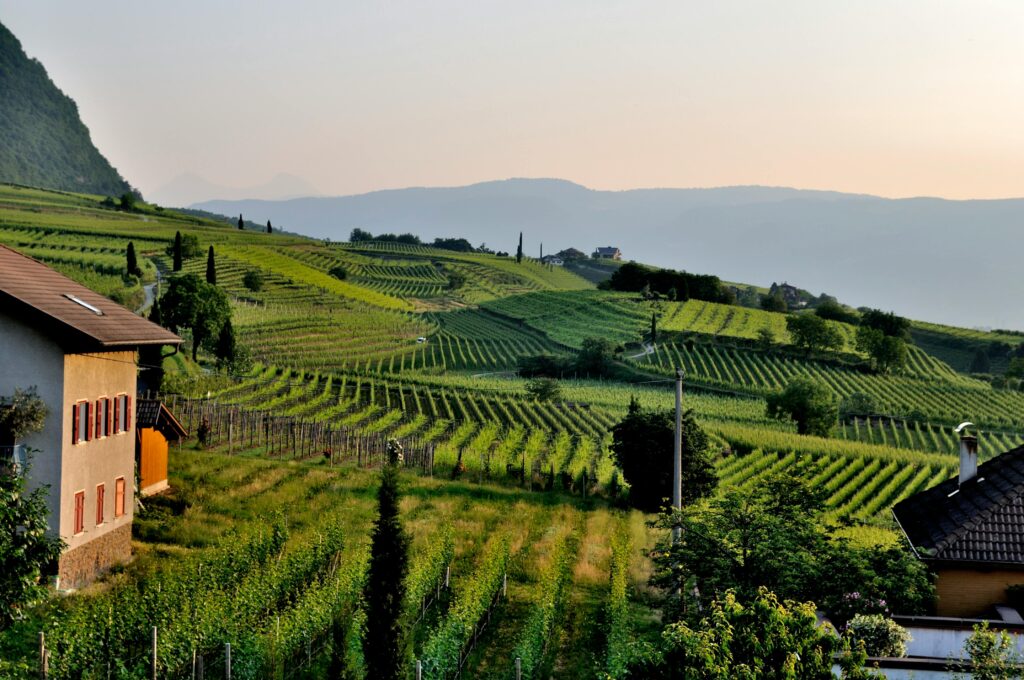
One of the most talked-about deals was Duckhorn Portfolio’s $400 million purchase of Sonoma-Cutrer Vineyards. Sonoma-Cutrer, famous for its award-winning Chardonnay, was sold by Brown-Forman, the same company behind Jack Daniel’s whiskey. This move helps Duckhorn strengthen its position in the premium wine market, adding another top-tier label to its growing list of California brands. It’s a clear sign that the industry is shifting toward quality over quantity.
Constellation Brands, another major player, continued to double down on premium wines. After selling off many of its cheaper labels in the past few years, the company is now focusing on upscale names like Robert Mondavi and The Prisoner Wine Company. The strategy is simple: while overall wine consumption is slowly decreasing in some markets, people are willing to spend more on better bottles. So instead of selling lots of low-cost wine, companies are now competing to offer the best high-end experiences.
Luxury powerhouse LVMH also made waves this year by investing more heavily in sparkling wines. Best known for Champagne giants like Moët & Chandon and Dom Pérignon, LVMH has turned its attention to Italy’s popular Prosecco region. Sparkling wine is more popular than ever—no longer just for weddings and New Year’s Eve. Younger drinkers are enjoying bubbly on regular nights out, and LVMH wants to lead that charge across the globe.
Meanwhile, technology continues to play a bigger role in the wine business. Online platforms like Wine.com, Drizly, and Vivino saw a rise in partnerships and investment. Some offer personalized wine recommendations using AI, while others make it easier than ever for wineries to sell directly to customers. After the boom in online shopping during the pandemic, this digital trend is clearly here to stay.
It’s not just happening in the U.S., either. In Europe and Latin America, wineries are joining forces to expand globally and lower production costs. Smaller producers in countries like Chile, Argentina, and Spain are working with international distributors to bring their bottles to new markets, especially Asia and North America.
All of these moves point to a major shift in the wine world. Big companies are betting on fewer, better bottles. They’re leaning into luxury, expanding internationally, and using technology to meet modern customers where they are. While the wine industry may be old, it’s proving that it knows how to adapt—and still raise a glass to the future.
The Role of Women in the Wine Industry: Breaking Barriers and Setting Trends
The wine industry has historically been a male-dominated field, but in recent years, women have been making significant strides, breaking barriers, and setting new trends. From vineyard management to winemaking, marketing, and leadership roles, women are reshaping the industry and bringing fresh perspectives that are enhancing the quality and diversity of wine worldwide.

Breaking Barriers
For centuries, women faced challenges in entering and advancing in the wine industry due to cultural and institutional barriers. Traditional gender roles often restricted their involvement to minor roles rather than leadership positions. However, determined women have defied these expectations, proving their expertise and passion for winemaking. Today, many women are taking center stage in prestigious wineries, earning accolades and recognition for their contributions.
Women winemakers and vineyard owners have demonstrated resilience and innovation, helping to shift perceptions and open doors for future generations. Organizations such as Women of the Vine & Spirits have been instrumental in advocating for gender diversity and providing resources to support women in the industry.
Setting Trends
Beyond breaking barriers, women are influencing the future of winemaking through innovation and sustainability. Many female winemakers are leading the charge in organic and biodynamic practices, prioritizing environmental responsibility and producing high-quality wines with minimal intervention. Their approach often emphasizes balance, finesse, and terroir expression, appealing to modern consumers who seek authenticity in their wine choices.
Additionally, women have played a pivotal role in expanding wine education and consumer engagement. Through social media, wine clubs, and educational programs, female professionals are making wine more accessible and inclusive. Their efforts have helped to demystify the wine world, encouraging a more diverse audience to appreciate and explore different wine styles.
Notable Women in the Wine Industry
Several women have paved the way for greater gender diversity in the wine industry. Pioneers like Madeline Triffon, the first female Master Sommelier in the U.S., and Lalou Bize-Leroy, a visionary in biodynamic winemaking in Burgundy, have set high standards and inspired future generations. Modern leaders such as Cathy Corison of Corison Winery and Laura Catena of Bodega Catena Zapata continue to push boundaries with their innovative approaches.
The Future of Women in Wine
The progress of women in the wine industry is undeniable, but there is still work to be done to achieve full equality. Mentorship programs, equal pay initiatives, and increased representation in leadership positions are essential to fostering lasting change. As more women enter the field and excel in their roles, the industry will continue to evolve in exciting and progressive ways.
Women in the wine industry are not only breaking barriers but also setting trends that shape the future of winemaking. Their influence extends from vineyard practices to marketing strategies, ensuring that wine remains a dynamic and inclusive industry for generations to come.
Millennials vs. Gen Z: Who’s Really Driving Wine Sales?
Wine has been a favorite drink for many generations, but when it comes to sales today, who is buying more—Millennials or Gen Z? Both groups have different tastes, spending habits, and ways of enjoying wine, which makes this an interesting debate.

Millennials, born between 1981 and 1996, have been big supporters of the wine industry for years. They enjoy trying different types of wine, whether it’s red, white, or sparkling. Many Millennials like to explore wine culture, visit vineyards, and even join wine clubs. They are also willing to spend more money on high-quality wines because they see wine as an experience rather than just a drink. For them, pairing wine with food, social gatherings, and relaxation is a big part of their lifestyle.
On the other hand, Gen Z, born between 1997 and 2012, is just starting to step into the wine market. Unlike Millennials, Gen Z drinks less alcohol overall, but when they do, they look for something unique. They prefer wines that are organic, natural, and sustainable. Many of them care about how a wine is made and whether it has an eco-friendly label. Unlike Millennials, who enjoy classic wine traditions, Gen Z likes to experiment. They are more open to canned wines, fun flavors, and social media trends that make wine drinking more modern and exciting.
While Millennials still buy more wine overall, Gen Z is quickly becoming an important part of the market. The wine industry is paying attention to both groups, trying to create products that match their preferences. Whether it’s a traditional bottle for a fancy dinner or a creative new wine in a can for a casual hangout, there is something for everyone. In the end, both Millennials and Gen Z are shaping the future of wine in their own ways.
Emerging Wine Markets: Where Is the Next Big Growth?
The wine industry is always changing, and new countries are starting to consume more wine than ever before. While France, Italy, and Spain have long been the leaders, other markets are quickly growing and showing great potential for the future.
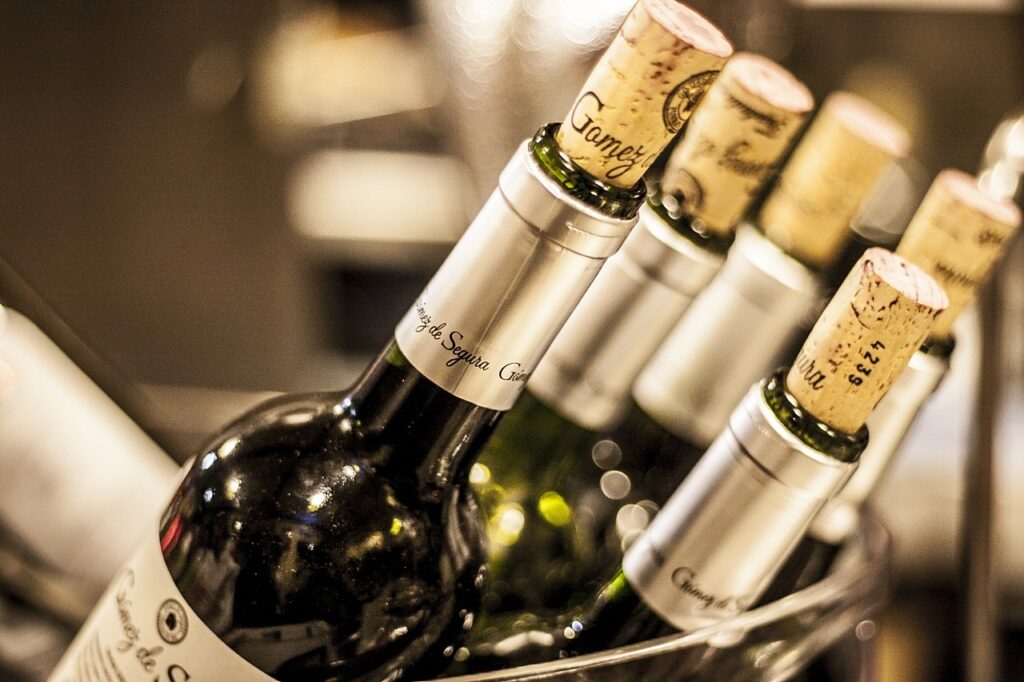
One of the biggest areas of growth is in Asia. China has become one of the top consumers of wine, with more people showing interest in fine wines. Red wine is especially popular, and younger generations are developing a taste for different varieties. India is another country where wine consumption is increasing. As the middle class grows and people look for new experiences, more wine bars and stores are opening, making it easier for people to try different wines.
Africa is also an exciting region for wine consumption. While South Africa has a strong wine culture, other countries like Kenya and Nigeria are seeing a rise in demand. More African consumers are exploring wine, and imports from major wine-producing countries are increasing to meet this demand. Wine is becoming a preferred drink at social events and celebrations, further driving its popularity.
In South America, Brazil is emerging as a key wine consumer. More people in Brazil are drinking wine, and the country is seeing a shift from traditional beer consumption to wine. Wine festivals, tastings, and online sales are making wine more accessible to consumers. This change is helping boost the overall market and encouraging more international imports.
Eastern Europe is also experiencing an increase in wine consumption. Countries like Poland and Hungary, which traditionally preferred beer and spirits, are now seeing more people choosing wine. As disposable income rises, consumers are willing to spend more on high-quality wines, and wine culture is becoming more mainstream in these countries.
The global wine market is expanding, and many new regions are embracing wine as a popular beverage. As wine consumption continues to rise in these countries, we can expect to see new trends, flavors, and business opportunities. The future of wine is exciting, and the next big growth may come from places we least expect.
How Mobile Apps Are Changing the Way Consumers Buy Wine
Mobile apps have changed the way people buy wine. In the past, choosing the right bottle of wine could be confusing. People had to rely on store employees or take a guess. Now, with just a few taps on a smartphone, consumers can find the perfect wine with ease.

Many wine apps help users by giving them information about different types of wine. Apps like Vivino allow users to scan labels, read reviews, and get expert opinions. This helps buyers feel more confident about their choices. Instead of guessing, they can make an informed decision based on what others say about the wine.
Another way mobile apps are helping is through price comparison. Some apps, such as Wine-Searcher, let users check the prices of wines at different stores. This helps people find the best deals without having to visit multiple stores. It saves time and money, making wine shopping much easier.
Mobile apps also offer personalized recommendations. Based on previous purchases and ratings, apps like Delectable suggest wines that match the user’s taste. This makes it easier for consumers to discover new wines they might enjoy. It also helps them remember past purchases, so they can buy their favorite wines again.
Many apps also offer delivery services. Instead of going to a store, users can order wine from their phones and have it delivered to their homes. Drizly, for example, allows users to browse local retailers and have wine delivered in under an hour. This is especially helpful for people who live far from wine shops or those who want convenience. Some apps even allow users to subscribe to monthly wine boxes, such as Winc, so they always have new wines to try.
Social features are another benefit of wine apps. Users can share their wine experiences with friends and family. Apps like Vivino and Delectable allow users to post reviews, rate wines, and even see what their friends are drinking. This makes buying wine more fun and interactive.
Mobile apps are changing the wine-buying experience in many ways. They make it easier to learn about wines, compare prices, get recommendations, and even have wine delivered. With these apps, buying wine is no longer a difficult task. Instead, it is simple, enjoyable, and more accessible than ever before.
Winning Strategies for Selling Wine in Supermarkets
Selling wine in supermarkets requires smart strategies to attract customers and increase sales. A good first step is to understand the target audience. Different people have different preferences, so it helps to offer a variety of wines, including red, white, sparkling, and rosé. Keeping popular and affordable brands in stock while also offering premium options can appeal to a wider range of buyers.
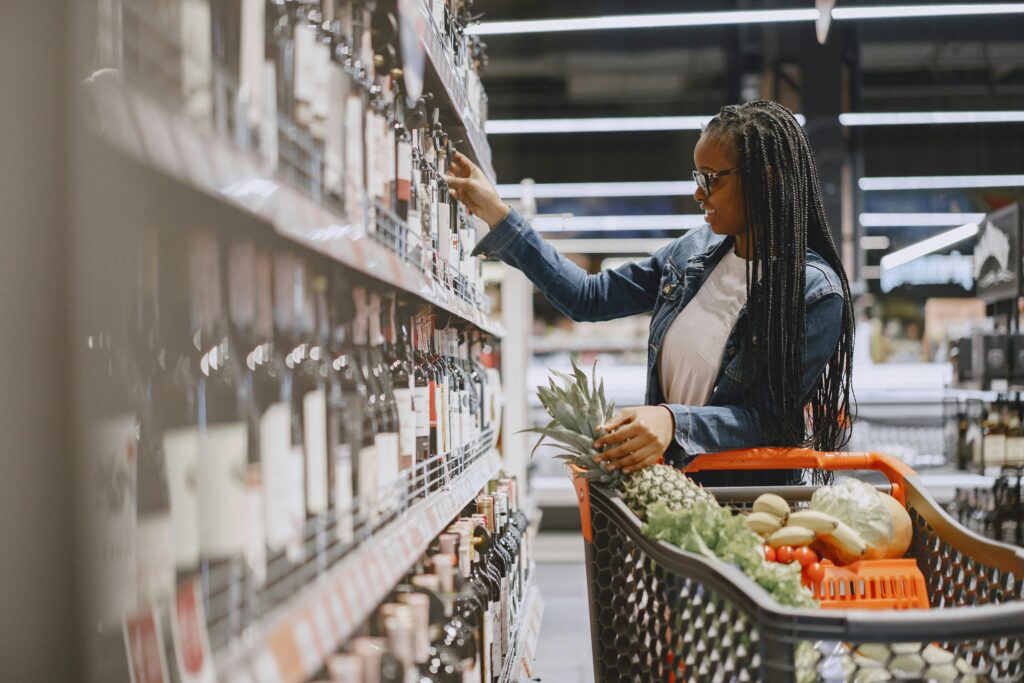
Placement of wine is very important. Wines should be easy to find and displayed in a way that catches the customer’s eye. Positioning them near food items like cheese, pasta, or meat can encourage shoppers to buy wine along with their groceries. Eye-level shelves and end-of-aisle displays also help bring attention to the products. Special promotions, such as discounts or bundle deals, can increase sales and attract new buyers.
Good labeling and packaging also play a big role in selling wine. Simple and clear labels that highlight key information such as flavor, origin, and food pairings can help customers make quick decisions. Attractive packaging with elegant designs can also influence buying choices. Offering small descriptions or recommendation cards next to the bottles can guide customers who may not know much about wine.
Providing samples can be an effective way to encourage sales. Many customers may be hesitant to buy a wine they have never tried before. Allowing them to taste a sample can help them feel more confident about their purchase. Supermarkets can also organize wine-tasting events to attract more shoppers and introduce them to new brands.
Customer service is another key factor. Having trained staff who can offer recommendations and answer questions can make a big difference. Shoppers appreciate friendly advice, especially if they are unsure about which wine to choose. Supermarkets can also use digital tools, such as QR codes on bottles that link to information about the wine, including reviews and pairing suggestions.
Online marketing and promotions can also boost sales. Many shoppers check online deals before going to the store, so offering special discounts on websites or supermarket apps can attract more buyers. Social media campaigns and email newsletters with wine recommendations and pairing tips can also engage customers and encourage them to make a purchase.
Loyalty programs can help retain customers and increase repeat sales. Offering points or discounts to frequent buyers can encourage them to keep purchasing from the same store. Seasonal promotions, such as special holiday-themed wine selections, can also attract more buyers.
Selling wine in supermarkets is all about making it easy and attractive for customers to buy. By using good placement, attractive packaging, promotions, samples, great customer service, and online marketing, supermarkets can increase wine sales and create a better shopping experience for customers.
How Direct-to-Consumer Sales Are Transforming the Wine Business
The wine industry is changing in a big way, and much of it is because of direct-to-consumer (DTC) sales. Instead of relying only on stores, restaurants, and distributors to sell their wines, many wineries are now selling straight to customers. This shift is helping both businesses and wine lovers in many ways.
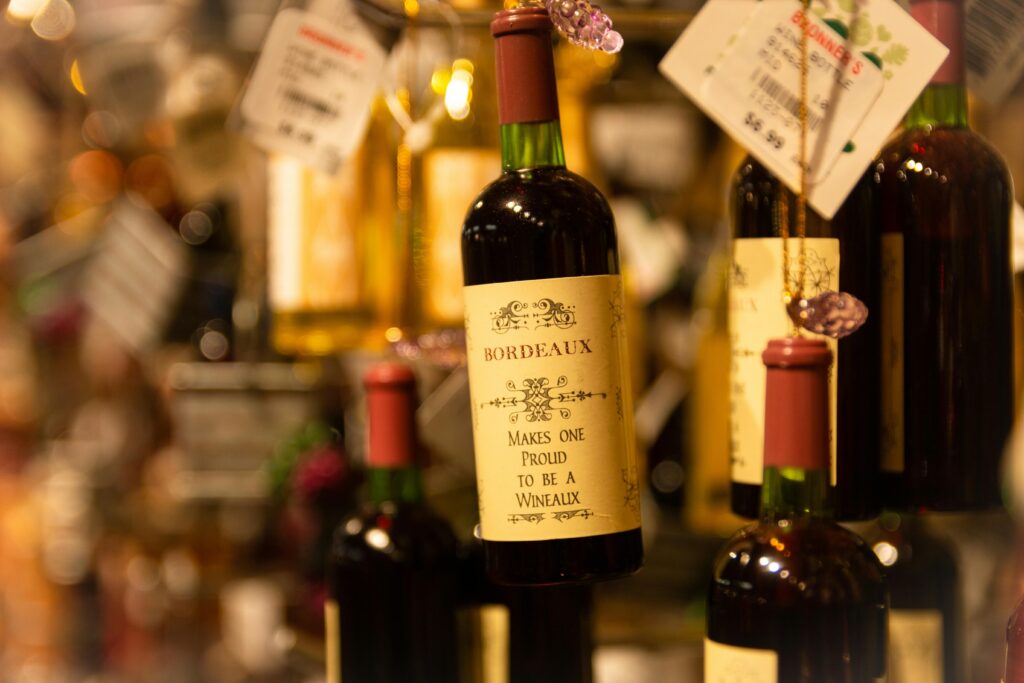
One of the biggest benefits for wineries is that they can build a closer relationship with their customers. When people buy wine directly from the producer, they get to know the story behind the brand. Wineries can share details about how their wine is made, what makes it special, and even offer exclusive bottles that are not available in stores. This personal connection makes customers feel more loyal to the brand.
Another advantage of DTC sales is better profits for wineries. When wine is sold through distributors, each middleman takes a cut of the price. By selling directly, wineries can keep more of the earnings, which helps them grow their business. This is especially important for small wineries that might not produce enough wine to work with big retailers.
Technology is playing a huge role in this change. Many wineries now have online shops where customers can order wine from the comfort of their homes. Social media and email marketing also help wineries stay connected with their buyers. Some even offer virtual wine tastings, where people can learn about different wines and how to enjoy them best.
Wine clubs are another way wineries are using direct sales. Customers can sign up for memberships and receive bottles regularly, often with special discounts or early access to new wines. This keeps customers engaged and provides wineries with a steady stream of income.
Shipping rules for wine have been a challenge in some places, as laws vary by country and state. However, many regions are updating their rules to allow more direct shipping, making it easier for customers to buy wine online. As more areas open up to DTC sales, the industry is expected to grow even more.
Overall, direct-to-consumer sales are making wine more accessible, helping wineries thrive, and giving customers a more personal and enjoyable experience. With the help of technology and changing laws, this trend is likely to continue, transforming the way people buy and enjoy wine.
The Impact of Tariffs & Trade Policies on Wine Exports
Tariffs and trade policies play a big role in the wine industry. When a country places tariffs on imported wine, it becomes more expensive for consumers in that country to buy wine from abroad. This can make it harder for wine producers to sell their products in foreign markets. High tariffs can lead to lower sales and force winemakers to look for new buyers or reduce their prices, which can hurt their profits.
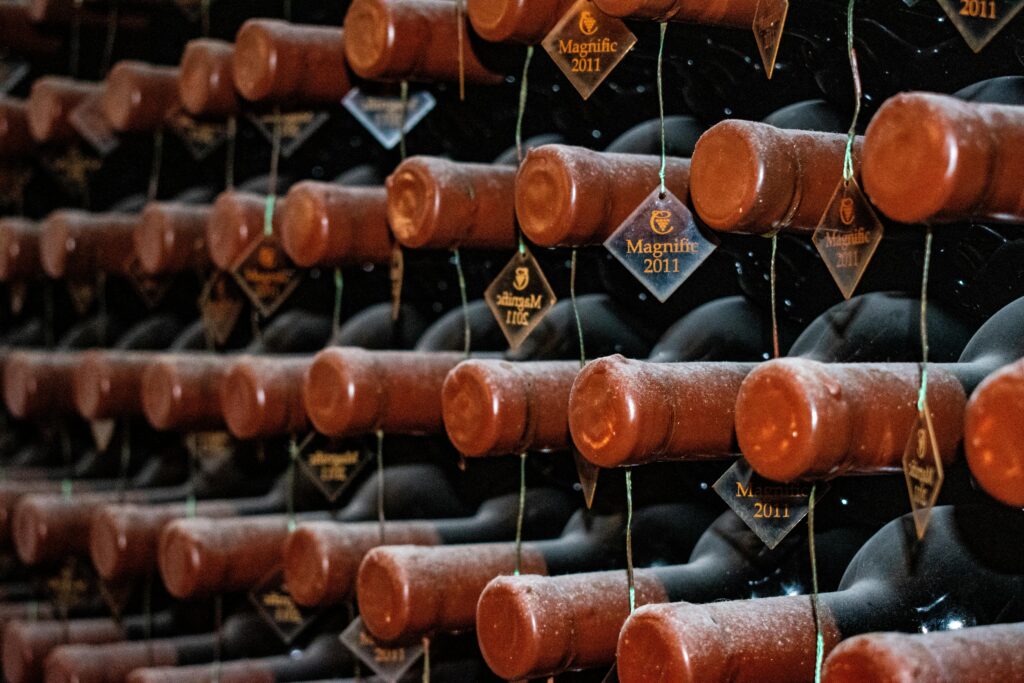
Trade policies also affect wine exports in many ways. Some countries make agreements to reduce or remove tariffs, making it easier and cheaper for wine producers to sell their goods internationally. On the other hand, some governments create strict rules on wine imports, such as requiring special labels or testing, which can make exporting more complicated and costly.
When countries get into trade disputes, they may increase tariffs on each other’s products, including wine. For example, if two countries have a disagreement over trade, one might raise tariffs on wine from the other country. This can hurt wine exporters by making their products too expensive for consumers in that market.
Wine producers often try to adapt to these changes by finding new markets or adjusting their business strategies. Some look for countries with lower tariffs or better trade agreements. Others might focus on selling more wine domestically if exporting becomes too difficult.
Government policies and international trade agreements are very important in shaping the wine export business. When trade policies support free trade and lower tariffs, wine producers can sell more and grow their businesses. However, when tariffs increase and trade restrictions become stricter, the industry faces challenges. Wine exporters must constantly watch these changes and adapt to stay competitive in the global market.
Reviving Wine Travel: Best Destinations and Trends to Watch
Wine travel is becoming popular again as people look for unique and relaxing experiences. Many travelers want to visit beautiful vineyards, taste amazing wines, and learn about winemaking from experts. Around the world, there are many incredible destinations where wine lovers can explore scenic landscapes, enjoy delicious food, and experience rich traditions.

France remains one of the top choices for wine tourism. Bordeaux, Burgundy, and Champagne are famous for their world-class wines and historic vineyards. Visitors can explore charming villages, taste legendary wines, and learn about centuries-old winemaking traditions. Italy is another dream destination for wine lovers. Tuscany offers rolling hills, stunning vineyards, and classic wines like Chianti and Brunello di Montalcino. Other notable regions include Piedmont, known for its Barolo and Barbaresco wines, and Sicily, which is gaining recognition for its unique volcanic wines from Mount Etna.
Spain is another must-visit country for wine enthusiasts. The Rioja region is famous for its bold red wines, while Catalonia offers sparkling Cava and rich Priorat wines. Portugal has also gained popularity, especially the Douro Valley, known for its stunning river landscapes and Port wines. The Alentejo region is another hidden gem, offering excellent wines and peaceful countryside views.
Beyond Europe, the United States is home to some of the most renowned wine regions. Napa Valley and Sonoma in California attract visitors with their high-quality wines, luxurious resorts, and gourmet dining experiences. The Willamette Valley in Oregon is gaining attention for its Pinot Noir, while Washington State’s Walla Walla region offers bold red wines and a growing wine culture.
South America is also a fantastic destination for wine lovers. Argentina’s Mendoza region is famous for its Malbec wines, breathtaking mountain views, and welcoming wineries. In Chile, the Colchagua Valley and Casablanca Valley offer outstanding wines, from deep reds to crisp whites. These regions also provide eco-friendly and boutique wine experiences.
Australia’s Barossa Valley is known for its powerful Shiraz wines, while the Yarra Valley near Melbourne offers cool-climate wines and scenic views. New Zealand has become a rising star in the wine world, with Marlborough producing world-famous Sauvignon Blanc and Central Otago known for its exceptional Pinot Noir.
South Africa’s Stellenbosch and Franschhoek regions are another excellent choice for wine travelers. These areas offer outstanding wines, beautiful mountain scenery, and a mix of European and African influences in their cuisine and culture. South Africa is also leading in sustainable and organic wine production, attracting eco-conscious travelers.
Wine tourism is evolving with new trends. Many wineries now focus on sustainability, using organic and biodynamic farming methods. Travelers are also looking for more immersive experiences, such as vineyard tours on horseback, wine and food pairing events, and even opportunities to participate in the winemaking process. Some wineries offer luxury accommodations, allowing visitors to wake up surrounded by vineyards. Technology is also playing a role, with virtual wine tastings, digital wine guides, and apps that help visitors plan their wine journeys.
As wine travel continues to grow, more people are seeking authentic and memorable experiences. Whether it’s exploring historic wine cellars, walking through scenic vineyards, or enjoying a glass of wine with a breathtaking view, there are endless opportunities for wine lovers to discover. With so many incredible destinations worldwide, the world of wine travel has never been more exciting.
Global Wine Market Trends: What’s Shaping the Industry in 2025?
The global wine market is changing in 2025 as new trends shape the industry. People are drinking wine differently, and winemakers are adapting to these changes. One major trend is the rise of organic and sustainable wines. More consumers want wine made with fewer chemicals and better farming practices. Wineries are using eco-friendly methods to protect the environment while making high-quality wine.

Another trend is the growing popularity of non-alcoholic and low-alcohol wines. Health-conscious drinkers and younger generations are looking for alternatives that allow them to enjoy wine without the effects of alcohol. Winemakers are now producing flavorful options that still give the wine experience but with little or no alcohol.
Technology is also playing a big role in the wine market. Online wine sales continue to grow, making it easier for people to buy wine from different parts of the world. Wine apps and virtual tastings allow consumers to explore new varieties and learn more about their favorite drinks. Artificial intelligence is helping wineries predict trends and improve production methods.
Consumer preferences are also shifting. People are looking for unique and lesser-known wines instead of the traditional choices. Wines from unexpected regions, such as Eastern Europe and South America, are becoming more popular. Wine lovers enjoy discovering new flavors and supporting small producers.
Climate change is another important factor affecting the wine industry. Rising temperatures and extreme weather conditions are forcing winemakers to adapt. Some vineyards are moving to higher altitudes or cooler regions to maintain grape quality. Others are experimenting with different grape varieties that can withstand changing conditions.
Sustainability is also a key focus for packaging. Many wineries are using lighter bottles, recyclable materials, and even alternative packaging like cans or paper bottles. These changes help reduce waste and make wine more eco-friendly.
Overall, the wine industry in 2025 is evolving to meet the needs of modern consumers. Health trends, technology, sustainability, and climate change are shaping the way wine is made, sold, and enjoyed. As people continue to explore new wine experiences, the industry will keep adapting to meet their expectations.
How Climate Change is Reshaping the Wine Industry
Climate change is having a big impact on many parts of the world, and one industry that’s feeling the effects is wine production. Grapes, the key ingredient in wine, are very sensitive to weather and climate conditions. When the climate changes, it can change how and where grapes are grown, affecting the taste, quality, and availability of wine.
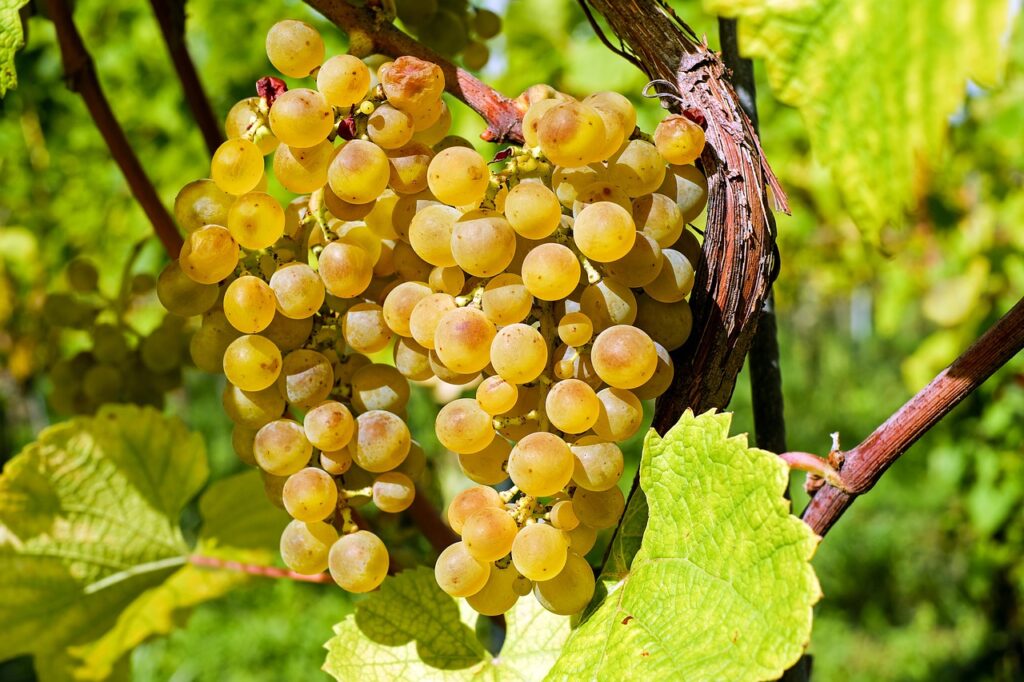
In many wine-growing regions, temperatures are rising. Hotter weather can lead to grapes ripening too quickly, which means the flavors of the grapes might not develop fully. This can result in wines that taste different from what people expect. On the other hand, if the weather is too cold, grapes might not ripen at all, leading to poor harvests.
Not only does heat affect grape ripening, but it can also cause droughts. Droughts can dry up the soil, leaving vines without enough water. Without enough water, grapevines become stressed, which impacts the quality of the grapes. In some places, farmers have to find new ways to water their vines or even switch to different crops altogether. In areas where water is already scarce, these changes can make it harder for farmers to grow grapes at all.
Heavy rainfall is also a concern. In some wine regions, increasing rainfall can lead to flooding or mold growth. Excess moisture on the grapes can spoil them, making it harder to produce wine. Rainstorms during harvest season can be especially dangerous because they can damage grapes that are ready to be picked.
As the climate changes, some traditional wine-growing areas may no longer be suitable for grapevines. In the past, grapes were grown in specific regions, such as Bordeaux in France or Napa Valley in California, because the climate was just right for producing high-quality wines. But as the weather warms up, these regions might become too hot for the types of grapes they’ve always grown. In these areas, winemakers may need to move to higher altitudes, where the temperatures are cooler, or they may need to plant different varieties of grapes that can handle the heat.
Climate change is also making it easier for wine to be produced in new places. As temperatures rise, some regions that were once too cold for wine production are now becoming suitable. Countries in northern Europe, like England, are already seeing vineyards popping up, where wine was rarely made before. In some places in the world, wine production is even moving to higher altitudes, where the cooler weather is better for growing grapes. This shift may create new opportunities for wine lovers to taste wines from places that were previously unknown.
Winemakers are finding ways to adapt to these changing conditions. Some are using new farming techniques, such as adjusting when they harvest the grapes or planting different grape varieties that can handle the warmer temperatures. Others are changing their irrigation methods to use less water. Many winemakers are also using technology, such as weather forecasting tools, to help them make better decisions about when to plant and harvest.
The wine industry is learning how to live with climate change, but it’s a challenging time. Some winemakers will need to adjust their methods, while others may need to move their vineyards to new areas. Wine lovers may notice changes in the wines they enjoy, whether it’s the flavors or the prices. Climate change is reshaping the wine world, and it’s something that everyone will have to keep in mind as the industry continues to adapt.
The Role of Wine Tourism in Driving Sales & Brand Loyalty
Wine tourism is becoming an important part of the wine industry. It helps wineries attract visitors, increase sales, and build strong connections with customers. When people visit a vineyard, they get to experience the wine-making process, taste different wines, and learn about the history behind the brand. This personal connection makes them more likely to buy the wine and stay loyal to the brand.
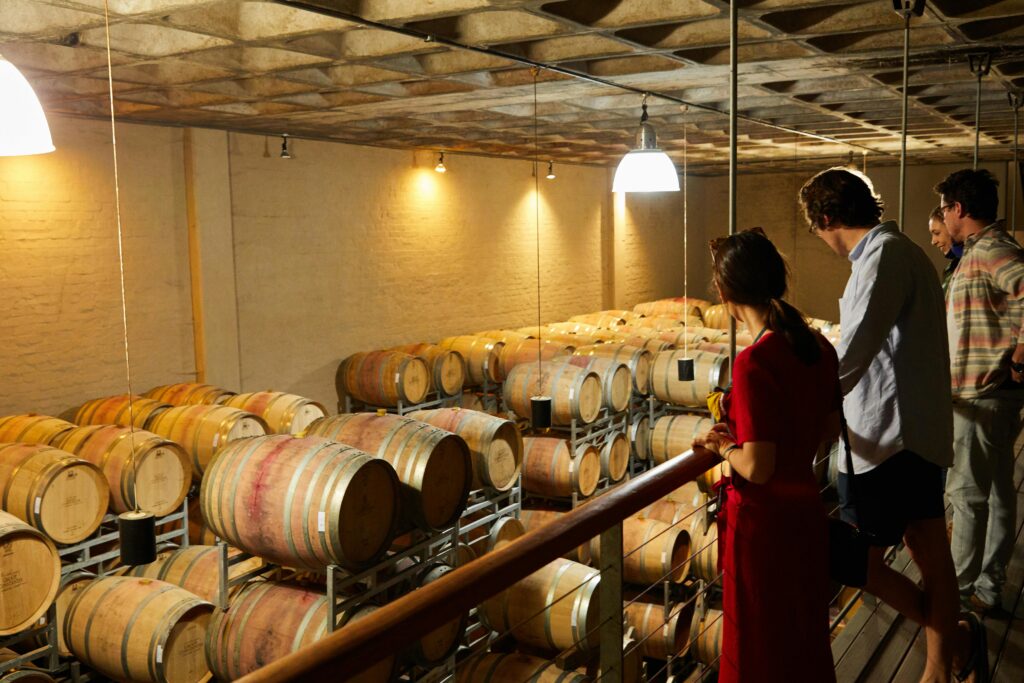
One of the biggest benefits of wine tourism is that it creates direct sales opportunities. Visitors who enjoy the experience often purchase bottles of wine to take home. Many wineries also offer exclusive wines that can only be bought at the vineyard, making the visit even more special. This helps wineries sell more wine without relying on supermarkets or distributors.
Another key advantage is brand loyalty. When people visit a winery and meet the winemakers, they develop an emotional bond with the brand. They are more likely to remember the experience and choose the same wine in the future. Some wineries use wine clubs and special events to keep in touch with visitors, encouraging them to come back or order wine online.
Wine tourism also helps wineries reach new customers. Many tourists who visit vineyards may not have been familiar with the brand before. A positive experience can turn them into long-term customers. This is especially important for smaller wineries that may not have a big marketing budget.
Social media plays a big role in wine tourism as well. Visitors love to share photos and stories about their winery visits. This free promotion helps spread the word and attracts more people to the vineyard. Wineries that offer beautiful landscapes, unique experiences, and great hospitality benefit the most from this trend.
In many regions, wine tourism is also good for the local economy. It brings more visitors to the area, boosting business for hotels, restaurants, and local attractions. Some wine regions have even created wine routes or festivals to attract more tourists and make the experience more enjoyable.
Overall, wine tourism is a powerful tool for increasing sales and building brand loyalty. It offers a unique and personal way for wineries to connect with customers, create memorable experiences, and grow their business. As more people seek authentic and enjoyable travel experiences, wine tourism will continue to play a key role in the success of the wine industry.
The Future of Wine Investment: Fine Wine as an Asset Class
The world of investing is constantly evolving, with new asset classes emerging as people seek alternative ways to grow their wealth. One such asset that has gained attention in recent years is fine wine. Once viewed mainly as a luxury for collectors and connoisseurs, fine wine is now recognized as a serious investment opportunity. Its ability to appreciate in value over time, combined with increasing global demand, has made it an attractive choice for investors looking to diversify their portfolios.
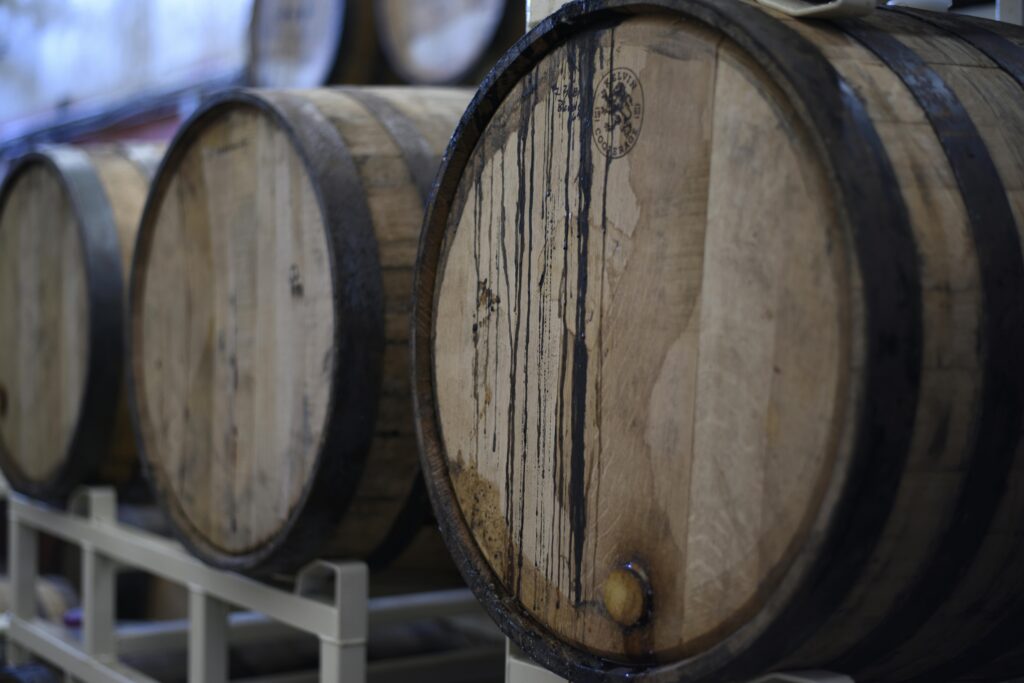
Fine wine has a unique advantage compared to traditional investments like stocks or real estate. Unlike financial markets, which can be highly volatile, fine wine has shown steady, long-term growth. Historical data suggests that certain wines, especially those from prestigious regions such as Bordeaux, Burgundy, and Champagne, have consistently increased in value over decades. This appreciation is driven by a combination of rarity, aging potential, and brand reputation. As bottles are consumed, the remaining supply decreases, making the best wines even more valuable.
Another reason fine wine is gaining popularity as an asset class is its ability to act as a hedge against inflation. In times of economic uncertainty, traditional assets often fluctuate unpredictably, but tangible goods like wine tend to hold their value. The demand for high-quality wines remains strong among collectors, restaurants, and investors worldwide, especially in emerging markets such as China, where interest in fine wines has surged. As more investors recognize the stability of this market, dedicated wine funds and online trading platforms have made it easier than ever to buy and sell fine wine without needing to be an expert.
However, wine investment is not without risks. Factors such as storage conditions, provenance, and market trends can affect a wine’s value. Proper storage in climate-controlled facilities is essential to maintaining a bottle’s condition, and authentication is crucial to avoid counterfeit wines. Additionally, while fine wine has historically shown strong returns, the market can be influenced by changing consumer preferences, economic downturns, and global events. Investors should do thorough research or seek advice from professionals before committing capital to this market.
Despite these challenges, fine wine remains an appealing option for those looking to invest in a tangible, appreciating asset. As technology continues to transform the way wine is traded and stored, accessibility will improve, attracting even more investors to this space. The combination of historical growth, stability, and global demand positions fine wine as a unique and promising asset class for the future. Whether for personal enjoyment or financial gain, investing in fine wine offers a blend of culture, sophistication, and potential profitability that few other assets can match.
Why Wine Certifications Matter for Export Markets: Organic, Biodynamic & More
Wine certifications play a crucial role in the global market. As demand for organic and sustainable wines grows, having the right certification can make all the difference for wineries looking to export.
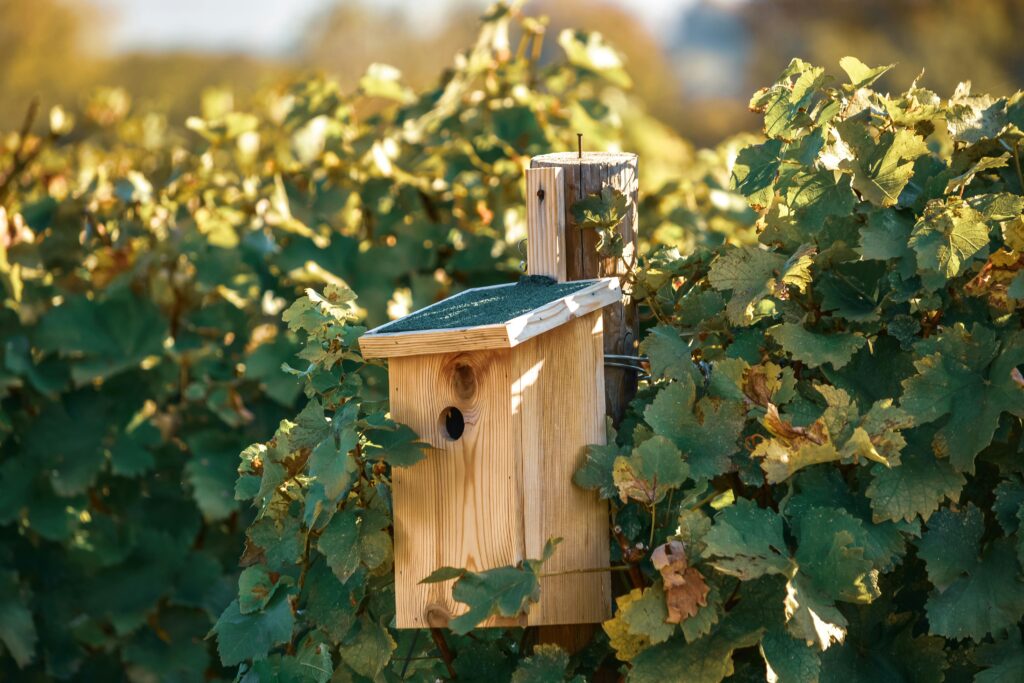
Certifications like Organic, Biodynamic, and Sustainable Wine Certification not only build trust but also open doors to high-value international markets.
Organic wine certification ensures that grapes are grown without synthetic pesticides, herbicides, or chemical fertilizers. Consumers today are more health-conscious and prefer wines made with natural methods. Many major export markets, such as the U.S., European Union, and Japan, have strict organic wine regulations. Without the proper certification, entering these markets can be challenging. Certified organic wines also have the advantage of higher market value, access to global distribution channels, and strong branding opportunities. Some of the most recognized organic wine certifications include EU Organic Certification, USDA Organic, and Canada Organic Regime (COR).
Biodynamic wine certification takes organic farming a step further by following a holistic, sustainable approach that treats the vineyard as a self-sustaining ecosystem. Biodynamic farming includes composting, natural pest control, and even following lunar cycles for vineyard management. These wines attract premium pricing and are in high demand in markets like France, Germany, and the U.S.. Many eco-conscious consumers prefer biodynamic wines because they are produced with minimal intervention and a deep respect for nature. The most recognized certification for biodynamic wines is Demeter Certification, which is accepted worldwide.
Beyond organic and biodynamic certifications, other wine certifications also help wineries succeed in export markets. Sustainable Wine Certification focuses on water conservation, energy efficiency, and eco-friendly vineyard practices. Examples include SIP Certified, Fair’n Green, and Certified Sustainable Winegrowing. Fair Trade Wine Certification ensures ethical labor practices and fair wages for vineyard workers, which is especially important for wines from regions like South America and South Africa. Some wineries also pursue Rainforest Alliance Certification to highlight their commitment to environmental responsibility.
Certifications are essential for wineries looking to expand into international markets. Many importers require them to meet strict wine import regulations, and certified wines often sell at premium prices due to their quality, sustainability, and authenticity. With growing consumer interest in eco-friendly wine production, having an official certification gives wineries a competitive edge. Certified wines attract more buyers, increase consumer trust, and enhance brand credibility.
The certification process requires an investment in sustainable farming, paperwork, and inspections, but the long-term benefits outweigh the costs. Wineries that commit to organic, biodynamic, or sustainable certifications can expand into profitable global markets, attract eco-conscious wine buyers, and build a strong brand reputation. If you’re looking to export wine, securing the right certification is no longer optional—it’s a necessity for long-term success.
Emerging Markets in Wine Trade: Opportunities in Asia, Africa, and Beyond
The wine industry is growing fast, and new markets are opening up around the world. In recent years, many countries in Asia, Africa, and other regions have started to show a strong interest in wine. This is creating great opportunities for wine producers and traders.

Asia is becoming one of the biggest wine markets. Countries in Southeast Asia, like Thailand, Vietnam, and the Philippines, are seeing more people enjoying wine. As incomes rise, more consumers are willing to try different wines. Thai consumers, for example, are interested in high-quality red wines. Vietnam, with its growing middle class, is also showing an increasing demand for wine, especially among young people. The Philippines, which already has a tradition of wine drinking, is expanding its market with new tastes and styles. Many wine producers are now focusing on these countries to sell their products.
Africa is another region where the wine trade is growing. South Africa has a strong wine industry, and its wines are becoming more popular in other African nations. Nigeria and Kenya are seeing more wine lovers as well. With urbanization and a rising middle class, people are exploring new drinks, including wine. The demand for both affordable and premium wines is increasing. Wine producers are paying attention to these markets and are trying to introduce more varieties that suit local tastes.
Beyond Asia and Africa, other regions are also showing promise. Countries in South America, such as Brazil and Mexico, are seeing growth in wine consumption. In the Middle East, despite alcohol restrictions in some areas, places like the United Arab Emirates have a demand for fine wines, especially in luxury hotels and restaurants. Eastern Europe is also becoming an interesting market, with more people developing a taste for international wines.
The growth of wine markets in these regions is creating new chances for wine businesses. Producers need to understand the local cultures and preferences to succeed. Marketing and branding play a big role in attracting consumers. Affordable wines are popular in some areas, while premium wines attract buyers in others. Wine companies must also consider local laws and regulations when entering new markets.
Technology and e-commerce are helping the wine trade grow. Many consumers now buy wine online, making it easier for companies to reach new customers. Social media and digital marketing are also important tools for promoting wines in these emerging markets.
The future of wine trade looks bright as more people around the world develop a taste for wine. For businesses willing to explore new opportunities, emerging markets in Asia, Africa, and beyond offer exciting possibilities. By understanding consumer preferences, using smart marketing, and adapting to local conditions, wine producers and traders can succeed in these growing markets.
Understanding Tariffs and Their Impact on Global Wine Trade
Tariffs are taxes that countries put on products coming from other nations. These taxes make imported goods more expensive. In the global wine trade, tariffs can have a big impact on prices, sales, and the way businesses operate.
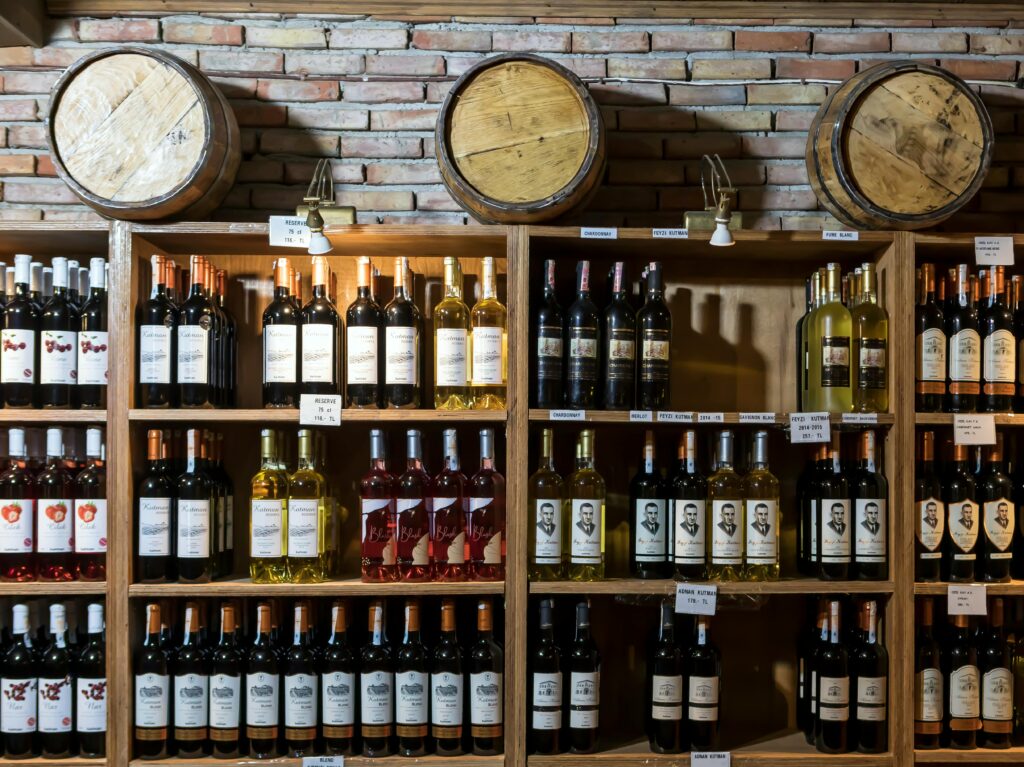
When a country places high tariffs on imported wine, the price of that wine goes up. This makes it harder for foreign wine producers to sell their products in that country because local customers might prefer cheaper, locally made wines. For example, if the United States puts a high tariff on French wine, American customers may choose to buy more American wine instead.
Tariffs can also affect wine producers. If a country exports a lot of wine, high tariffs in other countries can reduce their sales. A winemaker in Italy, for instance, might struggle to sell bottles in a country with strict import taxes. This can lead to lower profits and even job losses in the wine industry.
Sometimes, countries use tariffs to protect their own businesses. If a government wants to support local winemakers, it might add high tariffs to imported wine. This makes local wines more competitive. However, this can also lead to trade disputes. If one country places tariffs on another country’s wine, the affected country might respond by adding tariffs to other products in return.
Tariffs do not just impact producers and consumers; they can also affect the entire economy. If tariffs make wine too expensive, fewer people buy it, leading to lower demand. This can hurt restaurants, wine shops, and shipping companies that rely on wine sales. It may even affect grape farmers who grow the raw materials for wine production.
In some cases, countries negotiate trade agreements to reduce or remove tariffs. These agreements help make wine more affordable and allow businesses to sell more easily across borders. When tariffs are lowered, wine becomes more available, and consumers have more choices at better prices.
Understanding tariffs and how they affect the global wine trade is important. They shape the way businesses operate and influence what customers can buy. While they can protect local industries, they can also create challenges for international trade. Finding a balance between protecting local businesses and allowing free trade is a challenge that many countries continue to face.
How Small Wineries Can Succeed in International Trade
Small wineries have a great opportunity to sell their wine in different countries. Even though big wineries have more money and resources, small wineries can still find success in international trade by being smart and creative.
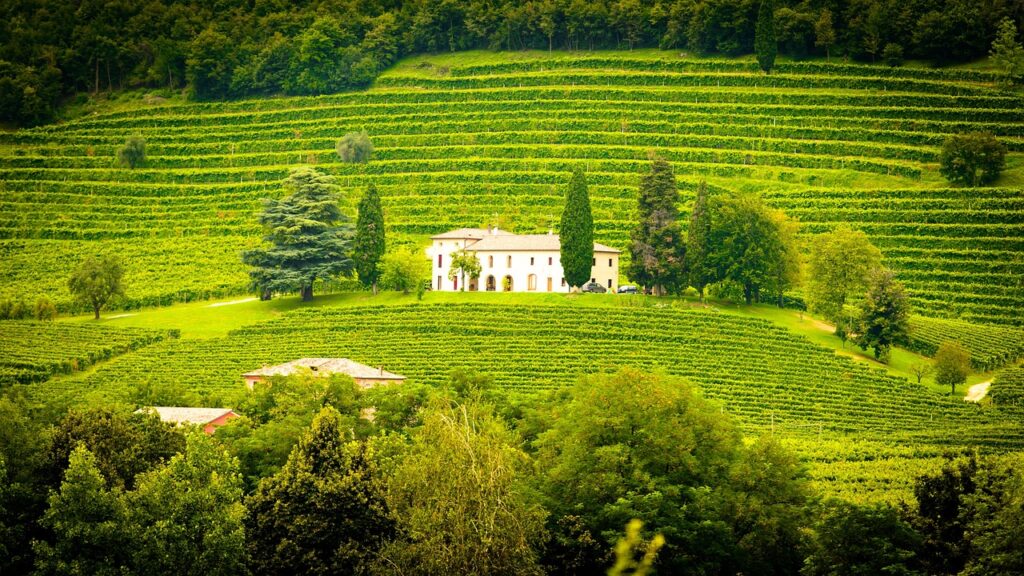
One important step is to make high-quality wine that stands out. Customers in different countries love unique and special wines. Small wineries should focus on making great flavors and telling the story behind their wine. A good story can make a wine more interesting and attractive to buyers.
Another way to succeed is by using online tools. The internet makes it easier to reach customers all over the world. Small wineries can use social media, websites, and online stores to show their wine and connect with people in other countries. Many customers today buy wine online, so having a strong online presence is important.
Building good relationships with importers and distributors can also help small wineries grow. Working with trusted partners who understand the local market can make it easier to sell wine in a new country. It is also useful to attend wine events and fairs, where wineries can meet potential buyers and showcase their products.
Understanding the rules and taxes of different countries is also necessary. Some places have strict laws about selling alcohol, so wineries need to learn about these rules before selling their wine. Getting the right licenses and following the regulations will help avoid problems and make trade easier.
Another strategy is to focus on niche markets. Instead of competing with big wineries, small wineries can target special groups of customers. For example, some people prefer organic wine, rare grape varieties, or wines made in small batches. Finding the right market can help a winery sell more bottles without needing a huge budget.
Offering great customer service also makes a difference. Happy customers are more likely to recommend a winery to their friends and buy more wine in the future. Small wineries can send personalized messages, offer wine-tasting experiences, or even create wine clubs where customers receive special wines regularly.
Finally, patience and persistence are important. Success in international trade does not happen overnight. Small wineries need to keep improving their products, learning about new markets, and adapting to changes. With passion and effort, small wineries can find their place in the global wine market and build a strong international presence.
What Consumers Want: The Most Popular Wine Styles Right Now
Wine trends are always changing, influenced by consumer preferences, new discoveries, and evolving tastes. Right now, wine lovers are gravitating toward styles that offer freshness, balance, and versatility.
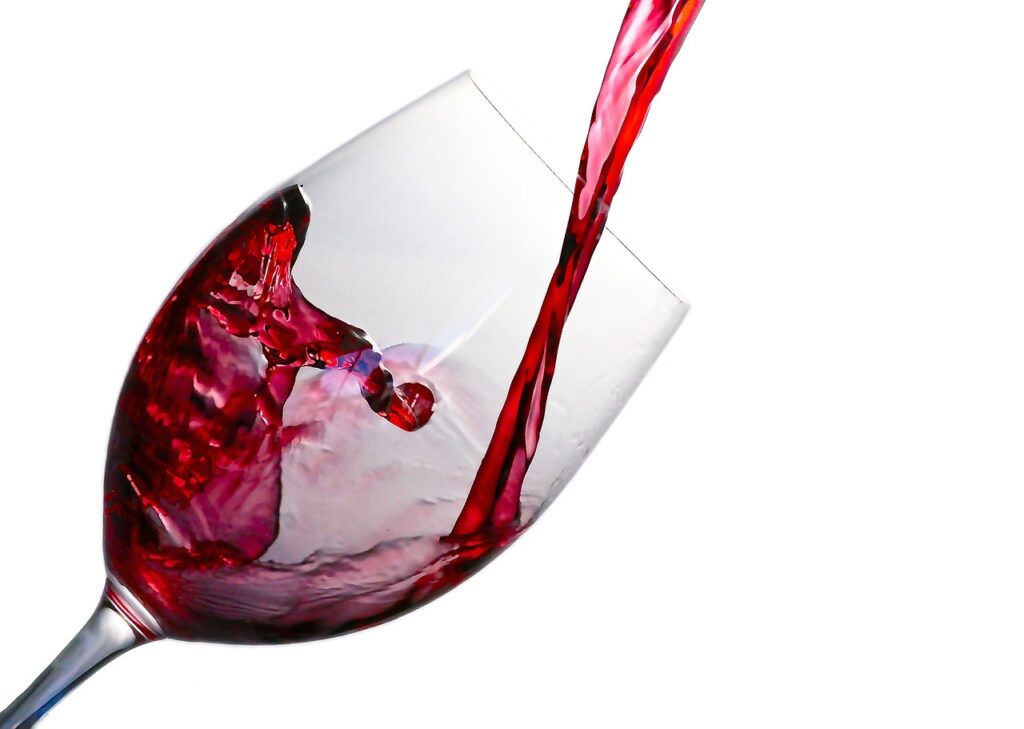
Many people are seeking wines that are easy to drink yet full of character, making them enjoyable for both casual sipping and food pairing.
One of the biggest trends is the rise of light, refreshing white wines. Consumers are reaching for crisp Sauvignon Blanc, dry Riesling, and vibrant Albariño. These wines are known for their bright acidity and fruit-forward profiles, making them perfect for warm weather or everyday enjoyment. Chardonnay remains a favorite, but many are now preferring unoaked versions that highlight the grape’s natural flavors rather than heavy butter and oak notes.
Rosé continues to be a major player, with its popularity growing year after year. Dry rosés, particularly those from Provence and California, are winning over drinkers with their fresh, fruity flavors and versatility. They are perfect for social gatherings, outdoor dining, or simply enjoying a glass at the end of the day. Consumers appreciate their ability to pair with a wide range of foods, from salads and seafood to grilled meats.
When it comes to red wine, the shift is toward lighter, fruit-driven styles. Pinot Noir remains a top choice, offering elegance and complexity without overwhelming the palate. Grenache and Gamay are also gaining traction, thanks to their juicy flavors and smooth textures. More drinkers are exploring natural wines, which emphasize minimal intervention and showcase the true character of the grapes. These wines often have vibrant acidity and a slightly rustic charm that appeals to adventurous wine enthusiasts.
Another emerging trend is the preference for lower-alcohol and sustainable wines. Many consumers are looking for wines that align with a healthier lifestyle, leading to increased demand for organic, biodynamic, and low-intervention wines. Winemakers are responding by producing bottles with lower alcohol content while maintaining depth and complexity. This shift also ties into the growing interest in sparkling wines, with Prosecco and pét-nat (pétillant naturel) becoming go-to choices for their lively bubbles and fresh flavors.
Wine lovers today are embracing diversity and seeking out new experiences. Whether it’s a crisp white, a refreshing rosé, or a light-bodied red, the focus is on enjoyment, approachability, and authenticity. The world of wine is evolving, and consumers are more open than ever to exploring different styles that suit their personal tastes and lifestyles.
Social Media’s Role in Modern Wine Marketing
Social media has changed the way businesses promote their products, and the wine industry is no exception. In the past, wineries relied on word of mouth, advertisements in magazines, and in-person tastings to reach customers. Today, social media platforms like Instagram, Facebook, and TikTok allow wineries to connect with a larger audience in a more engaging way.

One of the biggest benefits of social media is that it helps wineries tell their story. Wine is not just a drink; it has history, tradition, and passion behind it. Through photos, videos, and posts, wineries can show the beauty of their vineyards, the process of making wine, and the people behind the scenes. This personal touch makes customers feel more connected to the brand.
Another advantage is the ability to interact with customers directly. People can ask questions, share their experiences, and even give feedback instantly. This two-way communication helps wineries understand what their customers like and what they are looking for. It also creates a sense of community, making customers feel like they are part of something special.
Social media also plays a key role in wine education. Many people want to learn more about wine but may find it intimidating. Wineries and wine experts use social media to share easy-to-understand information about different types of wine, how to pair them with food, and how to taste them properly. Short videos and live sessions make learning about wine fun and accessible for everyone.
Influencers and wine bloggers also have a strong impact on wine marketing. When a popular influencer shares a review or posts a photo of a particular wine, it can reach thousands or even millions of people. This kind of exposure can boost sales and introduce a wine brand to new customers. People tend to trust recommendations from influencers they follow, making this type of marketing very effective.
Online sales have also grown due to social media. Many wineries use social media to promote special deals, announce new releases, and direct customers to their online stores. With just a few clicks, customers can discover a wine they like and order it without leaving their homes. This convenience has made buying wine easier than ever before.
The power of social media in wine marketing cannot be ignored. It allows wineries to share their stories, engage with customers, educate wine lovers, and sell their products more efficiently. As social media continues to evolve, wineries that embrace it will have a strong advantage in reaching new audiences and growing their brands.
The Future of Wine Distribution: Consolidation vs. Boutique Importers
The wine industry is changing fast, and one of the biggest debates is about how wine will be distributed in the future. Will large companies take over, or will small boutique importers continue to thrive?
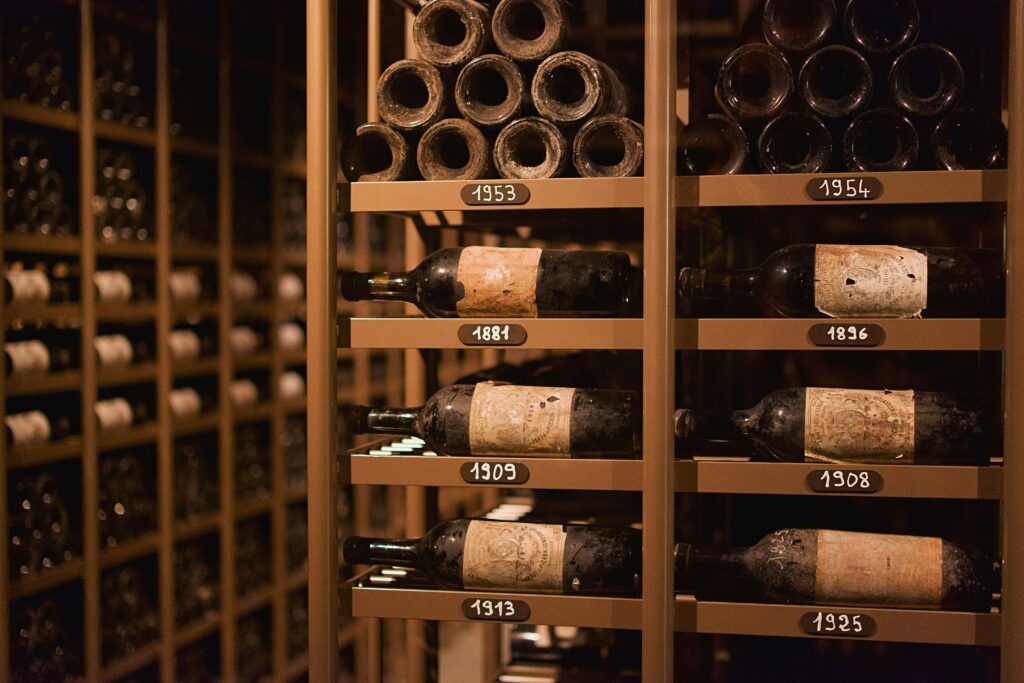
Big distributors have many advantages. They have the money, connections, and resources to bring wines from all over the world to markets quickly and efficiently. They work with supermarkets, restaurants, and online stores, making it easy for consumers to find popular wines. Large companies can also offer lower prices because they buy in bulk. As a result, many small wineries choose to work with them to reach more customers.
However, boutique importers bring something special to the table. They focus on unique, high-quality wines that big companies often overlook. These importers build close relationships with winemakers, ensuring that the wines they select have strong character and a personal touch. Many wine lovers appreciate their work because they introduce rare and interesting bottles that might not otherwise be available.
The future of wine distribution will likely involve both models. Large distributors will continue to dominate supermarkets and major retailers, offering well-known brands at competitive prices. At the same time, boutique importers will keep attracting wine enthusiasts who seek something different and are willing to explore smaller producers.
Technology will also play a big role. Online wine shops, direct-to-consumer sales, and subscription services are growing, allowing both large and small distributors to reach customers in new ways. Social media and wine apps make it easier for people to discover and learn about different wines, supporting boutique importers in spreading their message.
While consolidation may make it harder for small importers to compete, their passion, expertise, and personal connections with wineries will always have value. As long as wine lovers appreciate diversity and quality, boutique importers will have a place in the industry. The future will be a balance between the convenience of large distributors and the unique touch of smaller importers, giving consumers the best of both worlds.
As the wine industry evolves, regulations and market trends will also shape the future of distribution. Some regions may introduce stricter rules that favor larger companies, while others may support small businesses to preserve diversity in wine offerings. Consumer preferences are shifting too, with younger generations showing more interest in organic, sustainable, and locally sourced wines, areas where boutique importers often excel.
Events like wine tastings, festivals, and educational workshops will continue to play a role in how wines are discovered and appreciated. Boutique importers have the advantage of storytelling, bringing the history and passion behind each bottle directly to consumers. Meanwhile, large distributors will likely invest in technology and logistics to make wine shopping faster and more convenient.
Ultimately, the wine industry thrives on variety. Whether through large-scale distribution or niche importers, the goal remains the same: bringing great wines to people who enjoy them. The future will not be about one side winning over the other, but about both finding their place in an industry that values tradition, innovation, and quality.
Direct-to-Consumer Wine Sales: A Growing Trend in the Industry
The wine industry has changed a lot in recent years, and selling wine directly to customers has become very popular. This way, wineries can sell their products straight to people without using middlemen like stores or distributors. Because of online shopping, changing customer habits, and new rules, more wineries are choosing to sell directly.
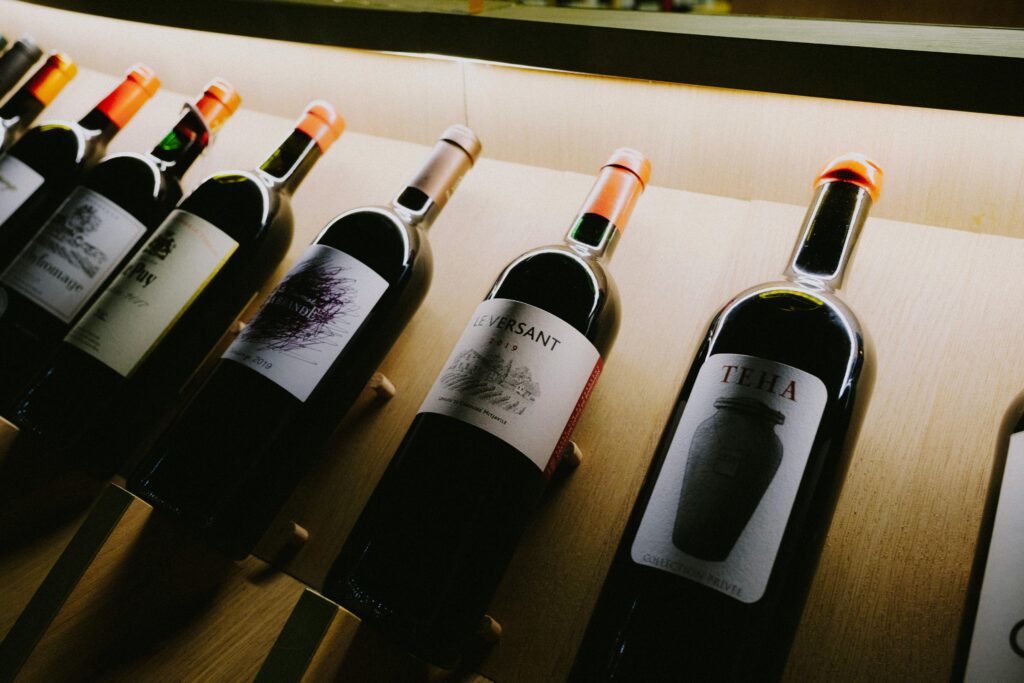
In the past, wineries had to sell their wine to wholesalers, who then sold it to stores before it reached customers. This made it harder for small wineries to reach more people. Selling directly to customers lets wineries control their prices, connect with buyers, and build their brand.
There are many reasons why direct sales have become more common. Online shopping makes it easy to buy wine from home. Many people like to try special wines that are not sold in stores. Some places have changed their rules to allow more wineries to sell directly. Also, during the COVID-19 pandemic, more people started buying wine online, which made wineries focus on direct sales even more.
This way of selling has many benefits for both wineries and customers. Wineries make more money because they don’t have to share profits with middlemen. They can build strong relationships with customers and learn what they like. They also have more control over prices and can offer special deals or wine club memberships.
Customers also benefit from direct sales. They can find unique wines that are not available in stores. Many wineries offer a more personal experience with special recommendations and virtual tastings. Buying directly is also more convenient because the wine is delivered to their home.
Even though direct sales have many advantages, there are some challenges too. Shipping wine can be difficult because different places have different rules. Small wineries may struggle with marketing and delivering their products. Having a good website, keeping customers happy, and handling deliveries well all take time and money.
The future of direct wine sales looks bright. More wineries are using technology to improve the shopping experience. Some are offering virtual tastings, using smart recommendations, or adding special features like labels with augmented reality. As rules continue to change and more people choose to buy wine online, this way of selling will likely keep growing.
Selling wine directly to customers has changed how wineries do business. It gives them more control and helps customers have a better buying experience. As online shopping grows, more wineries will likely use this method to sell their wine. For wineries today, selling directly is no longer just a choice—it’s something they need to do to succeed.
Boutique Wine Importers: Discovering the World’s Hidden Gems
Boutique wine importers play a special role in the wine industry by bringing unique and rare wines to people who love to explore new flavors. Unlike large distributors that focus on selling well-known brands in big quantities, boutique importers work with small, family-owned wineries. They choose wines that have a story, a connection to the land, and a unique taste that reflects the region where they were made.
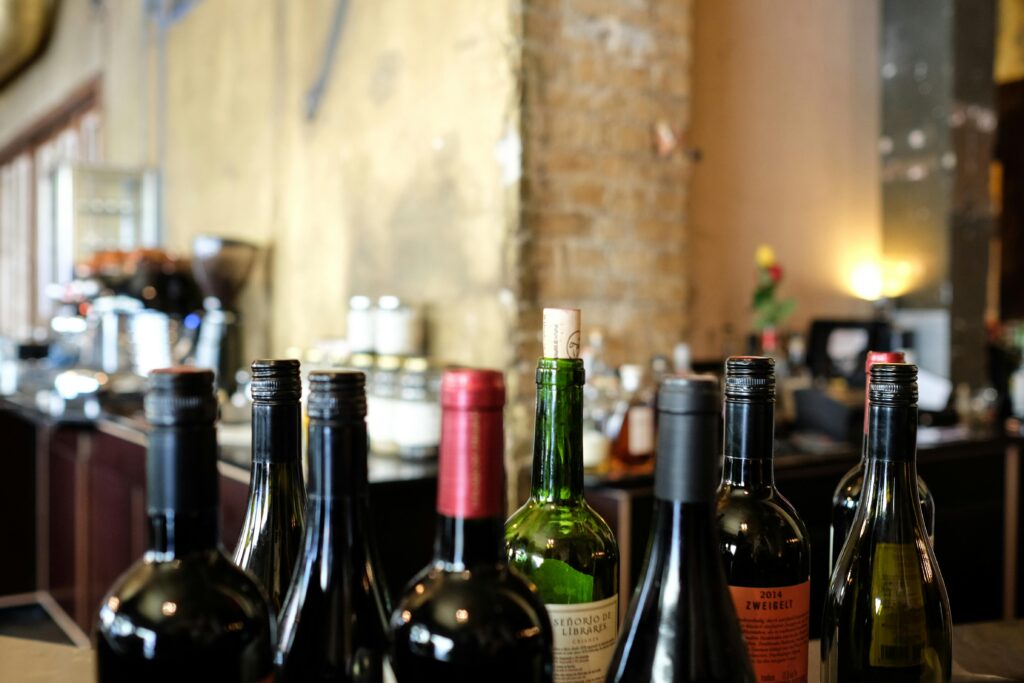
These importers are passionate about wine and take the time to find hidden gems from different parts of the world. They often travel to vineyards to meet the winemakers and learn about their production methods. Many of the wines they import come from small farms that use traditional and sustainable methods to grow their grapes. This means that each bottle is special and made with great care.
One of the biggest benefits of boutique wine importers is the variety they bring to the market. Instead of the same brands found in every store, they introduce new flavors from places that many people may not have heard of. They offer wines from countries like Georgia, Uruguay, and Slovenia, which have a long history of winemaking but are not as well known as France or Italy. This allows wine lovers to discover exciting new tastes and expand their knowledge of different wine regions.
Another advantage of boutique importers is their focus on quality. Since they work with small wineries, they carefully select each wine to ensure it meets high standards. Many of these wines are made using organic or biodynamic farming, which means they are produced with respect for the environment. This is important for people who care about sustainability and want to support businesses that protect nature.
Boutique wine importers also offer a more personal experience. Unlike big companies that sell to supermarkets, these importers often work with independent wine shops, restaurants, and private collectors. They provide expert recommendations, organize tastings, and share the stories behind each bottle. This makes buying wine more enjoyable and educational, helping customers appreciate the effort that goes into each glass.
However, there are challenges for boutique wine importers. Since they deal with small wineries, they have limited stock, and certain wines may sell out quickly. Importing wine also involves navigating strict regulations, taxes, and shipping costs, which can make it more expensive than mass-produced brands. Despite these challenges, many importers continue their work because they believe in sharing exceptional wines with the world.
For those who want to find a good boutique wine importer, there are a few ways to start. Asking for recommendations at local wine shops, looking for importers with strong reputations, and attending wine tastings are great ways to discover new options. Online platforms also make it easier to explore boutique wines from different parts of the world.
In the end, boutique wine importers bring something special to the world of wine. They introduce people to rare and high-quality wines that tell a story and reflect the passion of the winemakers. Whether someone is a casual drinker or a serious collector, boutique wine importers offer a chance to experience something new, one bottle at a time.
How to Differentiate Your Wine Brand in a Crowded Marketplace
The wine industry is highly competitive, with many brands fighting for attention. For a winery to succeed, it must stand out and attract loyal customers. Here are some key ways to make your wine brand unique and memorable.

1. Highlight Your Unique Story
Every winery has a story. Sharing your history, values, and passion for winemaking can create a strong connection with customers. Whether it’s a family tradition, a unique vineyard location, or a special production method, telling your story makes your brand more relatable.
2. Focus on Quality and Innovation
Great wine will always find its audience. Investing in quality ingredients, sustainable practices, and innovative techniques can help your brand gain recognition. Experimenting with new flavors or aging methods can also set your wines apart.
3. Create Eye-Catching Packaging
The first thing customers notice is the label and packaging. A well-designed, attractive label can make your wine stand out on store shelves. Consider using unique bottle shapes, vibrant colors, or minimalist designs that reflect your brand’s personality.
4. Build a Strong Online Presence
A strong digital presence is essential in today’s market. Having a professional website, active social media accounts, and engaging content can help potential customers learn about your wines. Posting behind-the-scenes content, wine-pairing tips, and customer reviews can boost engagement.
5. Offer Unique Experiences
Wine lovers enjoy more than just a bottle of wine; they love experiences. Hosting wine tastings, vineyard tours, or virtual events can create a deeper connection with your brand. Personalized services, such as wine subscriptions or exclusive releases, can also attract loyal customers.
6. Partner with Influencers and Experts
Collaborating with wine bloggers, sommeliers, and social media influencers can help spread the word about your brand. Reviews and recommendations from trusted sources can attract new customers and build credibility.
7. Focus on Sustainability
Many customers appreciate brands that care for the environment. Using organic grapes, eco-friendly packaging, and sustainable practices can make your winery stand out. Promoting your commitment to sustainability can attract environmentally conscious buyers.
8. Enter Wine Competitions
Winning awards at wine competitions can boost your brand’s reputation. A medal or high rating from a respected competition can increase credibility and attract more customers.
Conclusion
To stand out in a crowded marketplace, a wine brand must focus on storytelling, quality, branding, and customer engagement. By using creative marketing, offering unique experiences, and maintaining a strong online presence, wineries can build a loyal customer base and thrive in the competitive wine industry.
The Role of Independent Wine Shops in the Age of E-Commerce
In a time when online shopping is more popular than ever, small wine shops still play an important role. Even with big websites and wine clubs offering easy home delivery, local wine stores provide something special that online shops cannot. They are more than just places to buy wine; they help build a sense of community, offer knowledge, and create a personal shopping experience.
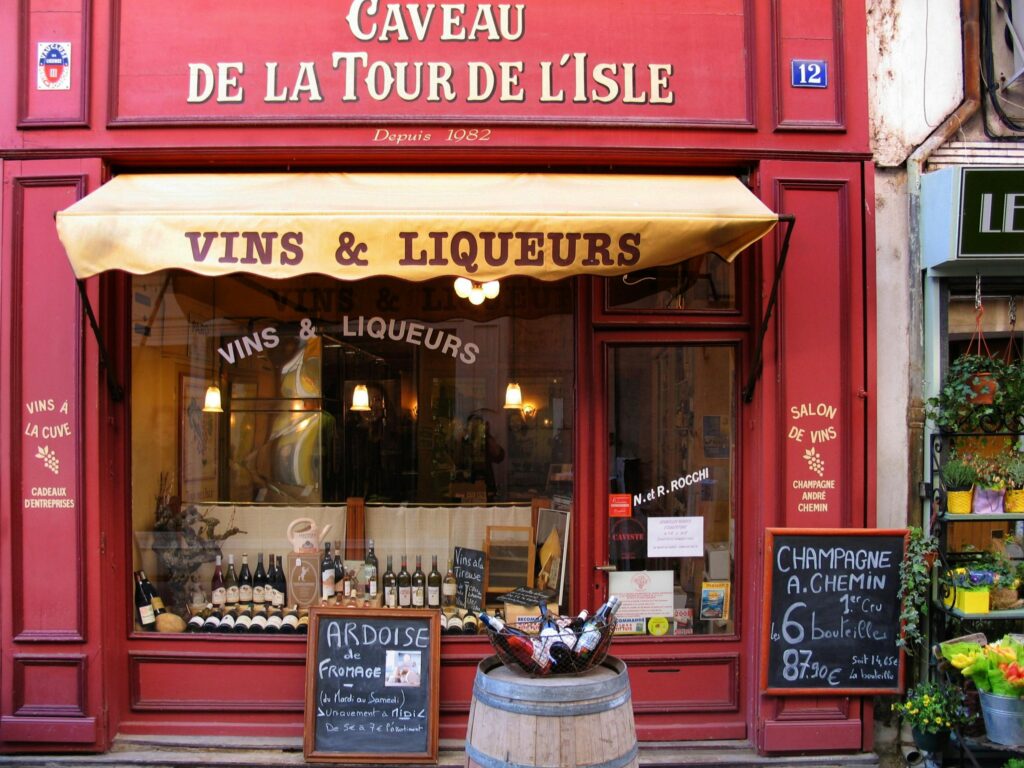
One of the biggest advantages of small wine shops is the personal help they provide. Unlike websites that suggest wines based on data, the staff at these stores can talk to customers, understand what they like, and suggest wines that fit their taste, budget, and occasion. This human connection makes the experience more enjoyable, especially for those who are new to wine or looking for something unique.
These shops also focus on quality and unique wines that may not be found on big online platforms. They often support small producers, natural wines, and special releases. Many customers enjoy the chance to buy something different rather than the same brands found everywhere.
Local wine shops also bring people together by hosting wine tastings, educational events, and chances to meet winemakers. This helps people learn more about wine and supports smaller producers who might struggle to get noticed online. Many stores also sell wines from local and regional wineries, helping their communities grow.
Another big benefit is that customers can take home their wine right away instead of waiting for shipping. Being able to see, hold, and sometimes taste the wine before buying adds to the experience. Online stores cannot fully replace this feeling.
Even though small wine shops have many strengths, they also face challenges from online competitors. Many online stores offer lower prices, convenience, and a wider selection. To keep up, local wine shops are using technology to help their business. Some have started offering online ordering, home delivery, and staying active on social media to connect with customers.
Even as e-commerce grows, small wine shops remain important. Their focus on personal service, unique wines, and community events keeps them valuable. By using both traditional and modern ways of selling, these shops can continue to succeed while keeping the personal touch that makes them special.
Discover the Istria Wine Region: Croatia’s Hidden Gem
If you’re a wine lover looking for a unique and exciting destination, it’s time to put Istria, Croatia, on your radar. This charming region, located on a heart-shaped peninsula in the northern Adriatic, is often called the “Tuscany of Croatia.” Known for its rolling hills, olive groves, and picturesque villages, Istria is also home to some of the most exciting wines in Europe. Beyond wine, it is a true enogastronomic paradise, renowned for its world-class olive oil and exceptional cuisine.

Winemaking in Istria dates back to Roman times, and the region benefits from a unique combination of Mediterranean and continental climates. Warm, sunny days and cool nights help the grapes develop rich flavors and maintain balanced acidity. The soil, known locally as terra rossa (red soil), is full of minerals, which gives the wines their distinctive character.
The standout white wine of the region is Malvazija Istarska, a crisp, aromatic variety with notes of citrus, green apple, and almond, often accompanied by a touch of herbs. It pairs beautifully with seafood, which is abundant in Istria. Among the red wines, Teran is a bold, ruby-colored variety with earthy and spicy notes, perfect for pairing with hearty regional dishes like truffle pasta or grilled meats. Another noteworthy red is Refošk (Refosco), which is slightly fruitier than Teran, featuring dark berry and plum flavors. Istria also produces excellent rosé wines, often made from Teran or Refosco grapes, which are fresh, fruity, and perfect for warm summer days.
One of the best ways to experience Istrian wines is by exploring the Istrian Wine Roads, where dozens of family-owned vineyards and estates welcome visitors for tastings. No trip to Istria is complete without a visit to Kozlović Winery, one of the region’s most renowned and innovative producers. Nestled in the rolling hills of the Buie area, Kozlović masterfully blends tradition with cutting-edge techniques. Their Malvazija Istarska is among the best in the region, balancing fresh citrus flavors with floral and mineral notes. The winery also produces prestigious Santa Lucia wines, including a complex Malvazija and a red blend, Santa Lucia Noir, both showcasing the depth and aging potential of Istrian wines. Visitors can enjoy guided tastings, learn about the winemaking process, and take in breathtaking vineyard views from the modern tasting room. Kozlović’s commitment to sustainability and innovation makes it a must-visit for any wine enthusiast.
But Istria isn’t just about wine. The region is equally famous for its extra virgin olive oil, which consistently ranks among the best in the world. Thanks to the mineral-rich soil and centuries-old olive groves, Istrian olive oil boasts deep, complex flavors. Many wineries also produce olive oil, making it easy for visitors to enjoy wine and oil tastings together. With its incredible wines, award-winning olive oils, and mouthwatering cuisine, Istria offers an unforgettable experience for food and wine lovers alike. Whether you’re sipping Malvazija by the sea, indulging in truffle-infused dishes, or exploring the scenic vineyards, this Croatian gem is a destination worth discovering.
The Growing Demand for Imported Wines in BC
British Columbia is an exciting market for wine exporters in 2025, offering many opportunities for producers wanting to sell their wines in Canada. People in BC love trying different types of wine and have a high appreciation for quality. This makes the province one of the best places for imported wines.
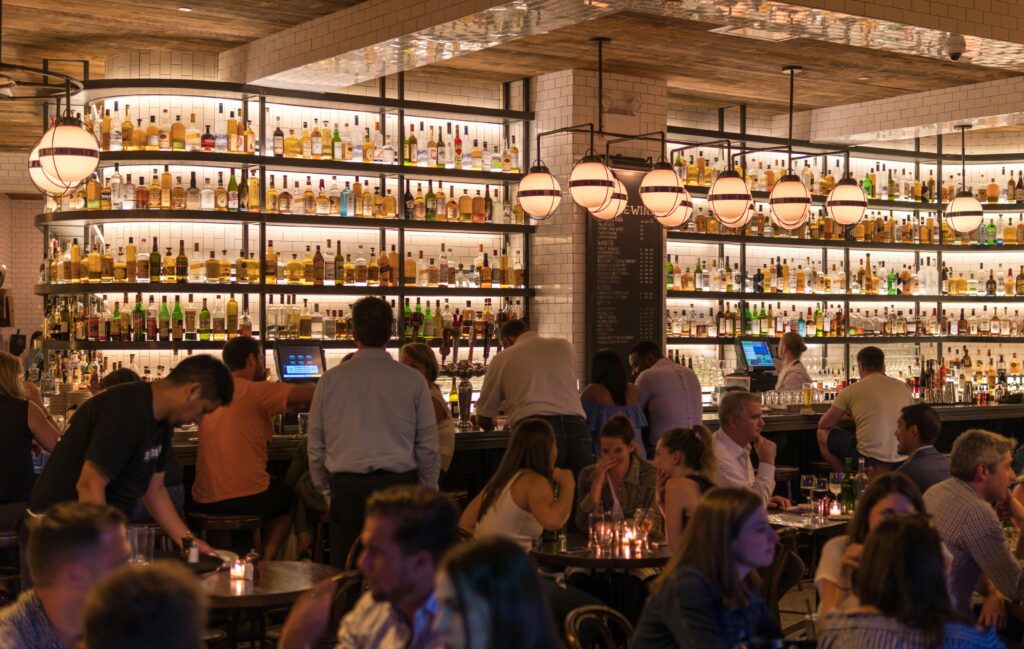
Wine is very popular in BC, with many people drinking more wine compared to other parts of Canada. BC residents enjoy bold red wines, refreshing white wines, sparkling wines, and rosés. There’s also a growing interest in organic and eco-friendly wines, as many people care about sustainability. Wines that pair well with the province’s fresh seafood, Asian-inspired meals, and fine dining options are in high demand.
Wine is sold in BC through different channels, making it easy for exporters to reach customers. Government-run BC Liquor Stores (BCL) are the largest retailer, offering a wide selection of wines to customers across the province. Private liquor stores, such as Everything Wine, Legacy Liquor Store, and JAK’s Beer Wine Spirits, are also important, as they focus on selling premium and unique wines to enthusiasts. Additionally, some supermarkets, like Save-On-Foods, sell wine at certain locations, which is convenient for everyday shoppers looking for affordable options.
Importers and distributors are key to helping wineries enter the BC market. Companies like Pacific Wine & Spirits, Appellation Wine Marketing, and Seacove Group specialize in bringing international wines to BC. They connect producers with stores and restaurants, making it easier to navigate the local rules and reach customers. Restaurants, especially in Vancouver, are another important part of the market. Many restaurants offer carefully selected wine lists featuring popular options from countries like France, Italy, and California, as well as wines from emerging regions like South America.
British Columbia’s wine lovers value quality and enjoy wines with a good story, such as those made sustainably or with a special history. Exporters who share these details and participate in wine events, tastings, or food pairings have a better chance of standing out.
In 2025, BC is a great destination for wine exporters. The mix of passionate wine drinkers, strong retail options, and a thriving restaurant scene make it an ideal place for wineries looking to succeed in Canada. With the right approach, producers can tap into this growing market and build lasting success in this beautiful part of the world.
The Role of Wine Cooperatives in Emerging Regions
When we think about wine, we often imagine small vineyards or big fancy wineries. But behind many bottles of wine, especially from emerging wine regions, there is often something else at work: wine cooperatives. These cooperatives play a key role in helping winemakers and growers succeed.

What Are Wine Cooperatives?
A wine cooperative is a group of grape growers and winemakers who work together. Instead of everyone producing their wine separately, they pool their resources. This means they share tools, machinery, and knowledge. By working as a team, small growers can make wine more efficiently and compete with bigger companies.
Why Are They Important in Emerging Regions?
Emerging wine regions are areas where wine production is still growing and gaining recognition. These regions often face challenges like limited funding, less experience in the global wine market, or lack of advanced equipment. This is where wine cooperatives step in to help:
- Support for Small Farmers
Many small grape growers can’t afford expensive wine-making equipment or don’t have the skills to turn their grapes into high-quality wine. A cooperative provides them access to tools, skilled winemakers, and resources they couldn’t afford on their own. - Better Quality Wines
When growers share knowledge and expertise, they can improve the quality of their grapes and wine. Cooperatives often have experienced winemakers who guide the process, ensuring the final product meets high standards. - Shared Costs and Risks
Making wine can be risky, especially when the weather doesn’t cooperate or market prices drop. Cooperatives share the costs and risks among all members, reducing the burden on any one grower. - Opening New Markets
Emerging regions might struggle to sell their wine outside their local area. Cooperatives can market and sell wine as a group, which makes it easier to reach larger audiences, both nationally and internationally.
Examples of Success
Some of the most famous wine regions, like France and Italy, owe their success partly to wine cooperatives. Today, cooperatives in countries like South Africa, Argentina, and India are helping new regions make their mark on the global wine map.
For instance, in South Africa’s Swartland region, cooperatives have helped transform what was once an overlooked area into a respected name in wine. By working together, growers could improve quality and gain recognition.
Challenges Cooperatives Face
Of course, it’s not always easy. Cooperatives must balance the needs and opinions of many members, which can lead to disagreements. Also, if they don’t innovate or adapt to market trends, they risk falling behind competitors.
A Bright Future for Emerging Regions
Despite challenges, wine cooperatives are a powerful tool for emerging wine regions. They give small growers a chance to compete, improve their skills, and showcase their wines to the world.
The Digital Transformation of the Wine Industry
The wine industry, one of the oldest markets in the world, is undergoing a modern transformation. The rise of e-commerce has reshaped how consumers discover, purchase, and enjoy wine.
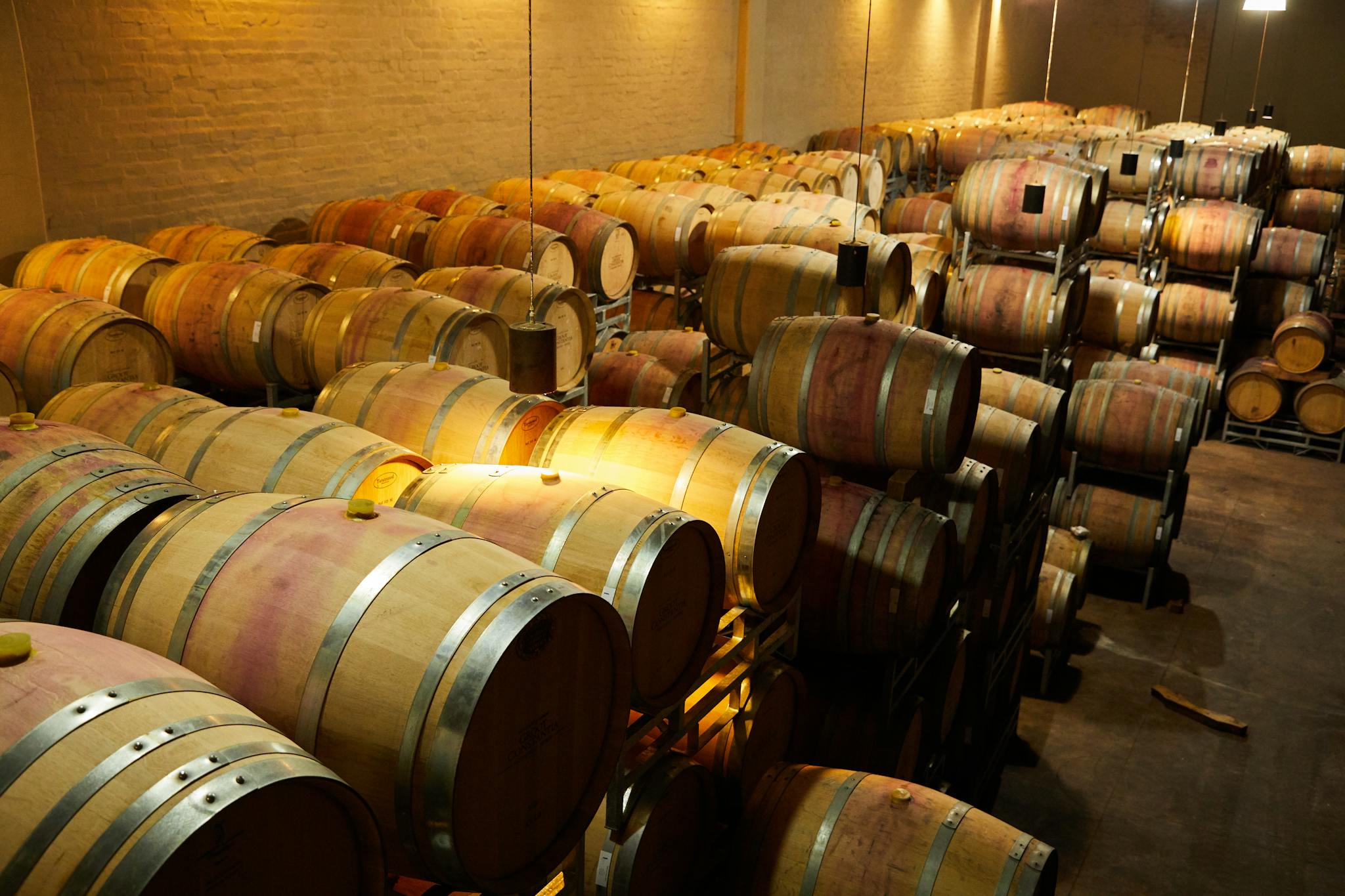
From boutique wineries to global brands, the shift toward online sales has created exciting opportunities and new challenges for wine businesses. While e-commerce had been growing steadily for years, the COVID-19 pandemic acted as a major catalyst. With physical stores and wineries closed, consumers turned to online platforms for their wine purchases, leading to a significant boom in global online alcohol sales, with wine accounting for a large share. This shift made it easier than ever for consumers to order wine from anywhere, enjoy doorstep delivery, and access curated recommendations.
E-commerce allows wineries, especially smaller producers, to sell their products to consumers far beyond their local markets. Boutique wineries can now reach global audiences without relying on traditional distributors, and direct-to-consumer sales have become a key growth area, cutting out middlemen and increasing profits. Many online platforms use AI and data analytics to create personalized shopping experiences, offering customers wine recommendations based on their preferences, purchase history, and even food pairings. Subscription services like wine clubs provide curated monthly selections tailored to individual tastes. Online sales aren’t just about convenience; they’re about connection. Many wineries use their websites and social media to share their stories, showcase the winemaking process, and educate consumers. Virtual tours and tastings have become popular, offering a unique way for customers to explore wineries from the comfort of their homes.
Innovations like canned wine, smaller bottle formats, and eco-friendly packaging appeal to younger, eco-conscious consumers, while payment options like subscriptions, discounts for bulk orders, and installment plans make online wine shopping more flexible. Despite its growth, e-commerce in the wine industry comes with hurdles. Wine shipping laws vary by country and even state, making compliance a challenge for wineries looking to expand globally. Import and export restrictions and taxes can complicate international sales. Delivering wine requires special handling due to weight, fragility, and temperature sensitivity, and high shipping costs can deter budget-conscious customers. Additionally, consumers often want to taste wine before purchasing it, which means newer wineries must build trust through online channels with effective marketing and positive reviews.
Eco-conscious consumers are increasingly looking for wineries that prioritize sustainable practices, and wineries showcasing their commitment to the environment through online content often attract loyal customers. Platforms like Instagram and TikTok have become powerful tools for wineries to market their products and engage with younger audiences, with influencers and content creators playing a key role in promoting wine brands. Apps like Vivino and Drizly provide consumers with easy ways to discover and purchase wine while reading reviews from fellow wine enthusiasts. Some wineries are taking e-commerce to the next level with virtual vineyard tours or interactive wine-tasting events, creating a more immersive online shopping experience.
The e-commerce wine market is projected to grow significantly in the coming years. As technology continues to evolve, so will the ways consumers buy and experience wine. From smart wine recommendations powered by AI to same-day delivery, the future of wine shopping will likely be more personalized, accessible, and engaging than ever. For wineries, embracing e-commerce is no longer optional—it’s essential for staying competitive in a digital-first world. Whether through engaging websites, social media campaigns, or partnerships with online retailers, the opportunities to connect with wine lovers worldwide are endless.
E-commerce is breaking down barriers in the wine industry, making it easier for consumers to explore and enjoy wines from around the world. For businesses, it’s a chance to innovate, expand, and build lasting connections with a global audience. So, the next time you’re browsing for a bottle of wine, remember—you’re just a click away from discovering your new favorite vintage.
How Free Trade Zones Can Boost Wine Exports and Simplify Global Sales?
Free Trade Zones (FTZs) offer wineries a smart way to boost their international sales and make exporting easier. In an FTZ, wineries can store their wines, repackage them, and get them ready for sale without paying customs duties or taxes right away. This helps them save money and manage their finances better.
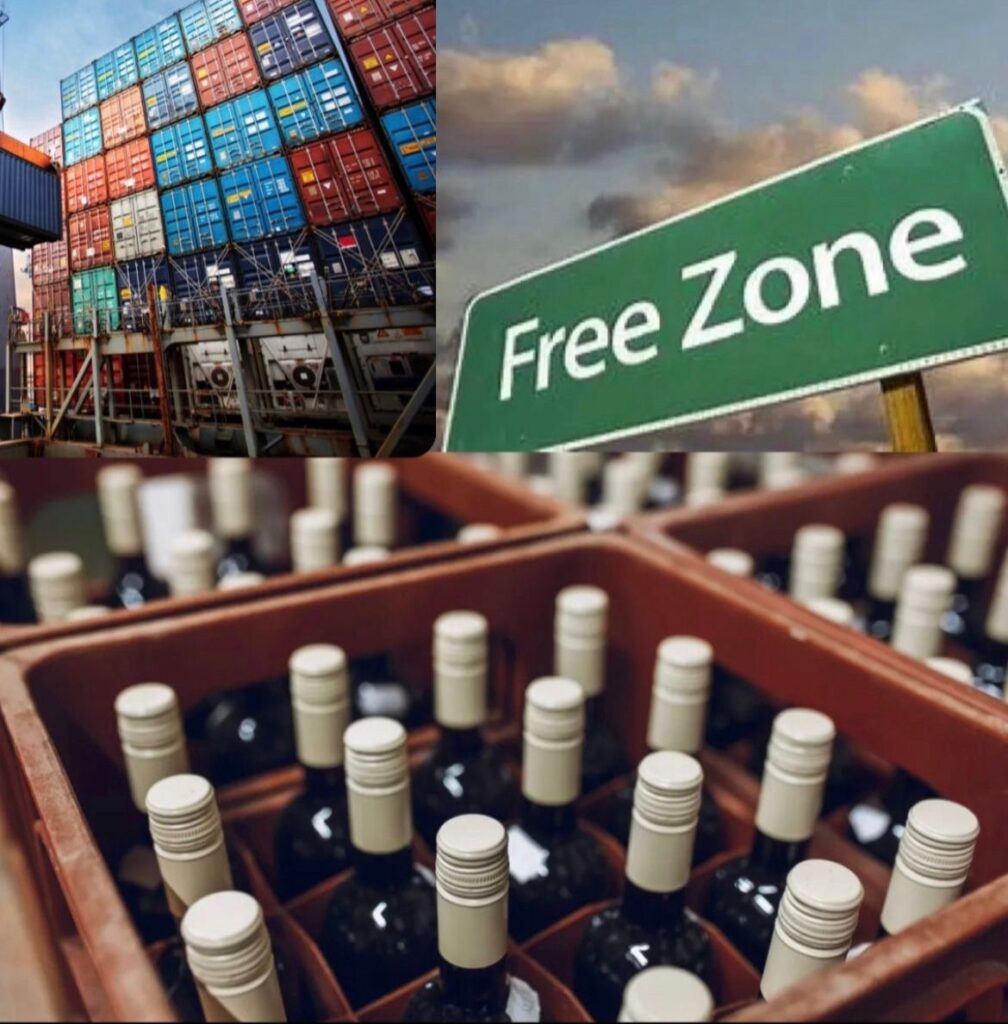
For example, the Rotterdam Free Zone in the Netherlands is a great spot for shipping wines across Europe. Wineries can keep their products there and only pay taxes when the wine actually enters the European market. The Shanghai Free Trade Zone in China helps wineries get their wines into the growing Asian market more smoothly. In Dubai, the Jebel Ali Free Zone connects wineries to the Middle East and Africa with added tax benefits. The Colón Free Zone in Panama is useful for reaching Latin America.
Using FTZs lets wineries reduce costs, test new markets, and manage their global shipping more effectively. This means wineries can export more and grow their business internationally with less hassle.
Mexico: A Growing Hub for Future Wine Consumption.
Mexico is quickly becoming a growing market for wine, especially imported varieties. While beer and tequila have traditionally been more popular, many people in Mexico, especially in cities and among younger adults, are now choosing wine more often. As more Mexicans have disposable income, wine is becoming a trendy and sophisticated choice for gatherings, dinners, and special occasions.
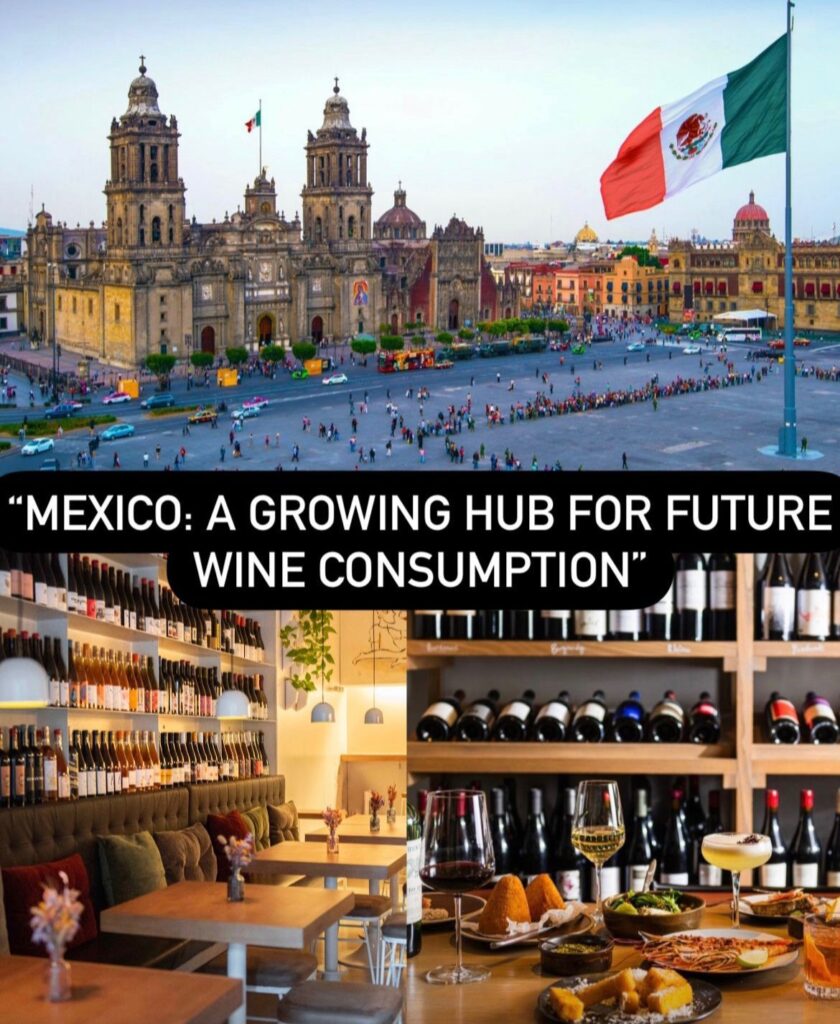
Imported wines are becoming easier to find in stores, restaurants, and wine shops across the country. This variety gives Mexican consumers more options to try different kinds of wines from around the world. Many people are now exploring new wine flavors and styles that they might not have had access to before. Social media and travel have also exposed more Mexicans to international wine culture, leading to increased interest.
As wine is often seen as a lighter, more refined alternative to stronger drinks, it’s gaining popularity among health-conscious consumers as well. In the future, the demand for imported wine in Mexico is expected to keep growing, making the country an important market for global wine producers. With expanding tastes and more options available, wine consumption in Mexico is set to rise even further.
Airports as Prime Wine Selling Spots Across the USA.
Airports in the USA are becoming popular places to buy international wines, attracting both local and international travelers. Many large airports now have special wine shops that offer a variety of wines from all over the world.
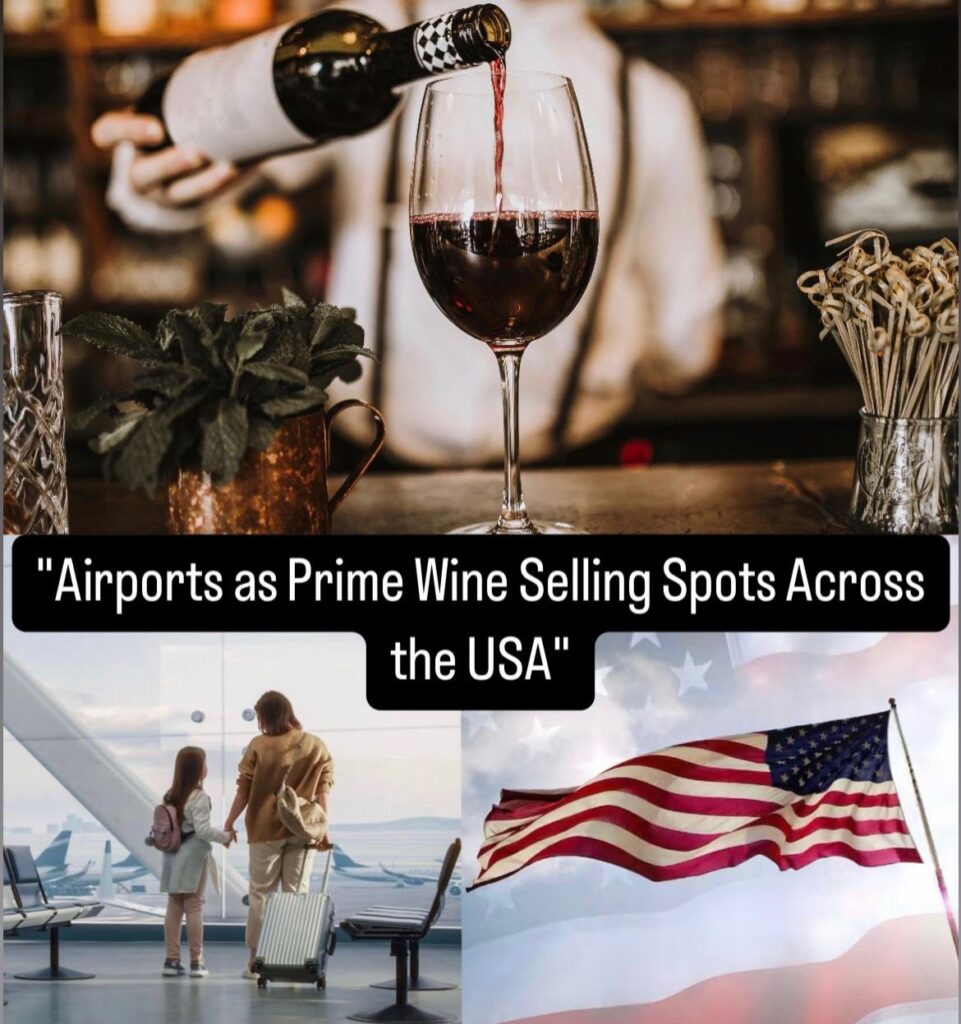
These shops are great for travelers looking for unique gifts or wanting to bring home something special. Duty-free wine shops are especially appealing because they allow passengers to buy wine without paying extra taxes, making it more affordable.
Airports like San Francisco International, John F. Kennedy International in New York, Los Angeles International, and Chicago O’Hare also host wine tastings and events, where passengers can sample wines before they buy. Wine lovers can find many different types of wines, including some that are hard to find in regular stores. Helpful staff are available to provide recommendations based on what travelers like.
Additionally, wine bars are popping up in airports, allowing passengers to enjoy a glass while waiting for their flights. Overall, U.S. airports are turning into great spots for discovering and purchasing international wines, offering convenience and a touch of luxury to travelers.
Why is Bremen a significant wine import hub?
The Bremen region, located in northern Germany, is a significant hub for wine importers due to its strategic location and access to the North Sea ports. This makes it an ideal gateway for imported wines from various regions of the worlds. It is an important hub for the distribution of wine throughout Germany and Europe. The region hosts several prominent wine importers and distributors, such as Eggers & Franke GmbH and Wein Wolf GmbH.
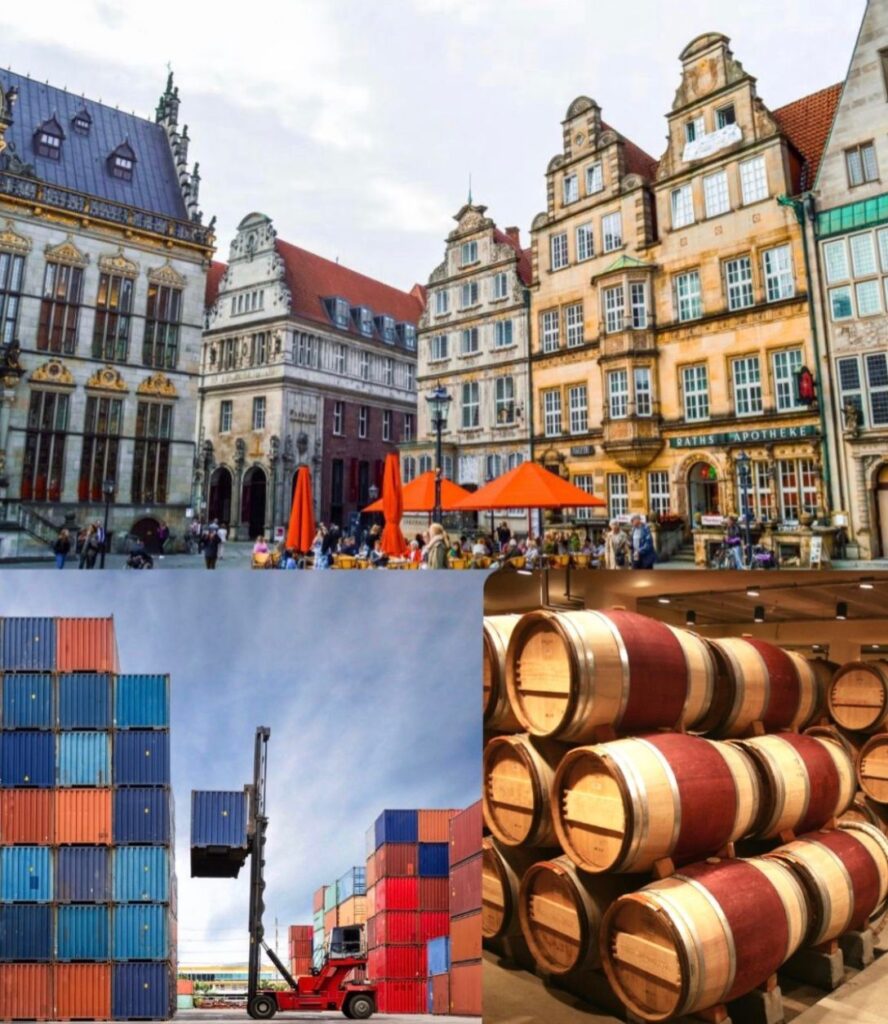
These companies are crucial in bringing a wide variety of wines into Germany, catering to both the retail and wholesale markets. They specialize in sourcing high-quality wines, including those that are organic or biodynamic, which are increasingly in demand. Bremen’s wine importers contribute significantly to the local economy, not just through the direct sale of wines, but also by supporting related industries such as logistics, retail, and hospitality. Bremen, like many parts of Germany, has a vibrant wine culture. Events like wine tastings and festivals are common, providing a platform for importers to showcase new products and for consumers to explore wines from different regions of the world. Some sources, such as industry databases and local trade directories, list around 30 to 50 importers that are specifically focused on wine. This includes both companies that solely import wine and those that include wine as part of a broader portfolio of imported goods
Denmark: A Growing Market for Wines from Eastern Europe.
Denmark’s open wine market and curious consumers make it a great place for wines from both well-known and lesser-known regions. While wines from France, Italy, and Spain are still popular, there is a rising interest in wines from Eastern Europe, including countries like Hungary, Georgia, Slovenia, Romania, and Bulgaria. These regions offer unique grape varieties like Hungary’s Furmint, Georgia’s Saperavi, and Romania’s Fetească Neagră, which bring new and exciting flavours to Danish wine lovers.
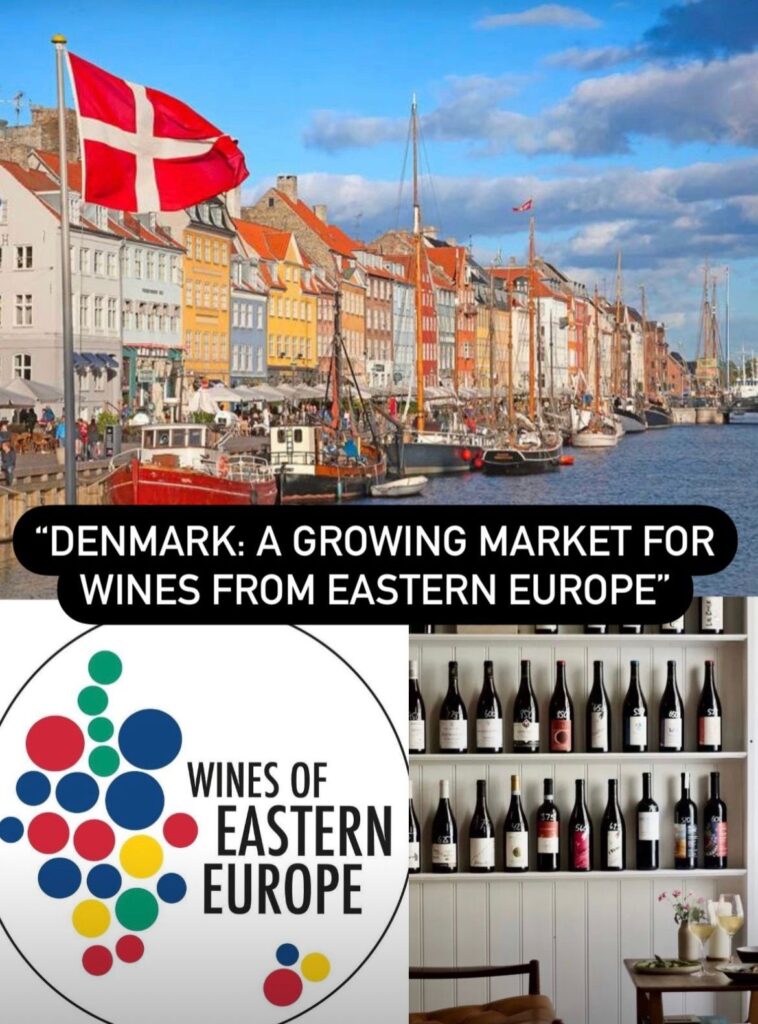
Eastern European wines are special because they combine old traditions with new, innovative methods. For example, Georgia’s ancient winemaking style using clay vessels called Qvevri adds a sense of history and uniqueness. Danish consumers, who enjoy trying natural and organic wines, also appreciate that many Eastern European producers focus on sustainable and low-intervention practices.
These wines offer excellent quality and making them attractive. Danish wine shops, restaurants, and wine bars, especially in cities like Copenhagen, are starting to showcase these wines, giving them more attention. Importers in Denmark help bring these hidden gems to the market, giving smaller producers a chance to succeed.
With Denmark’s central location, it also acts as a gateway to the Nordic region, helping Eastern European wines reach neighbouring markets like Sweden and Norway. This growing interest in Eastern European wines shows how Denmark values diversity, quality, and exciting new choices.
Southeast Asia’s emerging wine market.
In Southeast Asia, more people are drinking wine as their incomes grow and they become interested in global trends.

In Thailand, cities like Bangkok and Chiang Mai are seeing more wine bars and fancy restaurants.
In the Philippines, wine is becoming popular in cities, with new wine shops and online stores making it easy to buy.
In Vietnam, the growing middle class is enjoying wine as a mark of sophistication, and there are more wine shops and international options available.
In Indonesia, people, especially in cities like Jakarta and Bali, are starting to show more interest in wine. Growing tourism increases the wine consumption as well.
Malaysia is also seeing a rise in wine drinking, thanks to more high-end restaurants and wine clubs.
Singapore is a major center for wine in the region, with many international wines and wine events.
Even in Cambodia and Laos, urban areas are beginning to embrace wine. Overall, Southeast Asia is seeing a big increase in wine drinking as more people explore and enjoy it.
Why is the Netherlands an attractive Wine Market?
The Netherlands is a great place to sell wine because the people are curious and open to trying new wines from around the world. Its central location in Europe makes it easy for wine importers to bring in and distribute wines to other countries.
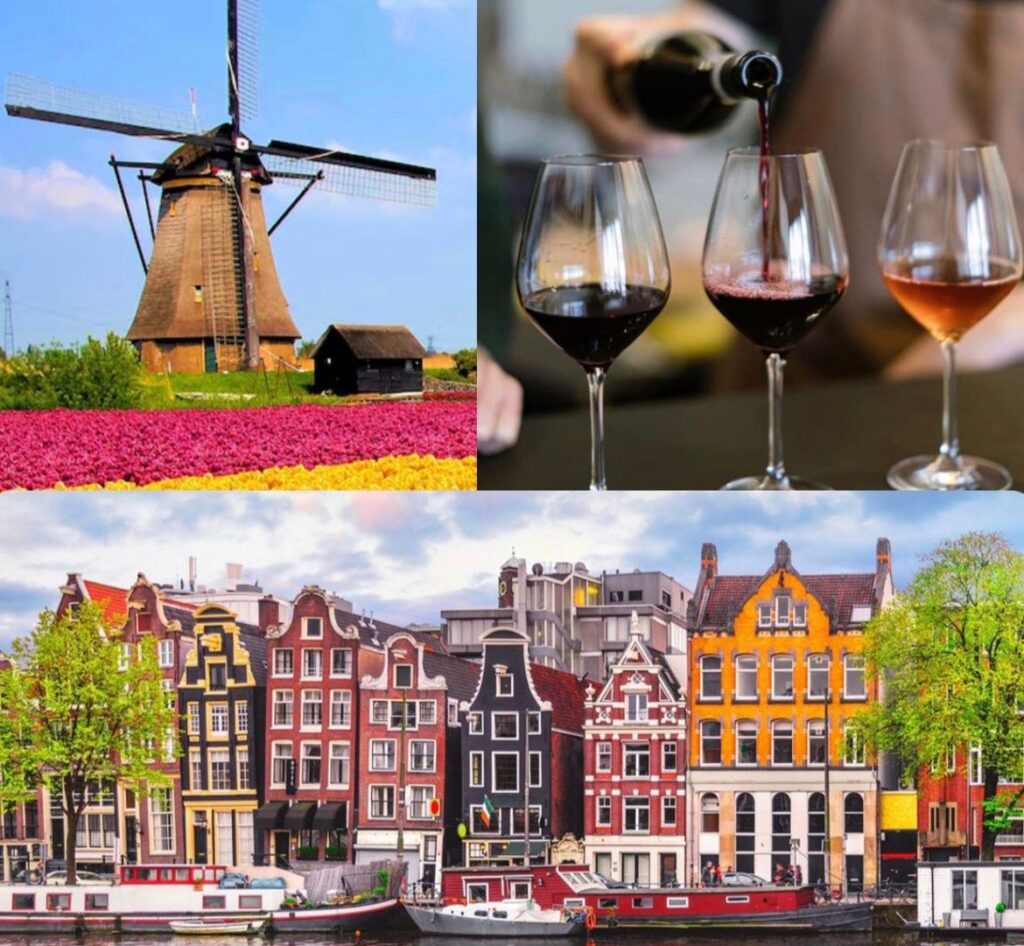
Dutch people enjoy good food and drink, so there are many restaurants, bars, and wine shops looking for interesting wines. Online wine shopping is becoming more popular, which means more opportunities for sales. The Netherlands also has good trade policies that make it easy for wine importers to do business. Organic and sustainable wines are becoming more popular because Dutch consumers care about health and the environment. The market is also very diverse, offering opportunities for both affordable everyday wines and premium, high-end bottles. With a strong economy and a stable consumer base, the Netherlands continues to be a reliable market for wine importers and distributors.